












A LARGE PART OF THE SURPRISE may have been that the crisis first occurred in the lower skilled employees – the ground staff and baggage handlers. But, by all accounts, a pilot shortage is going to hit the international airlines hard.
Southern African airline CEOs say they are not yet concerned about a pilot shortage, as South Africa still has a glut of pilots from the collapse of Comair, Mango and SA Express.
What South Africa already has, is a shortage of skilled and experienced engineers and avionics technicians. The legacy of decreasing apprenticeship training is about to start biting general aviation operators. The travails suffered by SAA Technical caused a flood of early retirements and a loss of skills to the industry. The businesses that are doing well and struggling to keep up with demand are the good AMOs with an established and stable workforce.
The skills shortage has already arrived in the USA. At this year’s NBAA, a workshop was held to address the skills shortage. According to Boeing’s industry reference Pilot and Technician Outlook for 202241, there is a projected global demand for 610,000 AMEs over the next 20 years, compared to a need for 602,000 new pilots, excluding business aviation.
Another theme at the NBAA workshop was how the norm of doing a university degree (often in the humanities) after matric, as opposed to pursuing a less glamorous trade, is still a stigma that is alive and well. NBAA’s director for Environmental and Technical Operations, Stewart D’Leon, offered an interesting perspective on how to attract talent without taking on the challenge of completely changing this fondly nurtured belief: “I don’t recommend mandating to someone that they need to choose between college and a trade. It really is about figuring out what’s best for the individual,” he said.
The good news is that training a workforce to attain the coveted skills that AMEs possess requires less of a financial investment for parents, or employers, compared to becoming a pilot. And as reported in this issue – TETA bursaries are available.
With an ethic hard of work and a reasonable investment, a school leaver, or an individual looking to change careers, can claim the rewards of their labour earlier on, though nothing seems to be a quick fix regarding the ongoing skills shortages.
j

As the global aviation industry bounces back surprisingly strongly from the Covid calamity, it was inevitable that the system would start breaking under the pressure of lost skills.














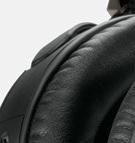






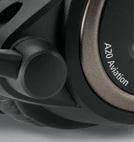
















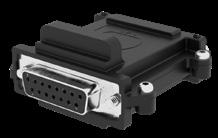
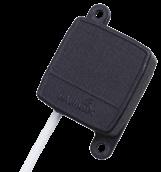





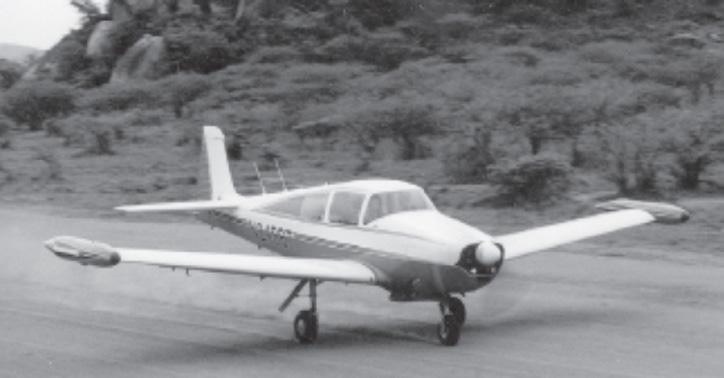





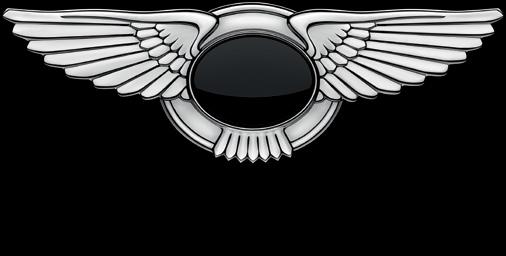

Power: 485 kW (659 hp); Torque: 900 Nm; 0-100 km/h: 3.6 seconds; Maximum speed: 335 km/h.
from R5 125 000 with a 3 year/100,000 km Driveplan

CLOSE-UP THERE ARE FEW THINGS quite as impressive as the wheels of a Boeing 747. But it is hard to capture the sheer grit and power, plus the elaborate complexity, of these enormously stressed components. One photographer who has succeeded is Lars Veling. Lars used a Canon EOS 5D Mark III, with a shutter speed of 1/640s and ISO 400. The lens is 800mm at f/8.0.


AVIATION’S BIGGEST PROBLEM is also not the increasingly critical pilot shortage, or the lack of aircraft maintenance engineers. It's also not the massive shortage of ground handling staff and check-in people which snarled up the airports.
None of the above.
If the wrangling behind the scenes of this year’s ICAO General Assembly is an indicator; the single largest crisis facing the aviation industry right now is carbon reduction. That’s right; saving the planet is the most urgent problem.
Aviation contributes less than 2% of the world's total carbon emissions yet, like a gut-shot baboon, the industry is tearing itself apart by aggressively trying to convince the world that it is the champion in carbon emissions reduction.

The world’s airlines have embraced CORSIA, the Carbon Offsetting and Reduction Scheme for International Aviation. The big hairy goal is to have carbon neutral growth from 2020 by forcing aircraft operators to purchase carbon credits on the carbon market.
The Scheme is voluntary until 2027 but thereafter it becomes compulsory – and expensive. It is therefore not surprising that CORSIA and its awkward step child, the drive for Sustainable Aviation Fuel (SAF) is treated with great suspicion by African airlines.
The reasons are simple. Perhaps the least spoken about, but most insidious problem with Africa's adoption of CORSIA is that it is perceived to be a ‘First World’ problem. Western airlines are responsible for more than half of the airline industry’s carbon emissions, not the tiny
We will make the Vandals look like Mormons.
Who wudda thought it?
According to ICAO, the biggest crisis facing the airline industry today is not the sky-high price of fuel – or the problems of actually getting it to the airports when gas pipelines are being blown up and tankers get caught in storms.
African aviation industry which accounts for a minuscule 1.8% of world airline activity. Africa’s response is, “Don’t make your problems mine.”
The other big reason African aviation does not care much for CORSIA is that very few African airlines operate sustainably – almost all the airlines lose money. So why would want to spend money they don’t have on making First World airlines more sustainable?
This dismissive attitude by African aviation is what makes the election of South Africa's Director of Civil Aviation, Ms Poppy Khoza to the Presidency of the 41st ICAO General Assembly all the more ironic.
At the ICAO General Assembly the buzzwords were CORSIA and SAF. And no, SAF doesn't refer to SA Flyer, but to Sustainable Aviation Fuel. The airline industry likes SAF because it provides a large reduction in greenhouse gas emissions with little change to current engine
and fuel tank technology. SAF is a ‘drop in solution’ meaning that aircraft can use a 50% blend of SAF and JetA with no modification. Sounds great.
Imagine how much used cooking oil comes from the MacDonalds and KFC deep fryers around the world. What better way to use it then burn it in jet engines at 38,000 ft? And when you have used all the cooking oil, you can grow it as a crop, as demonstrated by Boeing’s ‘Project Solaris’ experiment in South Africa in 2014.
Boeing’s Project Solaris was a publicity stunt where it flew a 50% mix of SAF in a Mango Boeing 737. The source crop was a tobaccotype plant called Solaris. However, in the end, the crop largely failed, with what little that was cultivated being shipped to the West Coast of the USA for processing and then shipped back as SAF. The cost must have been astronomical.
It may have been an expensive PR stunt – but
Contrails make the aviation indusrty and oversize target for the Greeenies - and ICAO.

the optics are important. Airliners fill the sky over cities and leave contrails which flat earthers think will kill us all. Business jets come in for particularly venomous opprobrium.
More than ten years ago I wrote an irate monologue about how indignant I felt about the profligacy of John Travolta’s jets. He had called his Gulfstream 2 from Los Angeles to fetch him in the Azores. It seemed to me then to show complete disrespect for the environment. It was as offensive to me then as it is now when I see litter thrown out of taxis, but maybe I’m just middle class. Perhaps I should explain, but to do so I need to take you back to my youth and how, when we are young, we have broad minds and a narrow waist....
longer to fall out of fashion, although thankfully some of the big scare stories have quietly faded away.
My bullshit detectors were long overloaded by the Greens claiming that global warming will melt the ice caps and make Bloemfontein a flower fountain in the middle of the everexpanding Kalahari Desert. Yet, whatever happened to the hole in the ozone layer? Or El Nino to blame a hot day on?
When I was young and impressionable, my broad mind was largely empty and therefore as receptive to fashionable ideals as Julius Malema is to conspicuous consumption. I had read a little book called ‘Small Is Beautiful’ by Fritz Schumacher, who despite his name, was an English economist. Fritz reckoned the modern industrial economy is unsustainable in that it would consume itself and choke under its own pollution. A typical statement of his, and one which particularly applies to air transport is: "Ever bigger machines, … exerting ever greater violence against the environment, do not represent progress: they are a denial of wisdom. Wisdom demands a new orientation of science and technology towards the organic, the gentle, the non-violent, the elegant and beautiful."
This pop-science was as popular as the mini skirt, but like any fad, it became uncool. In the intervening forty years, no doubt thanks to their merits as eye candy, mini skirts have made one or two comebacks. However, the brain candy of warm fuzzy environmental concerns has taken
The obvious target of blame are people like John Travolta who use airliners designed to efficiently move hundreds of people to carry just one of two people in splendid isolation. The hubris and waste is staggering. Over a typical year Travolta creates around 800 tons of carbon emissions. According to a study by the British government’s Carbon Trust, Travolta boasts a carbon ‘footprint’ nearly a million times that of the average African.
But is it fair to pick on movie stars for the amount of carbon they produce? Well not really, because the total amount of CO2 emissions they produce is miniscule. Indeed the total emissions from all bizjet usage is irrelevant. Their problem is that they are a high profile and juicy target for the greens.
The key difference between the hysteria of the environmentalists now and thirty years ago is that this time, instead of just moaning, they have a plan for us: CORSIA, – and we are all going to have to pay for it every time we buy an airline ticket.
As mentioned, CORSIA’s goal is to have a carbon neutral growth from 2020. Above this cap, operators will be required to
purchase credits which would be used to pay compensation to those poor nations with rain forests to not cut down the trees.

Not unexpectedly, many consider these proposals absurd and unnecessary. To put the total business aviation impact on the environment into perspective, general aviation in the whole of the United Kingdom uses as much fuel in a year as is consumed by traffic in one day during a London rush hour.

And what about other pollutants? Apart from the obvious culprits like cars, there are claims that the massive growth of domestic livestock is damaging the atmosphere from their methane flatulence.
And SAF? Do we really need to be so concerned about our consumption of fossil fuel? After all, the free market has proven to be very effective in finding alternatives like fracking when supply shrinks and so price goes up.
The trouble is, SAF is not (yet) a viable alternative to fossil fuels for jet engines. If we relied on SAF completely it would consume the world’s agricultural output and we would
be hungry. (Interestingly Henry Ford expected cars to run on vegetable matter fermented to produce ethyl alcohol). And, even if environmentally friendly fuels like hydrogen could ever overcome their bulkiness and risks to become a viable option, making hydrogen would still consume enough energy to destroy the atmosphere.
Perhaps there is no single answer. One of the best suggestions has been to offer a massive U$25 million prize to anyone who can find the best way of sequestrating carbon out of the earth’s atmosphere. In the meanwhile, it wouldn’t hurt aviation if the more ostentatious examples of conspicuous consumption could wind their necks in a bit. I fear that future generations are going to judge our generation most harshly. We will make the Vandals look like Mormons.
Man has spread like a cancer across the planet and we are burning down our home. Let’s all be more sensitive to the legacy we will leave behind.j
The new Urus Performante is the extreme evolution of its predecessor. The most exclusive model in the Urus family raises the bar and sets a new benchmark with elevated levels of performance, lightweight, aerodynamic design and sportier driving dynamics. Lower, wider and lighter by 47 kg, thanks to extensive use of lightweight carbon-fibre components, the Urus Performante’s performance is unyielding: 490 kW (666 PS) of power, acceleration from 0-100 km/h in just 3.3 seconds and a top speed of 306 km/h. For bar raises only.

Sold with a 3 year/100,000 km Driveplan at no additional cost.



IN AN ARTICLE ON THE 2012 crash of a Pilatus PC-12, I faulted the National Transportation Safety Board for mixing up indicated and true airspeeds. Actually, it was I who misread the report. I am indebted to reader Timothy Burtch, an accident investigator with the NTSB, for pointing out that the maximum speed of 338 kt that the aeroplane reached in a spiral dive before it broke apart was, in fact, an indicated airspeed, not a true one, and that the aeroplane did, therefore, exceed its manoeuvring speed by 175 kt as the report stated.

The Pilatus, with a family of six aboard, was climbing through FL250 in IMC. It was at 109 KIAS, in a 25-degree right bank, deviating to avoid an area of rain, when the autopilot disengaged for unknown reasons. Presumably a chime sounded and a warning light illuminated, but the pilot seemingly did nothing to take over control of the aeroplane. A baffling aspect of the accident was the pilot’s apparent failure to act even when the aeroplane was vertically banked and plunging downward at an horrific rate.
Within 10 seconds of the autopilot disconnect,
the angle of bank had increased to 50 degrees and the plane had begun to descend. After 30 seconds, the bank angle was 100 degrees and the plane had lost 2,600 feet. In the next 13 seconds, it lost another 5,900 feet while the positive load factor increased to 4.6 G. At 36 seconds the indicated airspeed, having peaked at 338 kt – 430 true -- dropped to zero, suggesting that the breakup – the aeroplane lost its horizontal stabiliser and portions of both wings – had taken place somewhere around 15,000 feet.
Almost any aeroplane will enter a spiral dive, sooner or later, if no attempt is made to control it. Some may fly hands-off for many minutes in smooth air, but if they are disturbed by a gust, or if they are banked in the first place, they will inevitably bank more and more steeply, the nose will drop, they will pick up speed and the turn will continue to tighten, and the rate of descent to increase, without limit.
Builders of free-flight models may object that their planes can remain right side up indefinitely; but that is because models have much more dihedral effect than piloted planes do. If your plane had the lateral stability of a free-flight
model, it would be reluctant to bank and fatiguing to fly. For the sake of manoeuvrability, therefore, we accept the necessary evil called “spiral divergence.”
In VFR conditions hardly anyone gets into a developed spiral dive unless he literally falls asleep at the wheel. It is the pilot lacking instrument flying skills who stands the greatest chance of experiencing a spiral dive if he loses the visual horizon. In this case, however, what made the sequence of events doubly puzzling was that the pilot was both instrument qualified and current.

dynamic pressure of air at that speed is 39 pounds per square foot (190 kg/m2). The wing loading of the aeroplane, which was probably near its gross weight, was about 36 psf (176 kg/ m2), and so the lift coefficient, which is the ratio between the lift force and the dynamic pressure, was about 0.9.
The procedure for recovery from a spiral dive is simple: power off, level the wings, slow down. But there are potential pitfalls even in this simple recipe, and the Pilatus may have encountered one of them.
The aeroplane was trimmed for 109 KIAS. The
The dynamic pressure at 338 KIAS is 337 psf (1,645 kg/ m2) and the lift coefficient in level flight, if level flight were permissible or even possible at that speed, would be about 0.1.
Normally we don’t talk much about lift coefficients in the context of piloting, as opposed to designing, an aeroplane, but they are of interest in this case because G loads can be thought of as the ratio of two lift coefficients. If, for example, the Pilatus is trimmed for 109 KIAS and a lift coefficient of 0.9, it would experience an acceleration of over 9 Gs if its indicated airspeed were, by magic, instantly increased to 338 KIAS. Another way to
put it is that the acceleration is the square of the ratio of the high speed to the trimmed speed. Thus, if you were trimmed for 100 and you were suddenly indicating 300, the speed ratio would be 3 and the resulting G load, as the aeroplane seeks to return to its trimmed speed, would be 9 G.
That is not physically realistic, however, because in the real world speed cannot instantly change from 100 to 300. But you don’t need 9 Gs to break an aeroplane, either. Six Gs will do it, 5 in some cases, and that would have occurred at 270 KIAS or less. In other words, if you are trimmed for 109 KIAS when some sort of upset occurs, you pick up a lot of speed in a spiral dive, and when you level the wings the airspeed indicator is showing over 270 kt, you are entering the neighbourhood of a normalcategory aeroplane’s ultimate load factor.
the limit load factor, is the one where big pieces break off. Pilots will sometimes speak admiringly of an aeroplane that pulled far more G than it was supposed to and still held together. From the point of view of the occupants, that is clearly a good thing, but from an engineering standpoint it isn't; it means that the aeroplane is more heavily built than it should be.
So a caution has to be appended to the recovery procedure for spiral dives. After you roll the wings level, the aeroplane is going to try to return to its trimmed speed. Normally, this will not be a problem. If you are cruising at 150 KIAS and you look up from a chart or your iPad to find yourself in a 60-degree bank and the airspeed indicator winding through 220, you are not going to take the wings off the aeroplane by just levelling out. You’ll pull a couple of Gs, perhaps, but nothing will break.
The ultimate load factor is not the one where you limp home with wrinkled wing skins. That’s called the limit load factor. The design limit load factor for most general aviation aeroplanes is 3.8 G. The ultimate load factor, which by a handy convention is deemed to be 50% higher than
It’s when you’re flying at low speed, for example climbing, as the Pilatus was, and then get into a dive at very high speed, as it did, that the recovery may involve dangerously high load factors, especially if you try to help it along with a pitch-up command. What is actually called

for is nose-down trim and a forward push on the yoke. Otherwise the aeroplane may overstress itself even with no help from you at all. Fortunately, when a pilot feels G building up a forward push is the instinctive reaction.
In-flight breakups are rare, but they occur regularly enough to be worth talking about. Sometimes an aeroplane emerges from the bottom of the overcast already in pieces, but I suspect that some breakups occur only after the aeroplane has emerged into the clear. Then the pilot sees the ground in some highly unfamiliar position and instinctively overcontrols while trying to put it back where it belongs. This is a danger even when the overcast is quite high and there is ample room underneath for a more gradual recovery.
A common piece of advice for VFR pilots who have blundered into IMC is to lower the landing gear. As a young pilot I used to wonder what in the world the landing gear could do to keep
the aeroplane upright, but I was barking up the wrong tree. The authors dispensing the advice evidently considered it so obvious that they did not bother to explain that the purpose was to increase drag and thus to limit the speed gain in an inevitable spiral dive.
In the extreme situation in which the Pilatus found itself, lowering the gear could be part of the spiral dive recovery: power off, level the wings while trimming nose-down, lower the gear – never mind the doors – and don’t let the nose rise too rapidly. In a reciprocating-engine aeroplane, drag can be further increased by pushing the prop to high rpm.
The essential point, however, is to limit G while reducing speed. If the plane were going to come apart because of sheer speed, it would already have done so. It’s the G forces that pilots apply in their urgency to stop pointing downward that end up breaking aeroplanes. j
In a strong echo of Guy Leitch’s column this month, American corporate pilot Fred George, posting on Facebook about the sudden mania for Sustainable Aviation Fuel writes:
“Sustainable Aviation Fuels are the only ways civil aviation, as we know it, will survive in the era of the Greta Thunbergs of this world. As Erik Lindbergh recently said at NBAA, “We have a target painted on our backs.” Currently, we produce 10-million gallons of SAF per year. We consume 35-billion gallons of jet fuel per year. Your ideas, please, how to we achieve this 3,500 times increase in SAF production? Fighting this issue only will aggravate the challenges we all face.”
I NEVER IMAGINED MYSELF as a writer and most definitely did not dream of a regular monthly column. But anyone who knows me will attest to the fact that I love the aviation (and helicopter) industry, since childhood I have devoured anything I could find about aviation, particularly its history, and I enjoy sharing my knowledge even more, especially with peers.


That’s how this all got started. Sometime earlier that year, I had plunged into a debate with a fellow enthusiast on a local aviation online forum. After several interactions, he asked whether I had ever thought of writing. I hadn’t but figured I might have something of value to say. He put me in touch with Guy Leitch, SA Flyer’s editor and owner, and I sat down nervously to pen my first article.
From the start, I’ve tried to make my column both as informative and encouraging as possible. Every year that goes by, South Africa as a whole (and its aviation industry in particular) seems to become more dismal. Talk around a braai will invariably gravitate towards the state of SOEs, crime, loadshedding and where South African Airways is heading, or isn’t. But in all my time flying helicopters, I’ve seen a lot of good done, have had some amazing experiences, made some deep, valuable friendships and have attempted to highlight many of them in my writing.
In that first column, I wrote about a joint SAPS/ Bidvest Protea Coin security operation, and how at the time of writing we had amassed 7,000 operational hours on many types. Today, four
In the October 2018 edition of SA Flyer, regular readers of the magazine would have noticed a new “Heli Ops” column appear on page 46. In that first column, I introduced myself, “The Silver Fox,” as well as several themes that I would build on as the magazine moved from its printed version, through a Covid-19 induced lockdown, to where it is now, online.
That’s how this all got started
years later, that stands at close to 20,000 hours, made possible by the number of pilots (both experienced and rookies) I’ve had the honour of working with, mentoring and being mentored by.

As I reminisce about my flying career, the words of Charles Dickens come to mind: “It was the best of times, it was the worst of times, it was the age of wisdom, it was the age of foolishness …” I covered search and rescues, and the many successes of our FLIR camera-fitted Robbie R44, from tracking diesel thieves at night, to helping prevent Cash in Transit robberies, from helping find a lady who had been abducted while walking her dog, to tracking an escaped
Kalahari lion that had gone on a cross-country jaunt to freedom. We don’t, however, only learn or grow because of our successes. Much of what I felt I should share, with training in mind, was the near misses – how we were able to overcome them and hopefully show how to prevent them in the future.
Another thread throughout my column is the brotherhood (and sisterhood, of course) within our rotarywing industry in Southern Africa. I highlighted organisations doing amazing humanitarian work like Mercy Air, CRoW mountain rescue and Helimission, as well as ground crew and operational crew, all of whom have had a huge impact on me as a pilot.
A scripture in the book of Revelation speaks of the value of our testimonies. With that in mind, I only reviewed helicopters that I had personally flown. Most of my articles spoke about my much-loved, most-flown Robbie R44, but I also gave my thoughts about others like the old warhorse Aérospatiale Alouette III, Airbus AS350 ‘Squirrel’, Robinson R66, Bell 407, and the Bell 206 Longranger. Articles about low-level operations and the dead man’s curve, flying in Highveld thunderstorm weather, air rescue training and the different routes to becoming a helicopter pilot were, likewise, all based on very personal experience.
Four years on, and it’s time to take a break from writing. Not because I have nothing more to say, but managing up to 20 aircraft and multiple pilots across South Africa daily, while raising five energetic kids, and also flying regularly, means I don’t have the time

The reason we can fly.

to keep putting my all into my writing. I’ve loved the journey and hope I’ve helped enhance careers, and encouraged budding pilots with my words.


I leave you with my closing paragraph from that first article in 2018, which are as relevant today as then, “… a word to younger pilots embarking on an aviation career: Develop your skills to the point of being indispensable to your employer, and never get comfortable, as comfort is complacency, and complacency is a pilot killer. Train and stay sharp, but also be friendly … Invest yourself into whatever community there is; it is there that we develop personal character. Stay the course, so that when opportunity knocks, you’ll be there to open the door.” j
A much wider influence than I could ever have dreamed.
THIS IS GREAT FOR SPOTTERS – but what about a handheld GPS/Comm radio for pilots?
Radiant Technology’s AirLite Pro is just an aircraft radio scanner. Radiant says it receives all VHF channels between 118 and 137 MHz. It also provides simultaneous reception on two different frequencies, allowing a listener to monitor frequencies, such as tower and ground, at the same time.

Other features include:
• A GPS receiver, allowing latitude/longitude and altitude determination, along with position save capabilities.
• Storable channel memory locations that allows scanning of the user’s preselected list of frequencies
• FM radio, for leisure listening
• NOAA Weather Channels (in the USA)
• VOR Rx (Voice) support for 108 to 118 MHz
At time of writing, we don’t know whether it will need an ICASA licence – or whether if it does, it will get one considering ICASA’s notorious terrible service.
The price is a reasonable $129.95 - hopefully around R2,200.00 j
It’s been a while coming – but finally we have a handheld radio scanner with GPS.Radiant Technology’s AirLite Pro scanner and GPS.
At altitudes like these, a lot can happen. And whether you’re a professional or recreational drone pilot, there are a number of risks that can lead to the damage of your drone. Which is why you need the right expertise to protect your drone from the risks that are obvious and the ones that aren’t. Santam. Insurance good and proper.

For more information, visit santam.co.za or speak to your broker.
Santam is an authorised financial services provider (FSP 3416), a licensed non-life insurer and controlling company for its group companies.
THIS IS A FASCINATING STORY. It started with me spotting the name Ray Hart in my logbook and thinking; ‘this is a feel-good flying story with a strong safety message.’ Then I remembered an almost unbelievable flying exercise that Ray used with his fleet of trawlers.
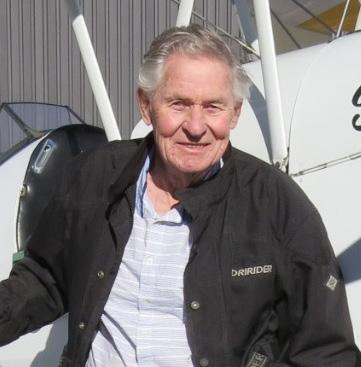
In fact, it was so incredible that I googled it to see if it was true. It was indeed. It was developed by a missionary who used it in his Piper Cruiser in Ecuador in the 1950s.
And this extraordinary flying exercise has now been copied by military and civil drone manufacturers. I will explain shortly.
So after that rather lengthy intro, here we go.
Ray Hart was one of my most favourite people ever. He was indeed a gentle man – kind, thoughtful, and quietly spoken. He always had a good word for everyone.
He was also incredibly good with his hands –Ray could make anything and fix anything. His flying was smooth and accurate and he always knew what was going on around him. I’d be happy for my family to fly with Ray any day.
We both held the rank of Captain in 109 Commando squadron of the SAAF. I flew with him often in both civie and military capacities. In fact, I had recently done his IF renewal test in his old V-tail Bonanza, so when it was time to do his annual wings test I knew it would be a formality.
I couldn’t have been more wrong – Ray’s flying was terrible. He was like a 100 hour pilot who hasn’t flown for ten years.
It was a beautiful, calm, early morning in George when we walked round the preflight on his Bonnie, ZS-DOB.
We were both in uniform. I am one of those untidy, gangly okes who never really looks smart, and Ray, although physically more compact, always appeared vaguely unclean. He owned a fleet of deep-sea fishing boats and he never quite managed to rid himself of the smell of yellowtail. And there were always traces of diesel gunge under his finger nails.
Even before we got into the air I could see small things going wrong. He shifted uneasily in his seat and fiddled with stuff while we were taxying.
What have a missionary with a bucket and a fisherman with a Bonanza, got to do with the future of military drone technology?
I could see small things going wrong

He didn’t stick to the centreline, his radio procedures were a bit ‘say again’, and he didn’t check that my door was closed properly. Little things, but not the polished performance I had learned to expect from him.
Actually they were exactly the sort of things that warn a testing officer that his performance is not going to suddenly perk up in flight.
And that proved to be true with Ray – if anything things got worse after the wheels left the runway. I couldn’t believe this was the same guy whose flying was usually so immaculate. The final disappointment was his forced landing which he misjudged badly. I had given him the first half of runway 29, so he had a full kilometre of smooth tar.
down in the autho book as a practice flight test. A guy like Ray simply doesn’t fail flight tests. I was completely flummoxed.

I’m not very good at the fatherly thing – in fact Ray was quite a bit older than myself, but I felt I had to ask if something personal was playing on his mind. He assured me there was nothing like that. I was greatly puzzled by his terrible performance – I knew it wasn’t a hangover as Ray didn’t drink. He had been an alcoholic many years ago and had the strength of character to cut it out completely. And then it struck me.
you shouldn’t fly on an empty stomach
Now a Bonanza with the gear out and full flap doesn’t so much glide as plummet, but Ray still landed so fast and deep that we would have sailed through the far fence.
Once we were on the ground I did something very naughty – I cut the test short and put it
“Ray, have you had breakfast this morning?”
“No, I was in a bit of a hurry…”
“Come back tomorrow, after breakfast, and show me how you normally fly.”
So that’s what happened. He passed his Wings test with the very rare rating of ‘exceptional’.
We all know that you shouldn’t fly on an empty
stomach, but I have never seen such a graphic demonstration of this.
Now I want to tell you something really remarkable about Ray’s flying, and I doubt that any of my readers have done this in an aeroplane, or even heard of it. In fact most will believe that it simply can’t be done. I’ll give you a clue – it was first done in Ecuador in 1956 by a missionary rather appropriately called Nate Saint.


Give up? It’s an amazing tale about an operation known as the Bucket Drop. Let me first tell you about how Ray used it, then go back to its origins, and then it’s future in military and drone technology. The whole thing is fascinating.
Ray’s fishing boats would go out to sea for a couple of weeks at a time. As the fish were caught they were chucked into the bottom of refrigerated holds, and when the boats were full, and lying deep in the water, they would wallow back into Mossel Bay harbour surrounded by a screeching squabble of seagulls.
Just out of interest, the fish at the top of the hold – which were only a day or two old – would be sent to Johannesburg and Pretoria, and the old fish at the bottom would be for the cheaper markets along the coast. This explains why, if you want top class fish you have to go to up-country restaurants – not coastal ones.
Anyhow, every now and then one of Ray’s trawlers would break down, or the all-important refrigeration unit would pack up, and they would
radio a message to Ray saying they needed a spare part – perhaps a fuel injection pump for the diesel engine, or something for the refrigeration plant.
Ray would get the part and then be faced with the interesting problem of how to deliver it to a
ship on the high seas, and this is where the Bucket Drop comes in. He would take the baggage door off his Bonanza and have an assistant with a bucket tied to a length of tough fishing-line. They would put the spare part in the bucket, Ray would slow the aircraft down to a little above stall speed, with plenty of flap, and then his winchman would lower the bucket overboard.

Initially it would trail out behind the aircraft. When Ray judged they had paid out enough line – I am guessing somewhere between 20 and 50 metres – he would start to circle with about 30 degrees of bank. If the airspeed was too fast, or the bank too steep –centrifugal reaction would fling the bucket to the outside of the turn – exactly what he didn’t want.

Anyhow, and this is the unbelievable part, when he got everything right, Ray was able to get the bucket pretty much stationary while the aircraft circled around it.
The next trick was to gradually move the bucket until it was directly over the deck of the fishing
boat and then follow the directions of a man on the boat whose job it was to indicate the height of the bucket above the boat. In this way Ray was able to lower the bucket onto the deck –just as efficiently as a helicopter.
Now Ray was not the sort of guy to invent a story like this – but hell it was hard to believe. And it was only quite recently that I started digging, and was able to confirm his story.
Let me take you back more than 65 years, to a place called Palm Beach on the other side of
the word – no not the famous one in Florida, and not even the less famous one in KwaZuluNatal. This Palm Beach is just a strip of sand on the edge of a river deep in the jungle of NE Ecuador.
We zoom in just in time to see a yellow Piper Cruiser landing on this little beach. The aircraft belongs to MAF (Mission Aviation Fellowship) and is flown by Nate Saint, a man in his early 30s with a wife and three kids.
drop method of delivering his gifts. Assisted by four other missionaries he used the bucket drop once a week to send down all manner of things: T-shirts, cooking pots, knives, machetes, spades and bright shiny trinkets like buttons.
He didn’t just go and land there –there was quite a build up to this landing. It started a few months earlier when he decided to befriend the local tribe, known to the world as the Aucas, Savage Killers, who were a notoriously vicious stone-age bunch – renowned for their barbaric slaying of neighbouring tribesmen, and anyone else who entered their territory.
Nate’s plan was to deliver presents to the villagers in order to make friends with them, and eventually start his Christian missionary work.
He thought parachuting stuff in would be clumsy and inaccurate, so he developed the bucket-
They judged they had become sufficiently friendly with the tribe when, one day they were surprised to find a present for them tied to the end of the line. When they reeled in the woven basket they found it contained, amongst other things, a live parrot. This bird lived with Nate’s family for many years and was particularly loved by Nate’s younger son Steve.
At this stage they judged it was safe to meet the people face to face. They also thought it would be safe to land on the sand bar. And so we see the little yellow Pacer landing there for the first time.
Initially, both their predictions proved true –the sand bar made an acceptable airstrip and Nate, with another missionary, met three tribe members, who quickly responded to their overtures of friendship. The missionaries took off later that afternoon and brought the good news

to their colleagues. There was much rejoicing as the five missionaries and their families gave thanks to God for their success.
Over the next few days they flew in some basic materials to build a tree-house for them to use as a base. They stayed there for one night and had arranged to radio their families at 5 pm the next day.
When the call didn’t come through, the families raised the alarm, and the next day a rescue party flew in with a helicopter to find the five bodies floating in the river with spears in their backs.
Strangely, the story doesn’t end there – the mission was determined to continue with their work and soon established that the killing of their colleagues had been a ‘mistake’.
Over time many of the tribe took up Christianity, and adopted the name Waodani, True People. Eventually Nate’s youngest son, The bucket drop flight path from above.

The bucket drop from the side.

Steve, was actually baptised into the faith by two of the people who had murdered his father, Kimo and Dyuwi when he was only five years old.
Steve is now 71 and for the past ten years he has been partially paralyzed as a result of an accident while testing an ingenious flying car that his company I-TEC developed.

It’s easy to say ‘not another one’ –but this is different:
• It’s the only one to be FAA certified and road legal
both civilian and military operations. It’s being developed by Boeing, Lockheed Martin, Aurora Flight Sciences and others.
• It’s the only one I know that hangs below a self-inflating paraglider wing
• It’s the only one to have excellent off-road capability.
Steve designed it for missionaries working in the bush, but it would seem to have uses for game operations, farming, line patrols and some military ops. A clever bunch that Saint family. Coming back to Nate’s bucket drop, as you know his system was copied by my mate Ray Hart and is now being copied again for
These companies are teaching drones to do the same sort of jobs that Nate and Ray learned to do. Basically fixed-wing ops between points, with some helicopter type versatility at the destinations. In the civilian world you may find your orders from Amazon, or your grocery store, being delivered to your front garden by a circling drone rather than a more expensive and complex quadrocopter. Medical supplies can be carried to distant and inaccessible spots way out of the range of quadrocopters.
Amongst military operations that are being considered is the delivery and return of nasty swarms of evil little things that can nail you in your concrete bunkers. It seems there are huge physical problems with recovering these critters – and one possible method being developed is to send in a circling drone that scoops them all, or most of them up with a net – much like Ray’s fishing trawlers.
And so the giant wheel of technology turns from the simple to the complex and back to the simple.
For those who feel compelled to rush out and give it a try – here some tips:
• You need about twice as much line as your pivotal altitude.
• For testing, a milk jug with some weight in it works ok.
• You have to let out line quite fast or centrifugal force will have a tendency to swing it wide and not drop into the centre of the turn.
• Once you have it on the ground, if you want to move the bucket location, just shallow out the bank a very small amount, then back to the original bank angle when you are 180 degrees from the intended direction of movement.

• It can get bumpy when you hit your own slipstream.
• Use a large open area, you don't want the bucket to get caught by obstructions.
• Have an assistant, don't try to do this alone.
• Make sure you can cut the line if it does get snagged.
• Don't get distracted and stall the aircraft or fly into something.
• I suspect you need CAA approval.
• Your insurance company may be interested. A fascinating operation.
PS: For anyone who doubted the truth of what I told you about Ray’s bucket drop, I will accept a short letter of apology wrapped around a bottle of Bells, sent to me at PostNet, Sedgefield.
j
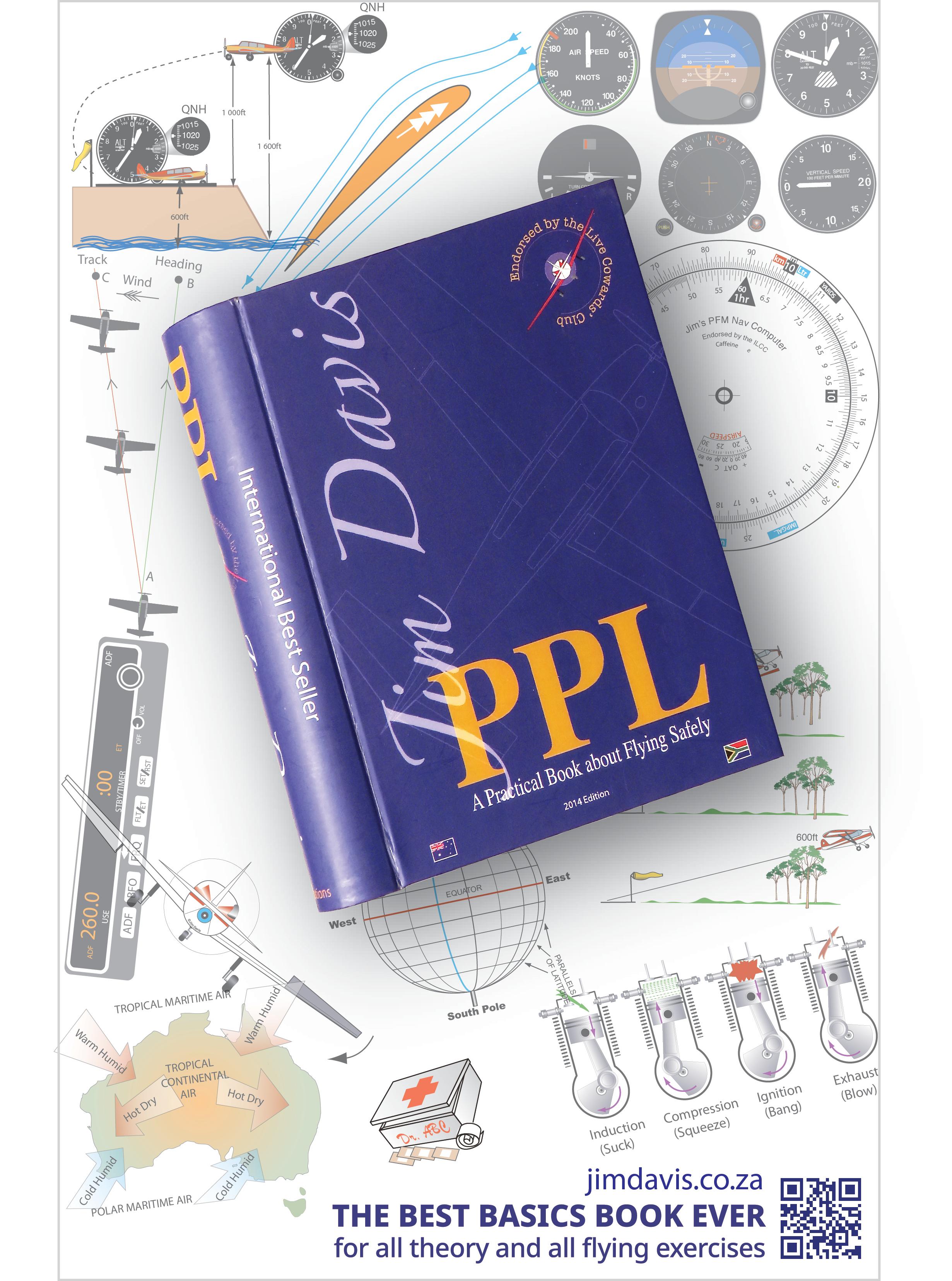













With
Ercoupe

THE ERCOUPE’S DEVELOPMENT goals were ambitious and revolutionary for the 1930s. A two-seater plane that would be safe, and aboveall, easy to fly. It had to be stall and spin proof and have a cruise speed of 100 mph - with just a 65 hp engine.
The development of such a plane began in the 1930s, when a small group of engineers at the NACA Laboratories started a private study that resulted in the building of the W-1 and W-1A prototypes having the these for then, very unconventional features:

1. The tricycle landing gear with castering nose wheel.
2. Strong longitudinal and lateral stability with limited upward elevator travel to prevent loss of control due to stalling and spinning.
3. Flaps to reduce the stall speed.
4. Dual controls for instruction.
In the 1930s light aircraft designers were stuck in the paradigm of rag and tube taildraggers with tandem seating and control sticks.
Stall-spin accidents and ground loops were common so aerodynamicist Fred Weick began experimenting with aircraft designs that would eliminate them. Weick’s first design was called simply the W1 and it won a competition for a stall and spin-proof plane. On the strength of his prize-winning design, he partnered with Engineering Research Company (ERCO) and changed his design to a low-wing model that became the ERCO Ercoupe.
The first flight was in 1937, with production following immediately. The 75-horsepower machines were inexpensive and a step above virtually everything else on the market. As the Great Depression ended, 112 were built, but production was stopped by World War II.
The humble Ercoupe must be one of the most under-rated planes ever. The reason ‘real pilots’ love to heap scorn at it is because it was designed to be as easy to fly as driving a car.
With the end of the war, Ercoupe joined the boom and bust of 1946 to 1948. Five thousand Ercoupes, with horsepower from 75 to 90, were rolled out of the factory in the two years before it closed.
The type certificate changed hands a number of times after that and a total of about 400 more planes were made under the Aircoupe, Alon, and Mooney names, but only those made by ERCO were Ercoupes.
To make an easy to fly plane with car-like ground handling, Weick introduced the then novelty of steerable tricycle undercarriage. To reduce the risk of stall and spin accidents, he combined the aileron and rudder controls and eliminated rudder pedals altogether, making it impossible to fly in an uncoordinated state. The pilot uses the yoke like a car’s steering wheel to steer the plane on the ground.
Weick created a sleek aluminium fuselage with twin vertical stabilisers and a canopy that could be opened in flight, so you can wave to groundlings.
The result was a plane that the American Civil Aeronautics Administration (CAA), the predecessor to the FAA— proclaimed “incapable of spinning,” and it earned a reputation as a fun, safe and easy means of getting in the air.

Ercoupes of various varieties were manufactured by a handful of different companies between 1940 and 1970, but the vast majority were built by ERCO. They built the first 112 examples in 1940 and 1941 and called it the 415-C. There was no 415-A or 415-B; the C indicated that it was powered by a Continental
The small twin
fins keep the rudder out of the propwash.
engine, and the number indicated that the Ercoupe was ERCO’s 415th product.
After a pause in production during World War II, 1946 to 1950 brought mostly minor changes to the plane, and the various ERCO models (415C, 415-CD, 415-D, 415-E and 415-G) differed mainly in horsepower and gross weight.
In today’s market, the most noteworthy ERCO models are the 415-C and 415-CD. These have a gross weight of 1,260 pounds and are the only Ercoupes that qualify under the 600 kg Light Sport Aircraft rules.
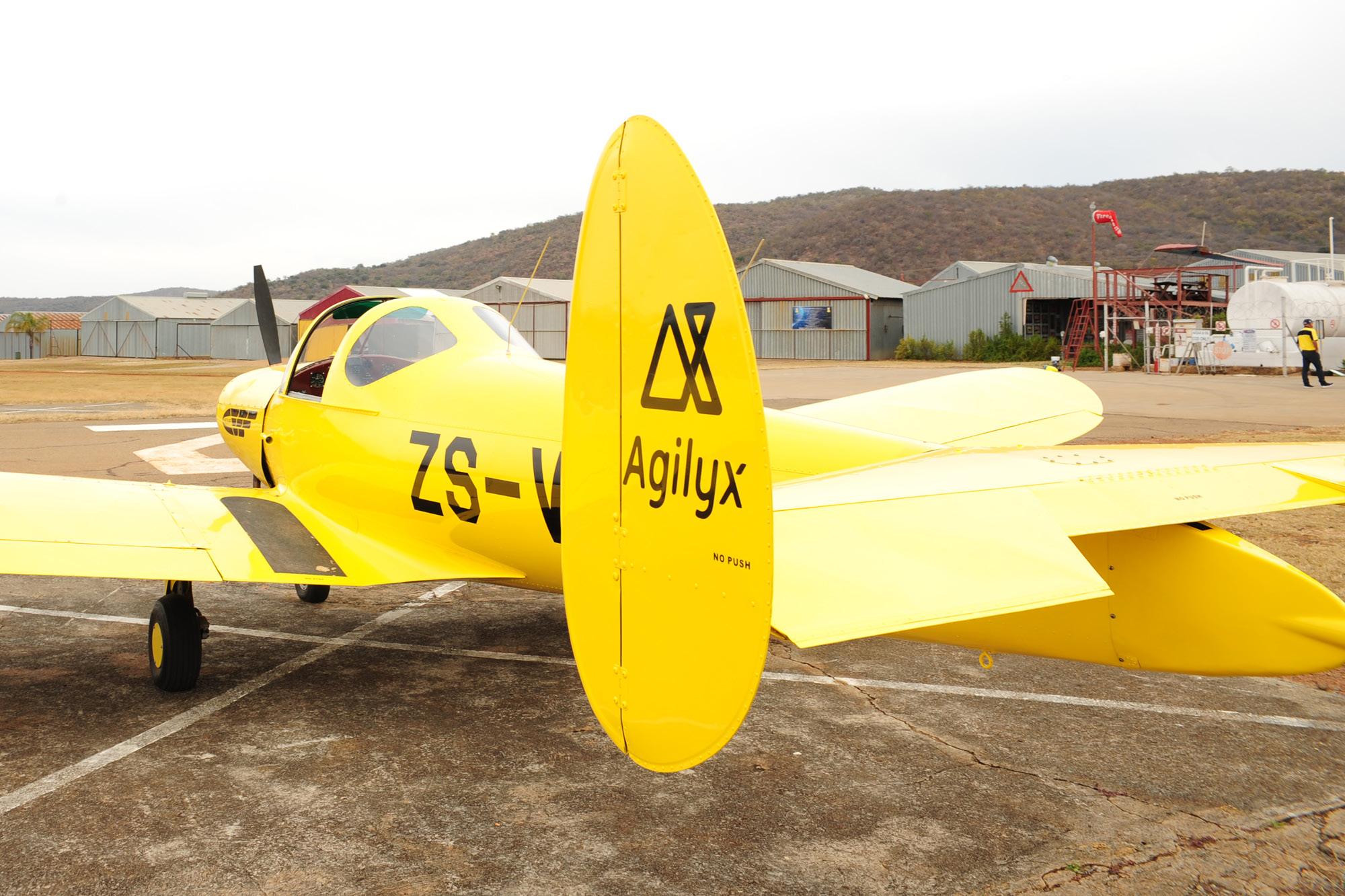
by Air Products Co. until the company changed hands.
After another pause a company called Alon took over production with the C-90-equipped A-2 Delux. The Alon models sported a bubble canopy that slid back to provide access to the cockpit, which was slightly wider than previous Ercoupes. All had metal wings, and some used spring-steel main gear legs in place of the traditional trailing-link main gear. A total of 297 examples were built between 1965 and 1967.
From 1958 to 1959, a company called Forney took over production, renaming the planes the F-1 and F-1A Aircoupe. These were equipped with the Continental C-90 engine and had metal wing skins. Approximately 25 F-1As were produced
The final manufacturer of the Ercoupe family was Mooney, which built 59 examples of the M-10 Cadet between 1969 and 1970. The Cadets are perhaps the easiest variants to pick out of a crowd because they stopped using the original’s twinvertical-stabiliser in favour of the trademark Mooney ‘backwards’ vertical fin – and it had traditional rudder pedals.
The vast majority of surviving Ercoupes are the 1946 to 1948 models built by ERCO, and most were equipped with the 85-horsepower Continental C-85. Our flight test aircraft ZS-VCE had an engine upgrade to the Lycoming 0-235 of 115hp in 1981 and at the same time, the conversion to give it normal rudder pedals. Although it carries a ZS- registration, it is in fact a non-type certified aircraft with the V in the registration representing a vintage aircraft.
down at any speed, giving it the feel of an opencockpit plane.
The purpose of the twin tail is to place the rudders outside the slipstream of the propeller, helping to reduce the left-turning tendency. Only the rudder on the inside of the turn deflects noticeably.
An Ercoupe’s distinctive design makes it stand apart from most other planes parked on a ramp, and its unique features become apparent as you climb into the cockpit. Instead of doors, the Ercoupe has two flexible plexiglass windows that are pulled up from each side to meet in the middle - similar to the cover on a roll-top desk. To get in, simply pull down one of the windows, slide down, and then pull it back up to close it. The Ercoupe can be flown with both windows

The Ercoupe has a clever roll-up window.
The Ercoupe has many amazing features – not least of which is its ability to land at almost any speed. This requires an extra pre-flight item. Check that the nose strut is inflated so that the top of the tail is exactly six feet three inches above the ground. This gives a nearly zero angle of attack at rest. It means that you must rotate on takeoff, but also means that once you put the plane on the ground and lower the nose, it is finished flying.
At around 39 inches wide, the cockpit has about as much shoulder room as comparable two-place planes. It’s still a cozy shoulder overlapping place though, and the baggage area behind the seats is relatively shallow.
Extended trips require careful packing.
The fuel system consists of two wing tanks, a gravity feed fuselage header tank, fuel pump, primer, fuel drains and a filter. The wing tanks (nine USG each) form the leading edge of the wing centre section. The wing tanks are interconnected by a fuel line which allows the fuel pressure and quantity to equalise.
Fuel is transferred by the engine driven fuel pump from the wing to the fuselage tank, and is then fed by gravity through a gascolator to the carb. Excessive fuel pumped to the header tank flows back through an overflow to the wing tanks.
While the earliest Ercoupes lacked electrical systems and, therefore, must be hand-propped, the vast majority now have electrical systems and starters.
The start is standard for a small Continental (or in ZS-VCE’s case, a small Lycoming). Turn

on the fuel (there is no mixture control) find the master switch (most are on the shelf behind the passenger), and turn it on; give the engine a few shots of prime, turn on the mags and press the starter. The small Continentals, when in good shape, seem to fire-up quickly the Lycoming tends to shake like an old dog a bit more. With the canopy open, the wind through your hair is a good indication that this little plane is going to be FUN.
A 1942 flight test report of the original single pedal model noted that taxiing is naturally different. On the original unmodified versions, because the aileron and rudder controls are interconnected, you simply drive the plane on the ground using the yoke as a steering wheel. The single foot pedal applies the brakes - hopefully equally. No differential braking is available, but steering on the ground is reported to be easy and precise.
For a small plane it likes big runways. The book says that at gross weight from sea level in
standard conditions, the 85 hp 415-E requires 2,100 feet to clear a 50-foot obstacle, and with most Ercoupes weighing around 900 pounds empty, the full-fuel payload can be modest in the LSA-compliant models.
Because of the zero angle of attack stance, you have to pull the wheel back to rotate at about 65 mph. Climb at 75 mph will generate about 500 feet per minute. If you climb too slowly, the P-factor left-turning tendency will mean that you must hold a lot of right wheel, causing significant drag from displaced aileron and rudder control surfaces, and a loss of lift, because the climb takes place with the right wing low, which does not help your climb rate.
The 85 hp Ercoupe climbs poorly below about 70 mph. Most Ercoupe pilots have had experience watching things off the end of the runway get larger rather than smaller. This distressing state of affairs is only aggravated by raising the nose and ruining what leisurely climb is available.
slowly by beneath the wing. The Ercoupe moves along at about 100 mph, burning a bit over 5 gallons per hour, which is most acceptable for going places without spending your children’s inheritance.
Roll into a steep turn and try to stall the plane. You will not succeed if the elevator is rigged correctly. When full-up elevator travel is reached, the ball will be in the centre, and you will be descending. At altitude the descent may not be easily detected without reference to the altimeter. However, it can become quite significant and get a pilot into trouble close to the ground. The solution is easy, and virtually instantaneous — unload the wing and fly level for a while to gain enough speed to climb.
One of the reasons the plane is so loved is that it handles sweetly. It soon becomes apparent that the roll and pitch controls are well harmonised for a plane of this vintage. Like the Slings, it has found that sweet spot between being overly responsive and overly stable.
In turbulence it bounces about, as do all planes with a light wing-loading. It challenges you to hold your altitude; and wallows due to adverse aileron yaw when making small control inputs. Yet, levelled off in smooth air, it more or less stays where you put it and seems, at all times, to be eager to respond should you desire to throw it about a bit. When you fling the wheel over, the roll rate is brisk. Interestingly, a faster roll input keeps the ball in the centre more effectively than do slower roll commands.
The canopy provides superb visibility, so travel by Ercoupe is to enjoy the countryside rolling
Landings in an Ercoupe are experiences to be shared. They can be performed in many different ways. Should you be so inclined, and if the nose strut is correctly inflated, you may touch down at cruise speed. When the aircraft is rolling on all three wheels, the angle of attack of the wing is nearly zero, so the plane will remain on the ground. Every owner seems to go out and confirm that the story is true, which it is, although such a landing has to be handled gingerly until you have slowed. Far more pleasant is to approach at about 80 miles per hour, slowing to about 70 over the fence, but no slower or you may not be able to flare without power.
Touchdown on the trailing link main wheels can be one of those "are we down yet?" affairs, for the gear travel is 30 cm. Weick was among the first to discover the benefits of long travel trailing-link main gear, something the rest of the industry did not place into large scale production until the 1970s.
Because of the roll-yaw interconnect, crosswind landings are done by crabbing into wind. The mainwheels do not caster as the trailing-link
design simply turns the plane to point in the direction in which it is traveling, although with a bit of a sideways jerk.
Steep turns are easily performed, and thanks to the rudder-aileron interconnect, the ball stays perfectly centred throughout. While power-on stalls occur with a mild break, thanks to the elevator’s restricted up travel, power-off stalls have no break at all and produce just a high sink rate with noticeable buffeting. Positive roll control is maintained throughout slow flight and into stalls.
The stall and spin resistance of Ercoupes are achieved in part by limited upward elevator travel, so it’s important to maintain speed on final in those models. This ensures the elevator has sufficient authority to arrest the rate of descent and properly flare.
of 72 mph, and landing is simply a matter of reducing power, levelling off a foot or two above the ground, and allowing the plane to settle onto the runway.
Famed Boeing test pilot Tex Johnston put his pilots into Ercoupes to teach them how to land in a crab so that they would not hit the engine pods of the prototype 707 on the ground using the wing-low crab they had been taught for crosswinds.
The 415-G manual calls for an approach speed
An original Ercoupe panelshowing the single pedal layout.
The no rudder pedal design means that you must be prepared to fight the tendency to weathervane by turning the wheel away from the wind, contrary to everything you learned in threecontrol planes. Otherwise, you will join the ranks of the embarrassed who have departed the upwind side of a runway while landing in a crosswind in an Ercoupe. An early flight test report notes that “at first it requires conscious thought, but then something clicks and it seems
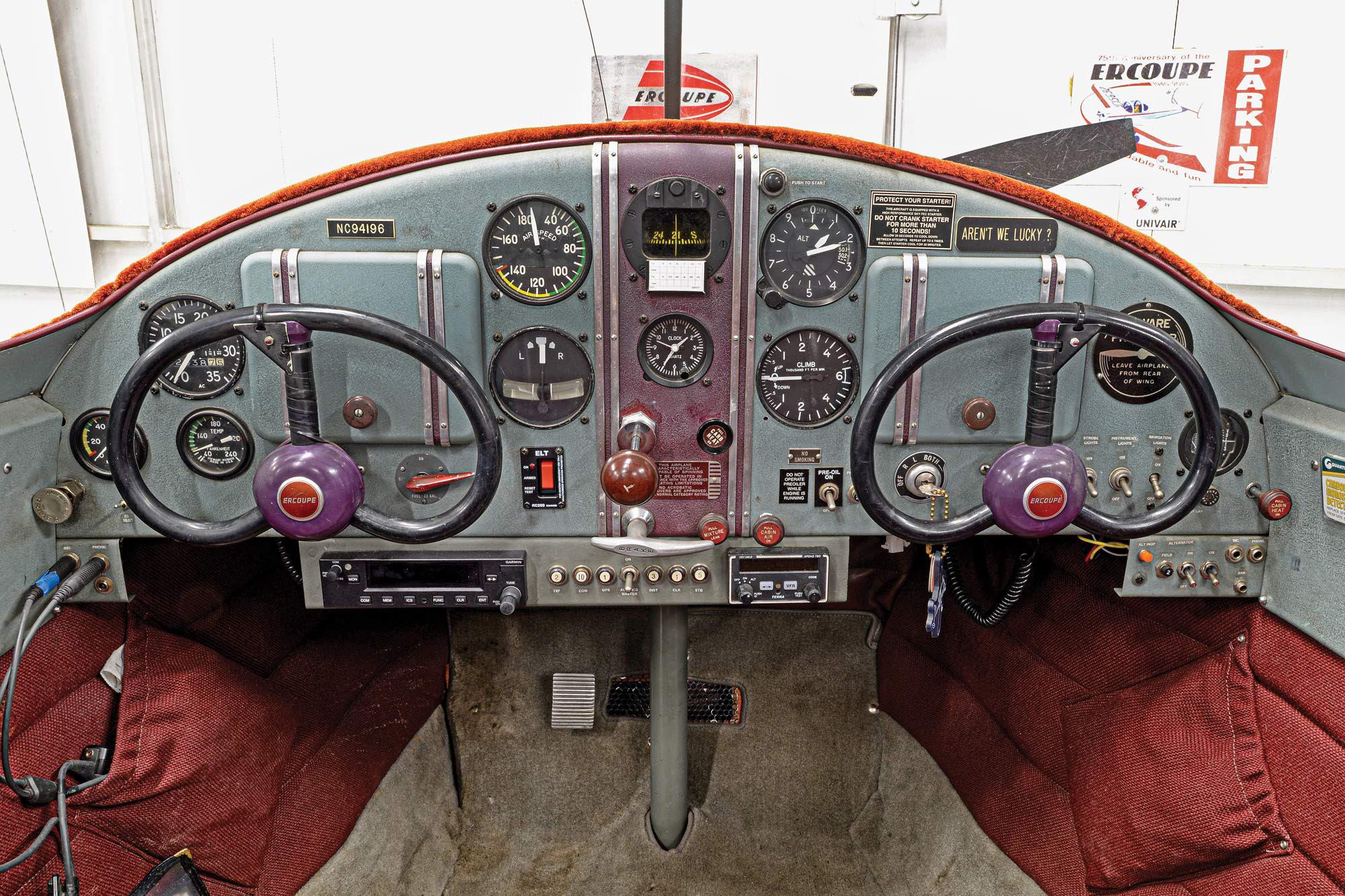
perfectly normal when in an Ercoupe, but never in any other plane. By the same token, as you turn downwind while taxiing, the upwind wing will often try to rise. The cure, which emotionally seems to make no sense but works perfectly, is to apply a little brake. The wing will drop and you may complete the rollout with a minimum of fuss.”
Cruise speeds vary by engine, but 100 to 105 mph is common. The report notes that an owner upgraded his C-85 engine with an O-200 crank to achieve a relatively brisk 117 mph cruise speed while burning about 5 gallons per hour. Christo Erasmus, the owner of ZS-VCE reports a cruise of around 110 mph on his 115 hp Lycoming.
Today most Ercoupes have been modified with rudder pedals to replicate the controls of a ‘normal’ plane. While this might sound appealing to pilots who prefer traditional controls, owners report that the modification lacks rudder authority and effectiveness.
For such an old design, and an unusual one at that, owning an Ercoupe is surprisingly practical. Provided your Ercoupe’s airframe has no corrosion, it should be an easy plane to own and maintain. Because many were built, parts are plentiful. Univair owns the type certificate and produces new parts, and usedercoupeparts.com is a highly regarded source for used parts.
There are 26 airworthiness directives that apply to Ercoupes of all types, viewable on Univair’s website. Approximately eight are recurring, and these are considered to be relatively simple and easily addressed by an AMO.
Corrosion is the most significant concern and any prospective owner should ensure a mechanic familiar with Ercoupes thoroughly inspects the wing spar with a borescope to

Large wing gives safe slow handling and 100mph cruise speed but needs plenty of runway.
confirm that no corrosion exists. A wealth of information and support is available from the Ercoupe Owners Club.
pilot who values these qualities and has less need for cruising speed, payload and short-field capability, the Ercoupe delivers on the dream of aircraft ownership in spades.
When considering various aircraft types to buy, most of us tend to take a technical approach. The analytical amongst us collect data, assess performance figures, and guestimate operating costs in an effort to determine which is most suited to our needs. However, the Ercoupe is unique in that some of its most significant strengths aren’t easily quantifiable and don’t show up in spreadsheets. The 1930s-era retro-futuristic look, the relaxed confidence of sure-footed crosswind landings, and the feeling of resting your arm out the window as the scent of freshly cut grass – or highveld smog – comes through the open cockpit on a summer afternoon, make it truly special. For the
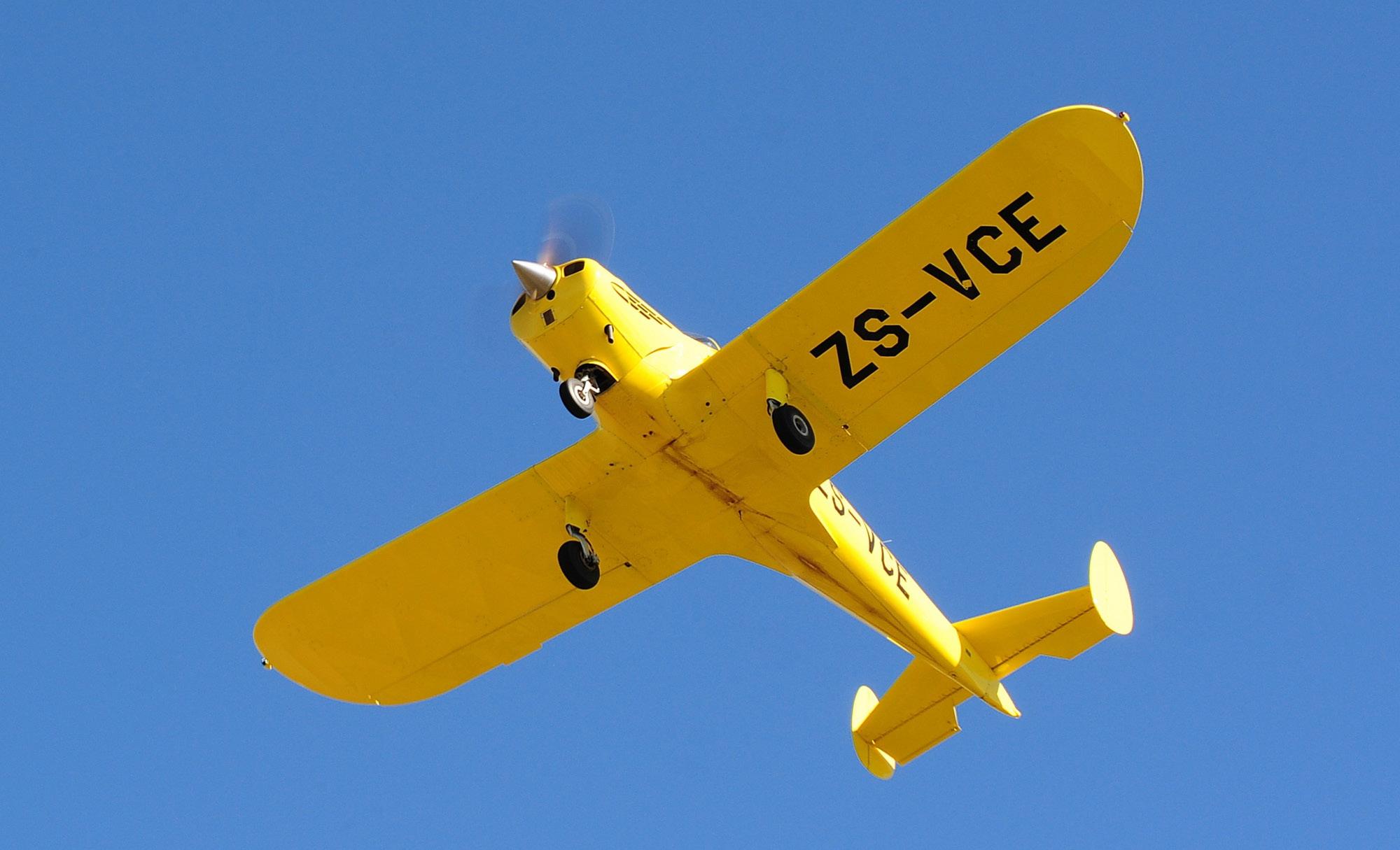
The owners of Ercoupes can be a vociferous lot and prone to aggressive defence of their joy and pride. They will tell you how it was designed, prior to World War II, without rudder pedals, as a spin-proof plane by the genius Fred Weick, who went on to many more successes in aviation — notably the Piper Cherokee line. They will say that it is nearly viceless in handling, can land at any speed from 60 to 110 mph, was the first tricycle-gear plane to be manufactured in quantity, was the first general aviation plane to have a completely cowled engine, and is the source of great fun. Overall it is a wonderful little plane, one to make a knowledgeable pilot happy and an owner proud.
j




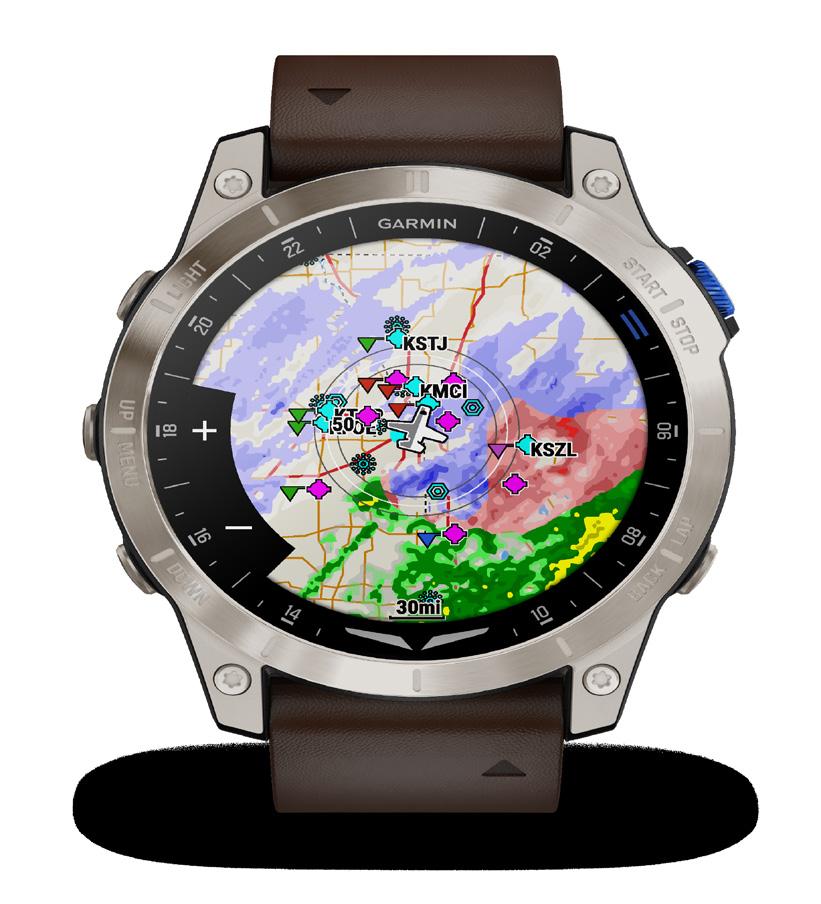














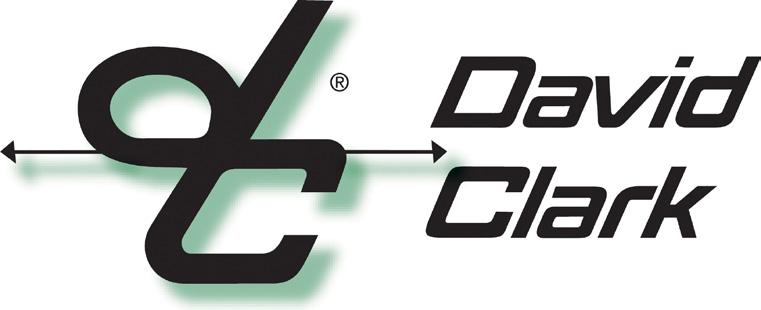

EARLY RECORDS SHOW some incidents between 1950 and 1965 that included hard landings, forced landings and propeller damage. Unfortunately, the logbooks that I have in my possession only start in 1966. She spent most of her days in the Port Elizabeth (Uitenhage) area at that time and later moved to Progress. She did travel up and down the coastline a lot, with trips ranging from PE to Saldana Bay and up to Pietermaritzburg, Margate and Virginia.
Somewhere between May 1978 and July 1981 she stopped flying, at least according to the logbooks but somehow ended up in Cape Town, where she was dismantled and moved by railway to Dundee. Here she was reassembled and placed back into service on 1 July 1981.
On 3 March 1984 she became part of the Erasmus family for the first time when my dad, Lex Erasmus, obtained a special flight permit from the then Department of Civil Aviation (DCA) to ferry her from Lanseria to Bapsfontein. He vividly recalls that ATC reminded him that the aircraft needed that special certificate before take-off to which he promptly provided the required detail.
Between March 1984 and December 1985, the aircraft was completely rebuilt. The fabric covered wings had a complete recovering. All metal areas were stripped and repainted. All control surfaces were rebalanced. The major changes were:
1949 an Ercoupe, the 415-E model, with the serial number 4975 was born. I’m not exactly sure how she got into South Africa, but she started her life as ZS-BSJ as early as 1950. As with all Ercoupes of the time, she had no rudder pedals and was fitted with the Continental C-85 (85 hp) engine.
incident on a golf course

• The engine; this was replaced by a Lycoming O-235-C1 (115 hp),
• The fitment of the aftermarket rudder pedal kit,
• A new propeller
• A new interior.
This is when she was re-registered as ZS-VCE. The V was designated back then for Veteran or LS1 as some may now know it.
After successful test flights and some alterations, I eventually got my turn to go up with my dad in her. I was a little over 9 years old at this point and did many circuits with the ‘old man’ while he explained all the steps, checks and basics behind the circuit pattern.
To my surprise he soon let me fly most of the circuits without him handling any of the controls.
Late on a Sunday afternoon he did the takeoff as usual and handed control over to me just after lift off. I flew the complete circuit, including the approach, flare, and touch down! My very first landing!
The Swart brothers from Bapsfontein who owned her at the time flew many missions between Bapsfontein, Delmas, Wonderboom and other places. They owned her to about 1991.

In May of 1995, she was once again made airworthy by Multi Air, and was back in Bapsfontein after my dads’ cousin purchased her. He completed his conversion at Bapsfontein and then flew her down to Somerset East where he was located. She once again flew up and down the Eastern Cape, until about 1998.
My dads’ cousin was involved in a farm accident
and lost his flight medical. The Ercoupe, still stationed at Somerset East, languished in a hangar and was vandalised one evening when there was a break-in into the hangar. All her windows were smashed.
Enter Pat Hanley of SA Mooney. On 29 September 2001 a temporary flight permit was issued after repairs were carried out and she was flown to Port Alfred. Dave Smith and Pat Hanley took good care of her while she was there and kept the ‘old lady’ in immaculate shape. Some additions and changes after an incident on a golf course in Alicedale in 2007 were made but all of these were for the better. It included a completely rebuilt centre section as the old one was showing some corrosion as well as a complete recovering of the wings and a complete repaint.
January 2022 I delivered the Explorer to its new owner.
On 21 January 2022 she was finally mine! I did my conversion at Port Alfred on the 21st and on the 22nd my dad and I set off from Port Alfred to Aviators Paradise on what proved to be an even more epic journey than anticipated.
We decided to go from Port Alfred to Queenstown, then from Queenstown to Tempe and then from there to Aviators Paradise. A nice trip of about 6.5 hours of flying.
In 2018, my dad, a friend and I made our way down to Port Alfred to inspect ZS-VCE that I saw being advertised by Mooney. I was smitten! Sure, she was no longer yellow and green as I remembered, but yellow and black. Wellpolished and taken good care of! I just had to have her back! Thinking of all sorts of ways to raise the required funds and NOT infuriate the wife, I made an offer…….it got declined. I was devastated, but it was still good to see her again.
At that time my dad and I were rebuilding a KFA Explorer on which I then got my tailwheel endorsement. I’ve spent many happy hours in that Explorer and was gladly minding my own business when I got the call, late in 2021, from Patrick asking if I’m still interested in the Ercoupe.
All went well until about three quarters of the way to Queenstown when I felt a slight thud. All the temps and pressures were good and there was nothing seemingly wrong. After an uneventful landing I taxied up to the fuel bay and upon disembarking the plane I noticed that I was trailing an oil streak. The belly of the Ercoupe was covered in oil. Realising that we were now stuck in Queenstown as there were no hire cars available, I ended up hiring the flight school’s C172 and leaving my ‘Coupe’ behind. I can’t thank Mark Sahd from the Queenstown Flying Club enough for his generosity and assistance!
Patrick fetched her from Queenstown the next day, flew her back to Port Alfred and discovered that the oil-air separator had a blockage that had effectively vacuumed all the oil out of the engine. With that fixed, he flew her back to Queenstown and we flew the C172 back to Queenstown via Kroonstad the next week.
I immediately placed my beloved Explorer on the market and made sure that the Ercoupe is secured until the sale of said Explorer. On 2
Back in the ‘Coupe’, the plan was to go to Aliwal North just to check on the fuel and oil and then carry on to Kroonstad and then home. We made Aliwal North at about 11.30 in the morning. Luckily, I was able to contact Gary Dampier, a very helpful and friendly local before our arrival
for assistance with fuel. Turns out that the temperature of 32 degrees made take off almost impossible with the Coupe, so we were once again stuck. After having a nice lunch with our new friends, we waited until 5pm and headed for Tempe instead of Kroonstad, where we overnighted once again.
The next morning should take us from Tempe to Aviators, but NO, the weather and winds forced us to divert to Parys. We barely made it into Parys before a torrential downpour. Stuck again. We waited and waited, in the early afternoon there seemed to be a good enough gap. After taking off we made it to the ridge close to Krugersdorp but there was no way through. Not being one for scud-running, I turned around and headed back to Parys. Later in the afternoon the weather broke up into scattered showers. The west still seemed closed, but reports from the east and home seemed to be okay.
We made it to the hills just before Baragwanath and could not see anything after that, so I diverted to Vereeniging. A friend of ours offered hangarage there and we gladly accepted and were driven home.
A week later, with an overhauled P-Prop and a glorious clear sky, we flew her to Springs. Yes – still not home, as we’ve decided that the carburettor needs work as she was consuming a LOT more fuel than calculated, according to the expected numbers. The search for carburettor parts is probably a novel on its own; suffice to say that we eventually managed to find the parts.
The flight from Springs to Aviators Paradise was conducted by my dad, Seeing that aeroplane finally arrive at Aviators Paradise was a little emotional, to be honest. It had taken almost four weeks to get her from Port Alfred to here.
She’s turned out to be an eye catcher at every airport that I fly to, especially with the youngsters. I’ve flown more hours in her in the past 9 months than she did in the past 9 years and this obviously revealed some minor issues with the engine, rigging etc that have all received attention.
On our trip up from Port Alfred we really struggled to get past 85 mph indicated. We expected around 100 mph. Some rigging changes, trim settings and carburettor adjustments soon had us cruising at a comfortable 100 mph indicated.
Climb performance is not comparable to a home sick angel, but at least the extra couple of horses here at altitude helps a little. I get an average of about 400 fpm with two up and full tanks. Density altitude is something to carefully consider, as discovered in Aliwal North.
My dad and I have competed in two of the SAPFA Speed Rallys this year with her and she performed way better than expected, sometime even reaching an indicated airspeed of 125 mph! I didn’t like this much as Vne is 140 mph and 125 mph is already within the yellow arc. Our aim is to return to the competition next year to show everyone ‘how it’s done’.
She’s not complicated. She doesn’t have flaps, or a complicated fuel system: she has a very effective mechanical fuel level indicator on top of the cowl in the header tank.
She’s an absolute dream to fly, very forgiving, very stable and most of all; full of history. Every flight in her provides an absolute feeling of fulfilment.
My daughter gave her the nickname of Bumblebee.







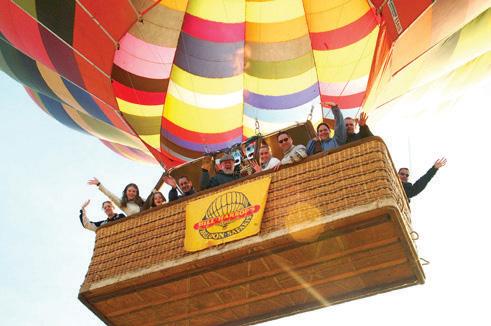
•
Aircraft registration: ZS-DIV
Date and time of accident: 29 November 2018, 1503Z
Type of aircraft: Cessna U206D
Type of operation: Private (Part 91)
PIC license type: PPL Validation
License valid: Yes
PIC age: 49
PIC total hours: 175
PIC hours on type 7
Last point of departure: Nelspruit
discussion is to promote safety and not to establish
• The CAA’s report contains
Next point of intended landing: Wonderboom
of accident site: Machadodorp Sappi
at 4697ft
Meteorological
Dew Point: 11°C.
90°/4 kts. Temp: 17°C.
Overcast.
1500 ft AGL
and
so in the interest of clarity,
have
On 29 Nov 2018, Cessna U206D, ZS-DIV, operating as a VFR private flight from Nelspruit to Wonderboom crashed at 1503Z. No flight plan was filed.
2+3
People injured: 4
On-board were two pilots and three passengers. The pilot in the left seat was the pilot-incommand (PIC) and the pilot on the right was the pilot monitoring (PM).
The aircraft owner reported that the aircraft was hired by the PIC as a means of transportation for her and her siblings to scatter the ashes of
a cremated family member around Hoedspruit area in Limpopo Province.
The flight to Hoedspruit was uneventful and all went according to plan. The aircraft was then flown to Nelspruit where an uneventful landing was carried out. The aircraft was then refuelled to capacity in preparation for a flight to Wonderboom. The PIC reported that upon completion of the pre-flight inspection, all boarded the aircraft. About 5 minutes later, she started the engine. She allowed the engine to run for a few minutes before taxiing to Runway 22 for departure. The aircraft took off in clear weather conditions.
Approximately 20 to 30 minutes into the flight at 7000 ft clouds developed around the aircraft. The PIC reduced height and the aircraft was unintentionally flown into a valley covered with clouds. The PIC made a 180° turn to stay clear of the clouds, but without success. As she was not instrument rated, she handed over the controls to the PM who had a current instrument rating.
As the aircraft’s height above ground was already low, it impacted the tree tops before crashing onto the ground. The aircraft was destroyed by impact forces and a fuel-fed post impact fire that erupted.

According to the PIC, it was difficult for her to get the left door open as her hands had sustained serious injuries; the PM unbuckled himself and opened the left door, allowing her to vacate, followed by all other occupants. The PM vacated
the burning wreckage last and had sustained approximately 99% burn injuries. He succumbed to his injuries two days later
All the occupants walked to a nearby gravel road which was more than a kilometre away.
A private motor vehicle gave them a lift to Nelspruit Hospital.
The aircraft Mass and Balance was within the limits and all maintenance was up to date.
The aircraft was producing substantial power on impact. The nose was high and the flaps were retracted.
The PM was the pilot flying when the accident took place; at no stage did the PM lose control of the aircraft.
It seems that the basic cause of the accident was poor planning. They decided to go ahead with a VFR flight despite adverse weather and possibly IMC en-route.
The PIC only earned her PPL at the age of 46. She had a total of 175 hours, and only 7 on type. My gut feeling is that she was pushing the limits of her ability and comfort zone to be flying that sophisticated aircraft, fully loaded, into marginal weather, on a longish cross-country.
This accident releases three of my hobby horses from their stables:
• PPP – Passive People Pressures.
• Divided Responsibility
• Who Has Control?
These are subtle, indirect forces that often drive pilots to push themselves beyond their comfort zones. In other words, the pilots would not have undertaken a particular flight – or a particular course of action – but for someone else’s expectations.
Sometimes these expectations are not subtle. Remember the new, young commercial pilot who flew an overloaded BN Islander into the Drakensburg mountains with two couples and four young children on board? He did his best to talk the bullying owner out of it but ultimately gave in to this overpowering personality and ended up killing them all.
The same sort of pressures often exist without anyone saying a word. The very fact that your passengers have got out of bed and driven to the airfield shows that they have the expectation of being flown to a family gathering, a funeral, a rugby match, or whatever.
You told them yesterday that you would take them and now they have all arrived you feel you can’t let them down, even though you are not too comfortable about the weather. And you certainly would not make the flight but for their expectations.
I have an unsubstantiated feeling that this pilot found herself in that position.
Some charter companies in the Okavango put their pilots under these pressures –usually because the passengers are too heavy, or have too much baggage. If you refuse to fly them your boss will replace you with a braver pilot before you can say ‘clear prop.’
I believe that these subtle, or overt pressures, are the reason behind the published reason for many light aircraft crashes.
With this accident, I feel she would probably not have undertaken the flight if all people pressures were removed. No passengers, no one waiting at the other end, no one with any expectations.
In addition, I suspect that having an instrument rated pilot in the right-hand seat increased the pressure to go.
If I had sat on my hands, it would have been nasty
This is my second hobby-horse – the horrendous business of divided responsibility – which is made even worse when it’s not formally discussed. With this accident there was obviously no discussion about turning it into an instrument flight. It was a panic decision that seemed to take the instrument pilot by surprise. The sensible thing would have been for the PM to have taken control and filed an IFR plan, in the air, when the dirty weather appeared ahead.

I see divided responsibility daily in flying training when pupils are shunted from one instructor to the next because that makes it easier for the school to do the scheduling and bookings.

Each instructor is unsure how well the pupil has been trained up to this point. So she doesn’t know whether she should revise engine failures after takeoff, and whether to do a couple of go-arounds to make sure the pupil will do the right thing when flying solo. If she revises these exercises unnecessarily, she is wasting the

pupil’s time and money, but she has to be happy that the pupil is competent and safe. Or should she just hope another instructor has covered them properly?
No one is really responsible – and so it was with this accident.
I agreed, on the clear understanding that if I said “I’ve got her” he was to let go of everything.
He got the first landing all crossed up – he bounced and then took half power while heading for the trees at the side. I told him I had control, and sorted it out. But if I had sat on my hands with the rather vague instruction to be a ‘safety pilot’, it would have been nasty.
This is my third hobby horse and it’s similar to the above. When things go wrong who is going to make the decisions, and who is going to work the levers?
This is dangerous territory, and far too common. I see some flight schools are using newly-minted commercial pilots to go along on cross-countries
That’s pretty much what happened in this accident. Take home stuff:
• People Pressures are easy to deal with. Warn all concerned, the day before, that the flight might not go ahead because of XYZ. This gives the pax time to make contingency plans and it allows you to be comfortable about cancelling, or diverting, or telling them they have too much luggage, or whatever the problem is.
• Divided Responsibility is also easy to deal with by discussing it on the ground, before the flight.
with less experienced pilots to act as ‘safety pilot’. Who is responsible when there’s an accident?
I recently reported on a firey blaze when a Piper Pacer crashed on takeoff. The commercial pilot, owner, was in the left seat; and a very experienced taildragger PPL was ‘safety pilot’ in the right hand seat. It crashed because the ‘safety pilot’ left it too late to take control.
It happened to me at a private strip a bit south of Perth. My mate, Vernon, wanted me to act as ‘safety pilot’ while he practiced circuits and bumps in a Super Cub he had just converted to. (His first tailwheel.)
• Who Has Control? Also easy to deal with on the ground before the flight.
• If you hear those terrible words ‘safety pilot’, then before you fly, brief on who does what, and when.
So there’s the pattern. It’s all about planning and dealing with stuff on the ground before you fly.








FIRST OF ALL, there is an Embraer 145 added to the register which was seen operating in Russia with her South African registration, ZS-ABB, applied in the last month. Unfortunately, nobody that I know has been able to photograph her as yet. This Embraer takes up the former registration of an Avro Avion which was written off in 1947.
Continuing their strong growth, Cemair have added yet another CRJ900 to their fleet, bringing their total to four of this type. This one, ZS-CMU, was the registration of a Cessna 182 which was cancelled way back.

Some unusual imports were a Piper PA36285 Brave, which is a crop sprayer, a Lear Jet from the USA and an Airvan from Botswana. The Piper Brave takes up the registration of a Cessna 210 which went to Tanzania in 2014.
There were three Cessna 172s delivered in a dismantled state, to Rand airport during the
month from Botswana and two of these have now come on to the register. In total nine new TCA registrations were issued this month, including a new glider.
On the Non-type certified NTCA register we see another seven new registrations issued including a new RAF 2000 Gyrocopter. I haven’t seen one of these registered for a long time. There are also three new RVs, two Slings and a Bathawk registered.
As per usual we have lost aircraft to the export market. The total number of aircraft exported this month is seven. These include an ex SAA A320 ZS-SZD which was returned to her owner as OE-IPJ. This aircraft was flown to Accra and then on to Ljubljana in Slovenia. There are rumours that she may be returning to operate for Global Airways, but this isn’t confirmed as yet. African Air Charters have sent one of their Boeing 737-300s to Indonesia. Amongst the others exported are three helicopters, a Beech
This month, although not quite as exciting as last month, nevertheless contains a few delicious items.
ABOVE:



BELOW
BELOW


1900 and a Piper Matrix. Their destinations are really worldwide including Brazil, Canada, Indonesia, Austria & Australia.
On the NTCA side we lost three aircraft with two going to Namibia and one to Mozambique.


We continue to see the number of drones registered increasing and this month another fifty-one were added and nine de-registered.
Tail piece
I attended AAD 2022 and manned the SA Flyer stand. On the Saturday I was really
encouraged by the number of young people who approached me with questions of how they could become pilots and aircraft engineers. Strangely enough, there were more enquiries about aircraft engineering as a career than there were enquiries about being a pilot. There was one young lass who is determined to fly but couldn’t afford it. She went and got a drone pilot’s license and now flies the DRV security drone northeast of OR Tambo. She is using her earnings from this to put herself through her comm and IF ratings. She is really determined to get into the airlines. I’m really impressed by the number of intelligent questions I was asked. j

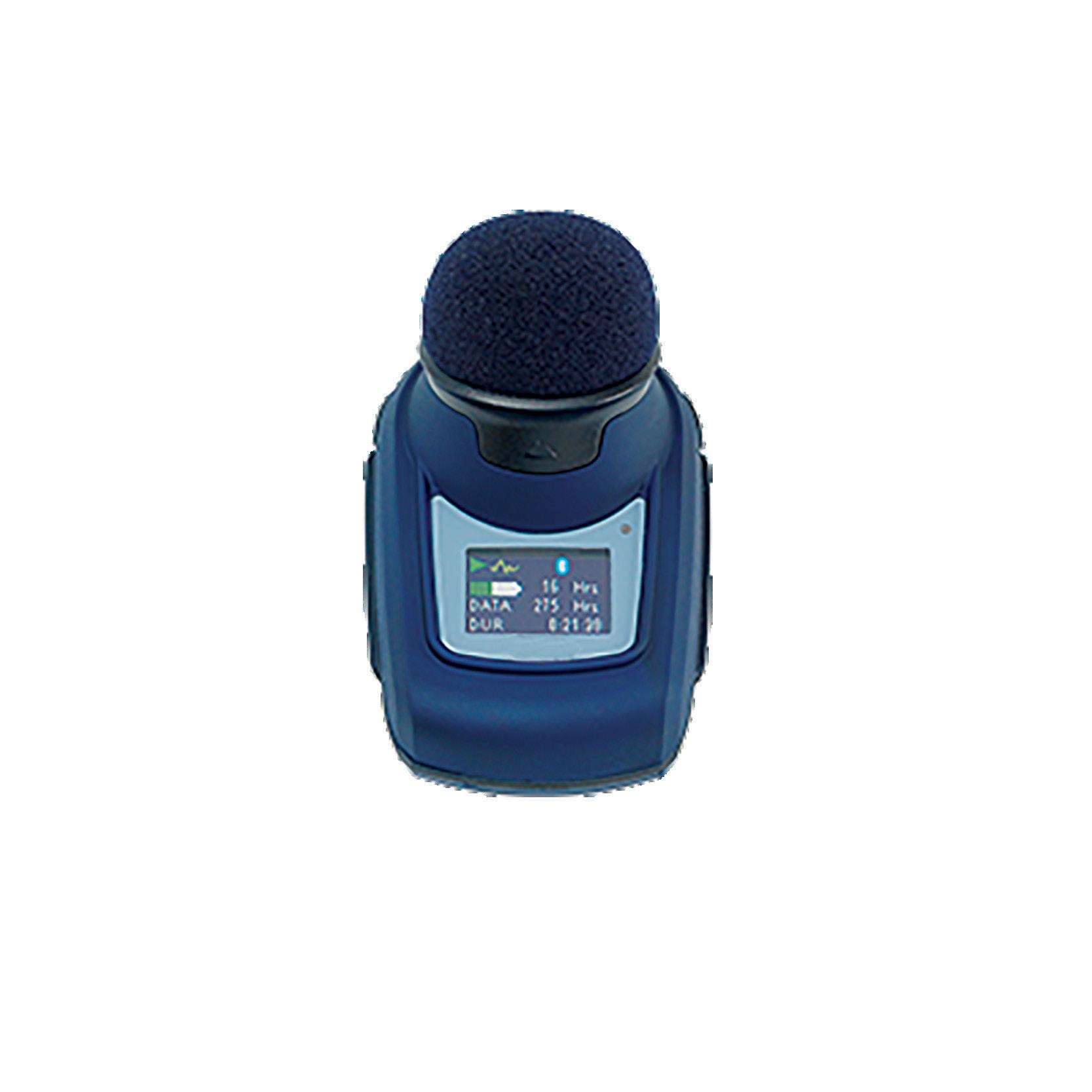










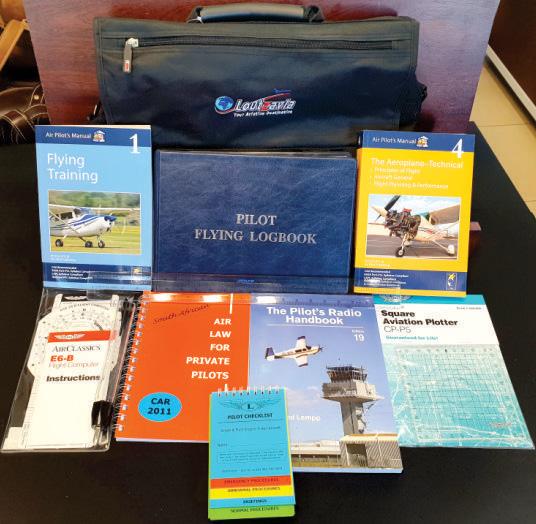






TECNAM SAYS THE P2012 STOL is the only twin piston with STOL capabilities compliant to the latest certification amendments. It offers a 3680 kg / 8113 lb Maximum Gross Weight, while guaranteeing a modern design, wide and comfortable cabin, and 11 seats.
The cabin has a central aisle, a window for each of the 9 single passengers, no bench/double seats, and the passengers’ amenities such as USB ports, air conditioning, individual fresh and hot air outlets, a reading light, seat pockets and yes - cupholders.
The view provided by the individual windows and high wing make it good for sightseeing operations.
The cockpit includes G1000 NXi EFIS and a GFC700 autopilot. Active and connected flight deck (Bluetooth, flight stream, Iridium) and a toolbox of modern aids (Wx radar, storm
scope, inset map, and synthetic vision) reduce workload.
Comparing the P2012 STOL to the Britten Norman Islander, Tecnam claims that the P2012 STOL offers a +34% wider cabin, +24% larger seat pitch, +188% higher luggage weight allowance and +303% better luggage volume, and does it all in accordance with the latest certification standards. It can match the Islander’s takeoff and landing performances, and outperform its useful load by 20% up to a remarkable value of 1284 kg / 2830 lb on a STOL mission.
At maximum takeoff weight of 3680 kg / 8113 lb, the takeoff run takes 275 m / 900 ft and to clear the obstacle the takeoff distance is achieved in just 425 m / 1395 ft. At the 3630 Kg maximum landing weight the landing distance from the obstacle takes only 360 m / 1180 ft and the ground run requires just 155 m / 510 ft.

Tecnam has introduced the new P2012 STOL dedicated to Short Take Off and Landing (STOL) operations.
THIS ANNOUNCEMENT FOLLOWS a grant provided by South Africa’s Transport Education Training Authority (TETA) in 2019, which enabled seven students in early 2022 to complete the three-year course offered by Paramount, and to qualify as aircraft technicians.
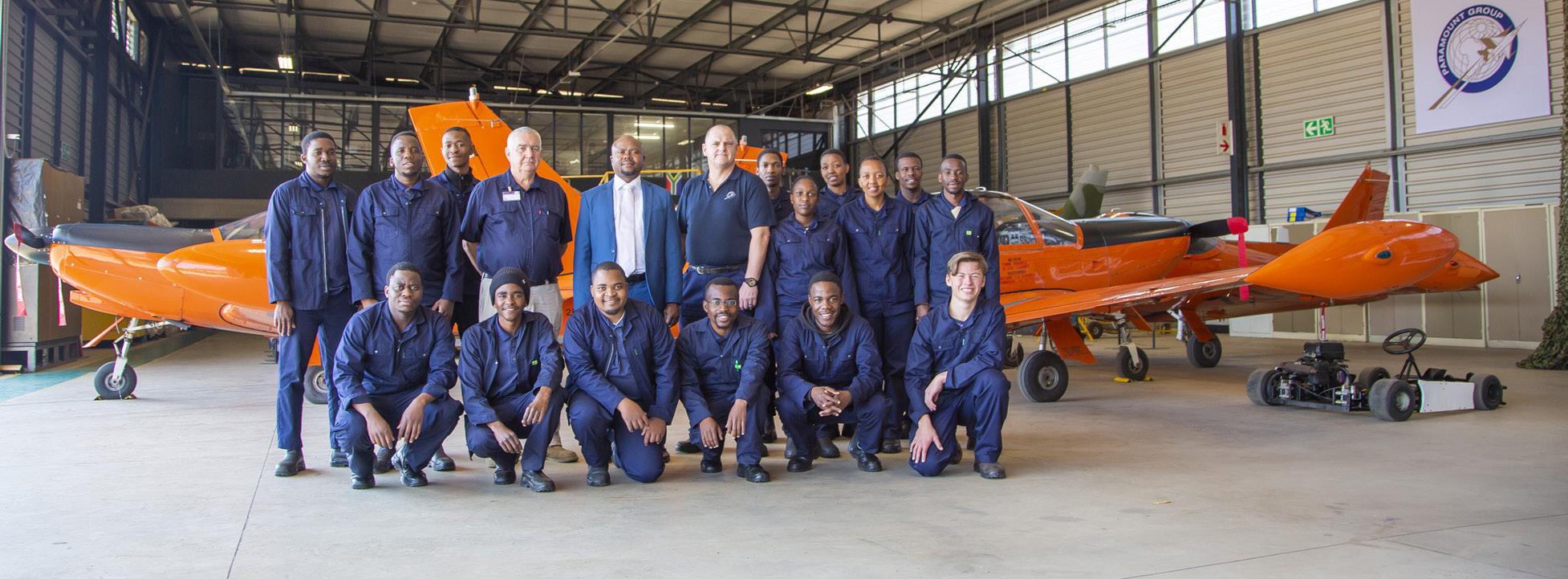
Paramount operates a fully accredited Technical Training Academy at Wonderboom National Airport, adjacent to the aircraft production facilities where the Mwari reconnaissance and light attack aircraft is manufactured.
The ‘PAS’ Technical Training Academy was established to serve the training needs of young Africans from across the continent, those who aspire to reach careers such as aircraft technician or aircraft maintenance engineer.
“We are delighted that, with the support of the training grant offered by the Transport Education
Training Authority (TETA), students will be able to participate in our comprehensive programme, one that is presented by industry veterans with decades of combined experience,” stated Brian Greyling, CEO of Paramount Aerospace Systems. “With our comprehensive training solutions that cover all of the technical aspects of aviation, we are addressing the dire shortage of technical skills in the local aerospace sector and further, unlocking pathways for our students to embark on prosperous lifelong careers in both the local and international aviation industry”.
The PAS Training Academy, which can accommodate two intakes per year in January and July, has plans to expand rapidly over the next decade to address the urgent requirement for more certified technicians. j


Airfield
Beaufort West R33,05 R26,30
Bethlehem R32,00 R 23,00
Beaufort West R33,05 R26,30 Beaufort West R31,90 R26,30 Bethlehem R32,00 R 23,00
Beaufort West R31,90 R26,30
Bethlehem R31,00 R 23,50 Bloemfontein R27,63 R21,65
Bloemfontein R30,75 R21,60 Brakpan R35,20
Brakpan R32,00 Brits R29,90
Bethlehem R31,00 R 23,50 Bloemfontein R27,63 R21,65 Bloemfontein R30,75 R21,60 Brakpan R35,20 Brakpan R32,00 Brits R29,90
Brits R29,90
Brits R29,90
Cape Town R36,28 R21,10 Cape Winelands R30,50
Cape Town R36,05 R20,76
Cape Town R36,05 R20,76 Cape Town R36,28 R21,10 Cape Winelands R30,50
Eagles Creek R32,50
Cape Winelands R30,50 Eagles Creek R32,50
Cape Winelands R30,50
Eagles Creek R31,00 East London R32,65 R21,61 East London R32,65 R21,94 Ermelo R32,66 R25,99
Ermelo R32,66 R25,99 Gariep Dam R32,00 R24,00 Gariep Dam R34,00 R24,00 George R35,00 R24,21 George R32,30 R22,77
Grand Central R34,56 R24,78
Eagles Creek R31,00 East London R32,65 R21,61 East London R32,65 R21,94 Ermelo R32,66 R25,99 Ermelo R32,66 R25,99 Gariep Dam R32,00 R24,00 Gariep Dam R34,00 R24,00 George R35,00 R24,21 George R32,30 R22,77 Grand Central R34,56 R24,78
Grand Central R32,26 R24,21 Heidelberg R27,00
Heidelberg R30,50 Hoedspruit POA Hoedspruit POA Kimberley R27,70 R21,72

Kimberley R30,81 R21,67 Kitty Hawk R34,60
Klerksdorp R34,38 R23,92
Kitty Hawk R34,20
Klerksdorp R34,39 R23,92 Kroonstad R29,75 Kroonstad R32,12
Kruger Intl Nelspruit R34,10 R24,99
Grand Central R32,26 R24,21 Heidelberg R27,00 Heidelberg R30,50 Hoedspruit POA Hoedspruit POA Kimberley R27,70 R21,72 Kimberley R30,81 R21,67 Kitty Hawk R34,60 Kitty Hawk R34,20 Klerksdorp R34,38 R23,92 Klerksdorp R34,39 R23,92 Kroonstad R29,75 Kroonstad R32,12 Kruger Intl Nelspruit R34,10 R24,99
Kruger Intl Nelspruit R31,02 R24,60 Krugersdorp R29,00
Krugersdorp R29,00 Lanseria R32,20 R23,98 Lanseria R31,05 R23,81 Margate No Fuel Margate No Fuel Middelburg R33,01 R24,15 Middelburg R33,01 R24,15 Morningstar R30,25 Morningstar R32,25 Mosselbay R33,60 R28,50 Mosselbay R31,50 R26,50 Nelspruit R32,88 R22,30 Nelspruit R32,88 R22,30 Oudtshoorn R33,16 R23,10 Oudtshoorn R33,16 R23,55 Parys

Pietermaritzburg R31,00 R26,20 Pietermaritzburg R30,80 R25,70
Pietersburg Civil R30,25 R24,95 Pietersburg Civil R30,25 R24,95 Plettenberg Bay R38,00 R25,00 Plettenberg Bay R34,50 R25,00 Port Alfred R33,50
Port Alfred R33,50 Port Elizabeth R34,05 R24,29
Port Elizabeth R31,97 R23,72 Potchefstroom

POA POA Parys POA POA
Potchefstroom POA POA Rand R30,38 R25,09 Rand R30,38 R25,09 Robertson R32,00
Robertson R32,00 Rustenberg R33,50 R25,25 Rustenberg R31,00 R23,95 Secunda R31,05 R25,88 Secunda R30,48 R25,88 Skeerpoort
Kruger Intl Nelspruit R31,02 R24,60 Krugersdorp R29,00 Krugersdorp R29,00 Lanseria R32,20 R23,98 Lanseria R31,05 R23,81 Margate No Fuel Margate No Fuel Middelburg R33,01 R24,15 Middelburg R33,01 R24,15 Morningstar R30,25 Morningstar R32,25 Mosselbay R33,60 R28,50 Mosselbay R31,50 R26,50 Nelspruit R32,88 R22,30 Nelspruit R32,88 R22,30 Oudtshoorn R33,16 R23,10 Oudtshoorn R33,16 R23,55 Parys POA POA Parys POA POA Pietermaritzburg R31,00 R26,20 Pietermaritzburg R30,80 R25,70 Pietersburg Civil R30,25 R24,95 Pietersburg Civil R30,25 R24,95 Plettenberg Bay R38,00 R25,00 Plettenberg Bay R34,50 R25,00 Port Alfred R33,50 Port Alfred R33,50 Port Elizabeth R34,05 R24,29 Port Elizabeth R31,97 R23,72 Potchefstroom POA POA Potchefstroom POA POA Rand R30,38 R25,09 Rand R30,38 R25,09 Robertson R32,00 Robertson R32,00 Rustenberg R33,50 R25,25 Rustenberg R31,00 R23,95 Secunda R31,05 R25,88 Secunda R30,48 R25,88 Skeerpoort *** Customer to collect POA
Springbok
POA POA
Skeerpoort
POA
Skeerpoort *** Customer to collect POA POA Springbok POA
Springs R29,20 Springs R29,20 Stellenbosch R34,25
Stellenbosch R34,25 Swellendam R32,60 R24,60
Swellendam R32,60 R24,60 Tempe R29,75 R25,14 Tempe R32,12 R24,93 Thabazimbe
Springbok POA POA Springs R29,20 Springs R29,20 Stellenbosch R34,25 Stellenbosch R34,25 Swellendam R32,60 R24,60 Swellendam R32,60 R24,60 Tempe R29,75 R25,14 Tempe R32,12 R24,93 Thabazimbe
Springbok POA
Upington R28,58
Thabazimbe POA
Upington R31,68 R22,54 Virginia R30,48
Virginia R30,48 R24,15 Vryburg
Thabazimbe POA POA Upington R28,58 R22,60 Upington R31,68 R22,54 Virginia R30,48 R24,15 Virginia R30,48 R24,15 Vryburg
Vryburg
Vryburg POA
Warmbaths R32,00 Welkom R29,75
Warmbaths R32,00 Welkom R29,75
Warmbaths

Welkom R32,12 R24,93 Wings
Welkom R32,12 R24,93
Wings
Wings Park
R32,75
R32,75 Witbank Witbank R31,50
R33,34
Witbank R31,50
Wonderboom POA
Wonderboom
Worcester R33,34
R33,34

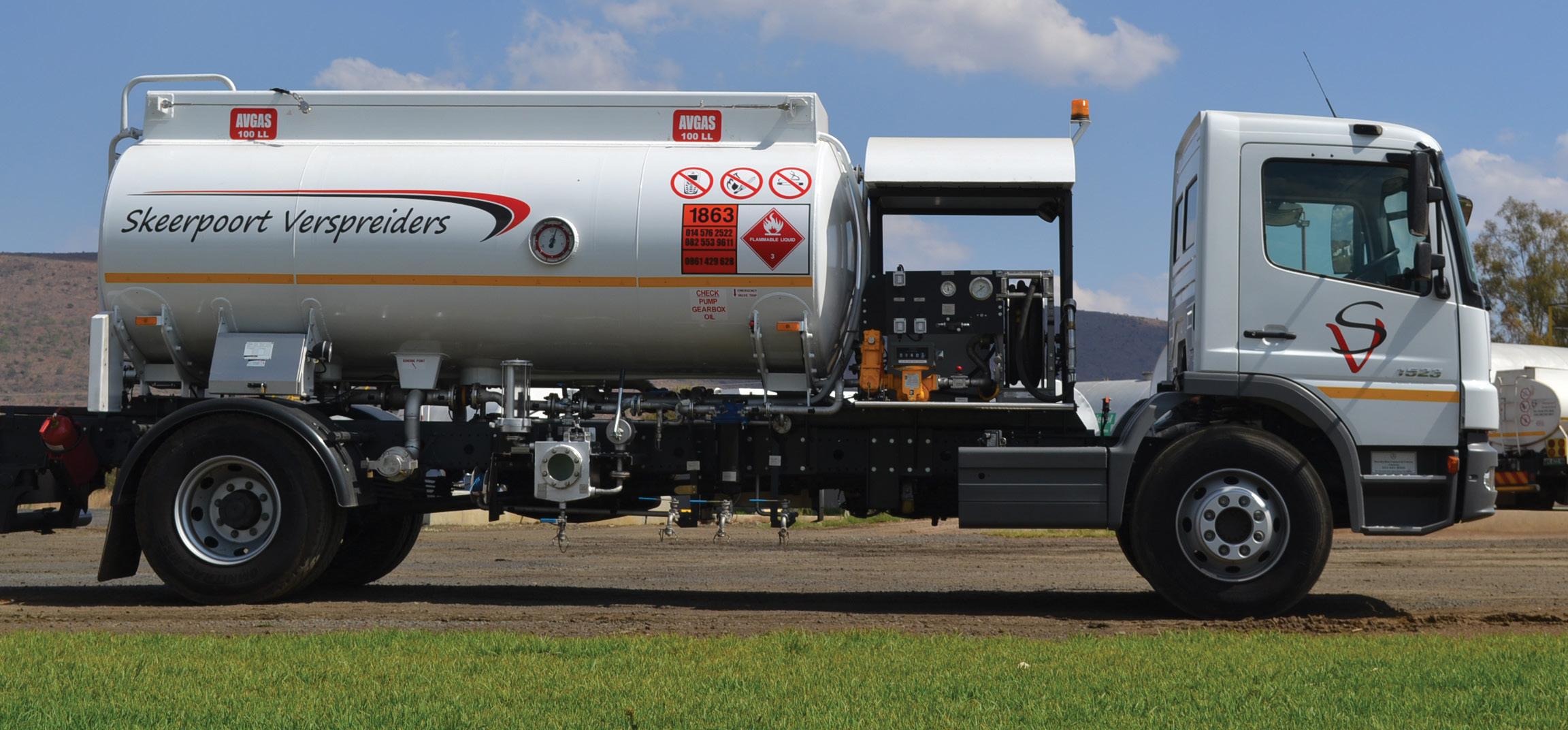












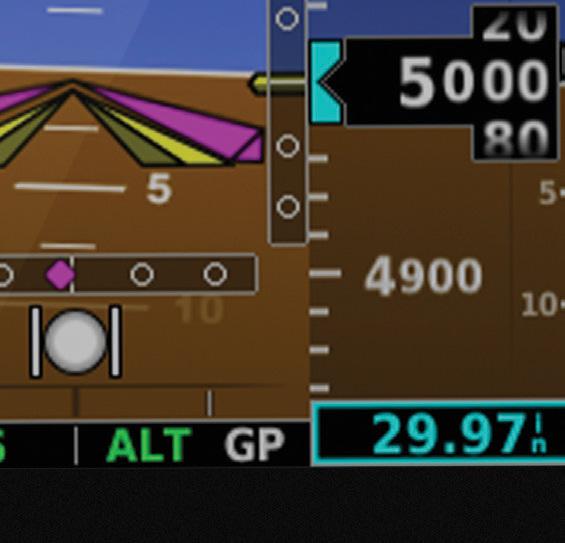













AS THE WORLD TRANSITIONS into the digital era there is a still a need for a readyto-hand printed reference work that gives companies which provide specialist services to the industry with the whole range of ways to reach their market.
Our Aviation Company Profiles Guide gives our advertisers a focussed ready-reference

The
shop window which enables them to achieve comprehensive high-impact marketing across the aviation industry.
By participating in our annual services guide, advertisers have been able to grow their market by exposing their products and services to the massive SA Flyer and FlightCom digital presence which reaches
Every year SA Flyer publishes an industry standard reference work – that we see sitting on many desks across the industry throughout the year. This widely used reference work is our annual Aviation Company Profiles Guide.
over 20,000 people. In addition to our digital magazines, advertisers reach many thousands more through the regular visitors to our websites for news and aviation memes, and over 7000 people through our huge Facebook following.
Thanks to the digital platforms, readers can click directly onto the advertisers’ websites and view video content with one click on the links provided in the digital publications. So this Services Guide provides the ultimate solution that covers all the bases for advertisers to reach their market and for readers to find the best suppliers of that particular service.
population. We are pledging a minimum of 10% of our turnover from the Services Guide to the very cost-efficient and credible “Flying For Freedom South Africa” Rhino Foundation. (See box).

For our readers we have included:
• A double page spread of a live GPS map layout of Southern Africa, with a reference to all supporting companies, including pin locations.
• The digital version of this Guide will be uploaded and promoted on all of the following digital marketing platforms – available to read and share with the world for free:
And, as our way of giving back, we at SA Flyer are taking this opportunity to contribute in our own small way to saving the rhino
• It has been uploaded onto our main home landing page of our information-rich website news feed www.saflyer.com
• Our Facebook page, where SA Flyer has by far the largest number of followers for an African Aviation Facebook page www. facebook.com/saflyer
• Email distribution to our thousands of worldwide key contacts & decision makers – this includes the local aviation community and CAASA members.
• We have also printed an A4 sized version of this Guide, which is distributed to the aviation industry and all pilot shops. This is for free to all company profiles placed within the digital version, whereby the same size choice of company profile will also be placed within this printed A4 sized Guide. Some service providers have included a QR scanning code, linking to the advertisers' website.
as for aerial surveys of areas under threat from sources such as mining, or due to water depletion by farming and industry.
The general aviation sector has responded magnificently to the challenges of our society by becoming world leaders in providing aircraft ideally suited for the low and slow flights for game observation work. Notable in this regard is the SkyReach BushCat which has become the aircraft of choice due to its low costs, high wing and safe slow speed characteristics.
Other aircraft which have become widely used in the fight against rhino poaching and nature conservation include the Savannah, the Bat hawk and the Jabiru. SA Flyer was one of the founder sponsors of the Gemfields Jabiru which has done so much invaluable work for the private game reserves in the Combined Reserves Greater Kruger Park area.
General aviation makes a huge contribution to not just conservation – but the whole South African economy and quality of life. Thus, in nature conservation we have the magnificent efforts of the Flying For Freedom Rhino conservation foundation (see box) and the work of the Bateleurs which provides pilots and planes in support of conservation as well
Helicopters have their own unique role in the fight against poachers and Gerry McDonald in Hoedspruit and Tokkie Botha in the Limpopo and Mpumalanga provinces have done fantastic work. And then of course there is the doyen of helicopter wildlife operators – SA Flyer’s long running columnist John Bassi, who uses his JetRanger from one end of South Africa to the other. j John Bassi in action with his Bell JetRanger.

AS THE FOUNDER and driving force behind his registered and approved non-profit organisation, Flying For Freedom SA (FFFSA), Tokkie Botes has donated over 1,000 hours of flying in his Bell 206 to the service of conservation in Southern Africa.
Tokkie and his crew use his Bell 206B JetRanger as a very effective tool in the ongoing war against the ravages of rhino poaching. Tokkie makes his helicopter available at a moment’s notice to assist ground forces in capturing rhino poachers, who have been known to turn their rifles on approaching helicopters.
Flying For Freedom also assists by flying veterinarians to snared animals; conducting aerial surveys of vultures, and defending the habitat of the nocturnal riverine rabbit, the most endangered mammal in South Africa.
Such is the demand for his services that Tokkie flies his helicopter almost daily to patrol for signs of poachers, deliver vets to wounded rhinos, and sometimes fly orphaned rhino calves to safety.
Tokkie pays for fuel and maintenance of the helicopter out of his own pocket because he and others like him are committed to protecting rhinos from extinction. Tokkie and his wife Marina manage to pay a large part of the huge operating costs with the support of Skuurpoort Verspreiders, his fuel distribution company.
Tokkie is approved by the South African Parks Board to fly his helicopter throughout the Kruger Park to assist anti-poaching operations. He has been awarded the SANParks Kudu Awards for his commitment to anti-poaching and environmental crime investigations in the Kruger National Park.

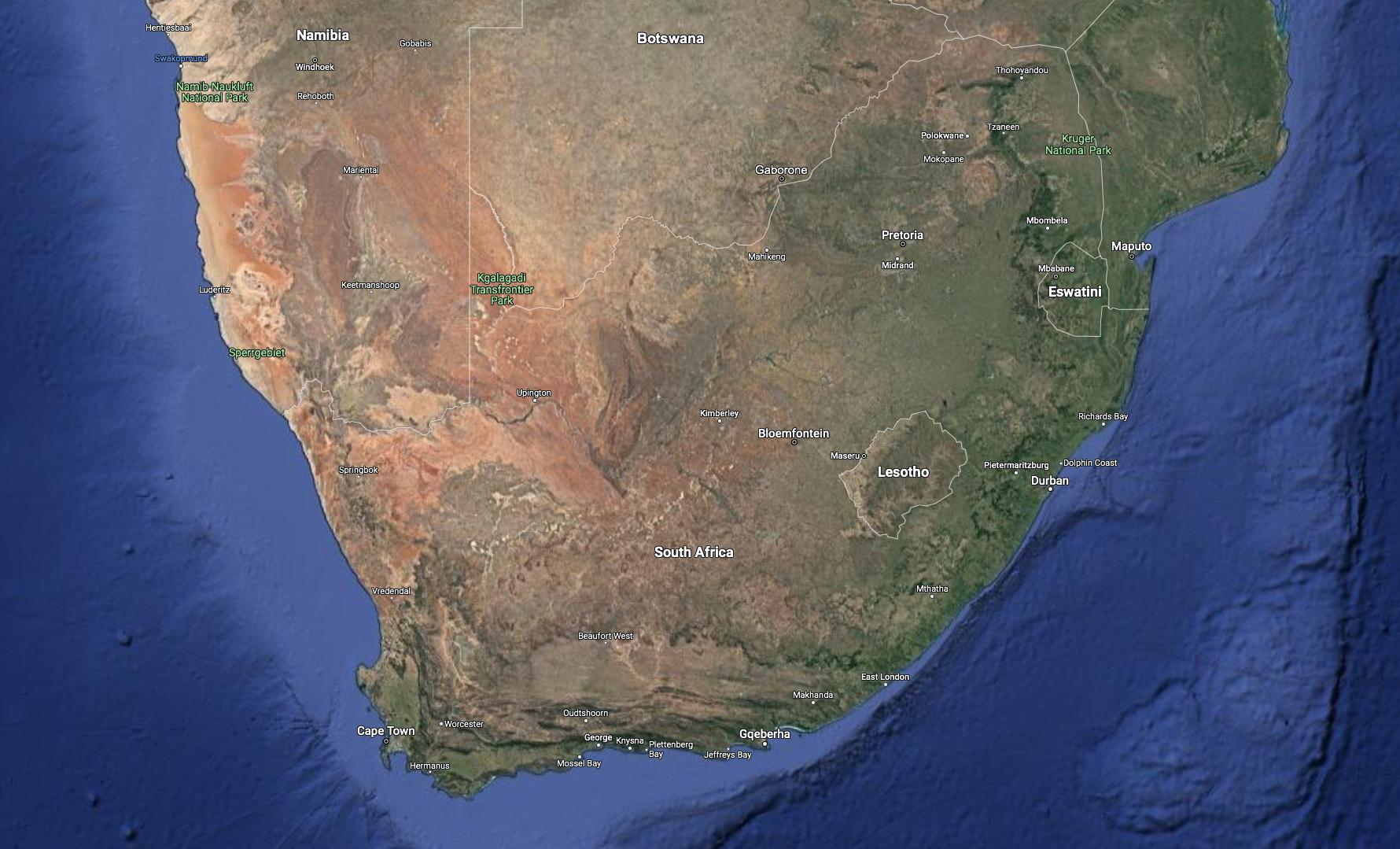

Established in 2007, 208 Aviation is a South African privately-owned company that strives to provide a broad range of aircraft maintenance and inspection services. With 15 years of operation, we have become a key player in aviation operations on the African continent.

208 Aviation has a full SACAA Part 145 AMO (Aircraft Maintenance Organisation) approval with Category A and C ratings. We also hold CAA approvals for South Africa, Mozambique, Botswana, Zambia, Namibia, Uganda and Malawi.

Our speciality is Cessna 208 Caravan, Beechcraft King Air, Kodiak, TBM and Eclipse aircraft maintenance and technical support.

We are a very proud approved Blackhawk dealer and installation facility.
Over the years, we have earned a reputation for providing superior quality workmanship. Doing things right is how we do business. We consider it our responsibility to go above and beyond when it comes to aviation safety and customer satisfaction.
With sound growth and a proven track record, we welcome you to experience the advantage of a dedicated team that brings unprecedented commitment to our customers. Take a few minutes to discover what our expertise can do for you at www.208aviation.com.
Call: +27 83 744 3412 Email: ben@208aviation.co.za Website: www.208aviation.com

N G A R 4
,
O N D E R B O O
I R P O R T
R E T O R
U T H A
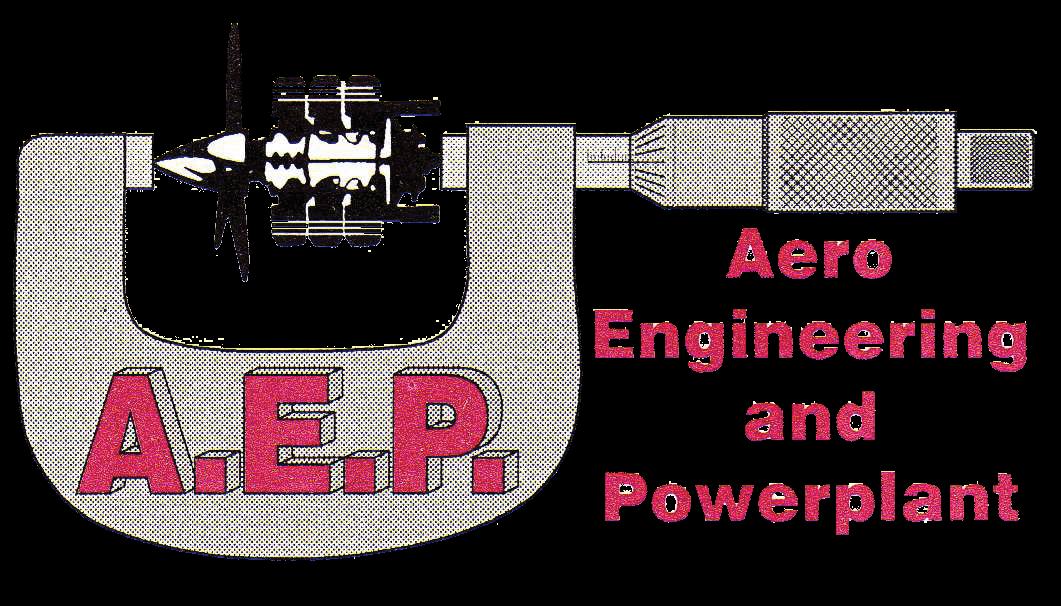
Based at hangar number four, at Wonderboom Airport, Aero Engineering’s services include the overhaul, maintenance, service, and repair of Lycoming and Continental aircraft piston engines and associated components.
Aero Engineering and Powerplant comprises of the following divisions:
ENGINE DIVISION: Overhaul of Lycoming & Continental engines, Carrying out shockload inspections, Bench-testing of engines, Re-boring and honing of cylinders, Repair on starter clutch gears.
COMPONENT DIVISION: The overhaul of all engine components, including: McCauley, Hartzell, PCU 5000 and Woodward Constant speed units(CSU), TCM & Bendix Fuel systems, TCM, Romec, Fuel pumps, Marvel Schebler carburettors, Garrett & HET turbocontrollers,Overhaul & servicing of magnetos.
PROPELLER DIVISION: The supply of new & second hand Hartzell and McCauley variable pitch propellers, as fitted to piston & turbine engine aircraft, The supply of new McCauley & Sensenich fixed pitch propellers, Propeller dynamic Balancing.
The parts division specialises in the sourcing of all piston engine, component, & propeller parts, either from local distributors or from overseas distributors & OEM.
Their client base includes local & over-border operators, and owners, of piston & turbine engined aircraft, as well as local & overborder maintenance organizations.
Tel: 012-543-0948 Email: aeroeng@iafrica.com Website: www.aeroengineering.co.za
Aerocolour cc. was founded in 2005 and has been based at Lanseria Airport, Hangar M5, South Africa ever since.

We are a privately owned Aircraft Refurbishment facility in Southern Africa and have the confidence of a wide variety of Aviation Customers.
Our hard-won reputation is built on excellent workmanship, after sales service and product support as well as personal customer relations, which have earned the confidence of manufacturers and customers alike. Our core business is made up of private and corporate general aviation aircraft owners as well as aviation service providers and sales companies to whom we provide aircraft refurbishment. We proudly provide the service that our clients have come to expect from Aerocolour cc. Aerocolour cc’s broad base of customers stretches throughout South Africa and Southern Africa, as well as UAE and certain Northern African countries.
Aerocolour is a trusted service provider throughout the aviation industry for Respray of Complete Aircraft Exterior as well as panels / parts, touch up and repair of parts or specific areas on aircraft and various other refurbishment requirements.
Please contact Alfred Maraun on 082 775 9720 for any queries and quotes.

Aeronautical Aviation, based at Lanseria International Airport was established in 2005. Our services cover a broad spectrum within the Aviation Industry from; Repairs, Installations, Aircraft Instrumentation overhaul, Avionics, Electrical, Autopilots, handhelds and Pilot accessories. We are exceptionally proud to offer another innovative upgrade solution to our clients with the launch of our new laser department. Taking your avionics upgrades to another level of sophistication, by refurbishing old panels, as well as restoring backlighting switch and circuit breaker panels.
When Clinton Carroll started the company in 2005, he identified a gap in the market when it came to understanding the pilots need, versus, what was realistic and economically viable. As a Pilot and Aircraft Owner, Clinton understands the challenges in the cockpit, regulatory requirements and certification issues, together with the costs associated with the operation of an aircraft, and can offer informed advise, while taking into consideration the cockpit workload, customer requisites, legislative requirements, over capitalisation and down time. We also offer training on all new equipment installed into the aircraft, ensuring our clients are armed with the knowledge to operate the equipment.
We pride ourselves on the fact that our Company Values are built on integrity, honesty, and service excellence. We are committed to providing our customers with outstanding quality while Keeping costs reasonable without compromising on exceptional quality. Our relationships developed with our International Distributors and various Dealerships enables us to provide our clients with a variety of options to suit their operational needs. We are proud to be Garmin’s largest Accredited Distributor in Africa.
The Aeronautical Aviation Team look forward to assisting you. Your success and safety is our number one priority.
7,

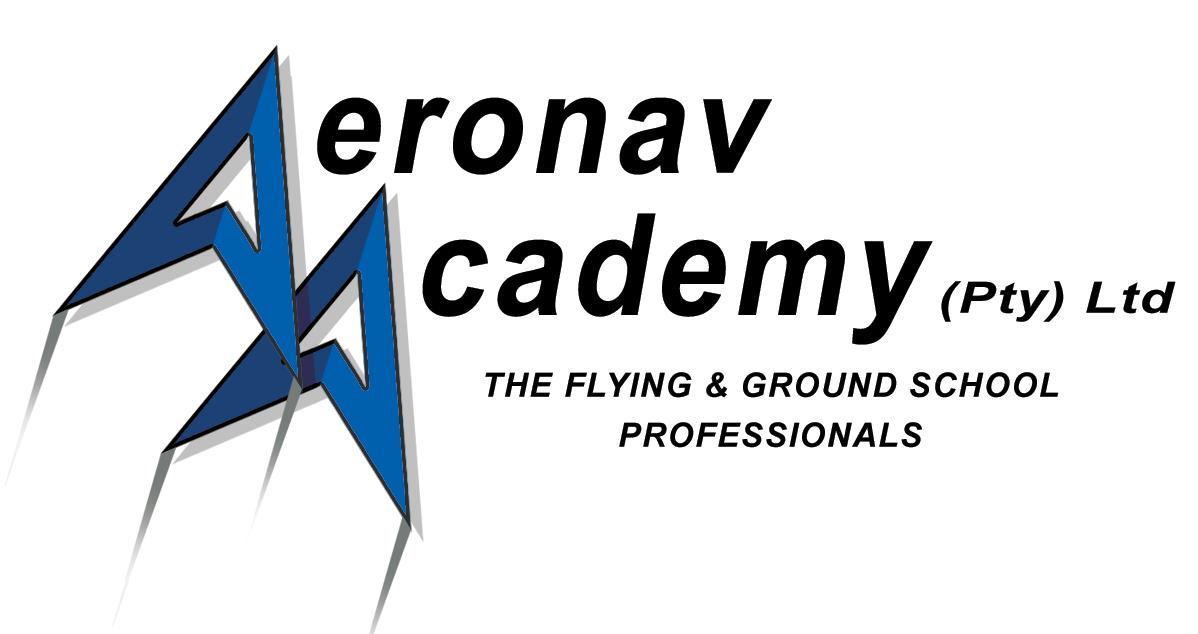
Aeronav Academy is committed to providing top-level flight training utilising the most modern equipment available. This not only gives our clients an enjoyable training experience but also provides Aeronav the ability to conduct flight training in a manner that ensures that student pilots will be ready and well equipped to enter the aviation industry of the future.
Aeronav Academy is proud to offer a dynamic fleet of aircraft, including Diamond DA20s, Cessna 182s and the Diamond DA42 Twinstar Multi-engine trainer. The Academy’s latest acquisition is the impressive Alsim ALX-65 flight simulator. The amazingly realistic graphics feel of the controls and response make training in this flight simulator a truly first class experience.
The school is based at Lanseria Airport. A controlled airspace provides students with an excellent grounding in procedures and gives them the experience needed to cope with operating in a busy airline orientated environment. Whether you choose to fly for pleasure or wish to make aviation your career, Aeronav can provide you with an approved course tailored to your needs.
Tel No: + 27 11 701 3862
info@aeronav.co.za Website: www.aeronav.co.za
is owned by Mistral Aviation
and run by Oliver Trollope and a highly professional and qualified team of
qualified team are available to advise you on the perfect solution to all your electroplating
needs and solutions to perfectly re-finish your aircraft components to the manufacturer’s specifications.
processes are approved by SACAA, Denel, Airbus Europe, Rolls Royce, Pratt & Whitney and Allison Doil.
offer a wide range of services for aircraft owners and general industry, and through our partnership with Mistral Aviation Services, we can offer engineering and NDT services.
We look forward to the future with a range of innovative services to continue servicing the aircraft industry.
Tel: 011 827
Aerotric (Pty) Ltd is based at Wonderboom Airport and has grown from strength to strength since opening their doors in May 2012. The Company prides itself on providing quality and reliable services such as overhauling, installing and repairing all electrical, ignition, instruments and avionics that is efficient and at an affordable rate.
Aerotric is a small company with big heart that strives to maintain relationships with all customers. Consisting of seven staff members Aerotric maintains a policy of high standards and keeping up with the latest technology and trends in aircraft maintenance.
Contact Aerotric on: Office Tel: +27 87 802 1347 Email: admin@aerotric.com or Richard@aerotric.com


Airbus Southern Africa (Pty) Ltd has maintained a presence in South Africa since 1994 and is headquartered at Grand Central Airport in Midrand, South Africa. The Grand Central base is home to the company’s regional Helicopters and Defence & Space businesses.

As a world-leading aerospace company, Airbus offers the most comprehensive range of passenger airliners, military transport and special mission’s aircraft, helicopters, rocket launchers and satellites. It also provides a comprehensive array of aviation, space and geo-intelligence systems and solutions to government and civilian customers.
Airbus Helicopters provides the most efficient civil and military helicopter solutions to Sub Sahara Africa customers who operate an in-service fleet of around 350 turbine helicopters,to serve, protect, save lives and safely transport passengers in highly demanding environments.
Airbus Defence and Space is responsible for sales and support of military transport aircraft in service with the SA Air Force and other armed forces in the SADC region. It also supplies satellite images, geo-intelligence and space data solutions to government, research and commercial customers.
Worldwide, including South Africa, Airbus employs a workforce of around 130,000 people.
Contact: contact.marketing.ahza@airbus.com Telephone: +27 (0) 11 266 2600 Fax: +27 (0) 11 266 2628 Web: www.airbushelicopters.co.za www.airbus.com
Not ‘just another’ flying academy. A childhood dream and a great passion for all things aviation led to the founding of this company. Alpi Aviation is headed by avid aviation enthusiast, Dale de Klerk, who is an accomplished hangglider, microlight, glider and fixed-wing pilot.
Dale has won several regional and national competitions, becoming world Rally Flying Champion in 2003. Dale also earned his Springbok Flying colours in Rally and Precision flying from 1995 through to 2004, and continues to challenge his considerable aviation capabilities in a wide range of aviation techniques, styles and aircraft.
ALPI Aviation SA was established after the demand arose for an accredited training organisation to cater for those who don’t want to be, ‘just another pilot’. The intention was to build an accredited Flight School, certified to CAA standards, using experienced instructors with an ethos of respect toward all their students.
At Alpi Aviation, we value the individuality of each student, and we will do our utmost to hone their capabilities and enhance their passion.
No one is ‘just another student pilot’. It is with this credo in mind that we invite you to personally experience how our broad background of solid aviation experience and expertise can take your flying career to new heights.
Contact Alpi Aviation on: Tel: +27 82 556 3592 Email: dale@alpiaviation.co.za Website: www.alpiaviation.co.za


‘Trustworthy Sales, Airworthy Excellence’ With 25 years of experience in aircraft sales Maartin Steenkamp established Ascend Aviation in early 2014.
Aviation sales specialists must not only possess an exceptional understanding of their field and products, but also of the customers’ needs and experience in aviation.
Acquiring an aircraft is an emotive as well as a practical decision.
Maartin’s market knowledge and track record is greatly respected in the industry and Ascend Aviation’s customers can be assured that they are getting the most honest, independent, objective solutions to their present and future requirements.
Ascend Aviation has assembled a team with the experience and abilities to streamline the entire process for buyers, from selection, budgeting and finance, through longterm performance and cost expectations, to ongoing advice and support, thereby making aircraft acquisition and ownership a rewarding and pleasing experience.
Ascend Aviation believes personal attention, relationship building and integrity is key to service excellence, and provides a comprehensive range of services to the aviation industry:
• Aircraft Sales
• Acquisition mandates
• Aircraft Valuations
• Aircraft Management
• Aircraft Finance
• Aircraft Insurance
• Aircraft Ferry including Importation and Exportation
Contact Ascend Aviation on: Tel: +27 (0)11 064 5624
Email: sales@ascendaviation.co.za Website: www.ascendaviation.co.za

The internet has opened the world, but for many of us it is still preferable to talk to someone who has the experience and knowledge of local conditions, right?
Well, AviationDirect has been around for over 20 years, and we are in the forefront of providing airfield and aeronautical information for Southern Africa within our various products.
We have the most comprehensive database of airfields for this part of the world, receiving first-hand information from active pilots and operators in the field.
Our exciting range of products for pilots flying in Southern Africa are designed to make the pilot’s task easier, safer and more comfortable. Added to that, we provide excellent customer support.
Products that we are particularly well known and respected for are:
• The Airfields Directory for Southern Africa and
• Africa, available in printed and electronic format
• EasyPlan, the flight planning software for desktop/ laptop PC with Win OS, an easier way to do flight planning, print out flight logs and maps
• EasyCockpit, Southern Africa’s most used in- flight navigation app for Apple or Android Mobile Devices, there to enhance situational awareness, and, together with Easy-Weather overlays of radar, satellite and winds, to provide additional safety and peace of mind
• Logbooks (electronic and printed) which have been devised according to SACAA requirements.
Contact Andrea Antel on: Tel: +27 11 465 2669
Mobile: (0)72 340 9943 Email: info@aviationdirect.co.za Website: www.aviationdirect.co.za

Aviation Rebuilders SACAA approved Category B and X5, AMO 188, based in the Showroom, Rand Airport, Germiston.
Established in 1997, Aviation Rebuilders will be celebrating our 25th anniversary in 2022. Our team is a family that have worked together to build and establish the reputation of our AMO over many years, each one invaluable for their contribution to the organisation.
We are proud to offer the services of our well established and equipped sheet metal workshop, approved aircraft welding facility, as well as our flight control cable section.
We look forward to welcoming you and your beloved aircraft to our family.
Contact Aviation Rebuilders on: Tel: +27 (0)11 827-2491 Cell: +27 (0)82 872-4117 Email: lyn@aviationrebuilders.com

AviSys Aviation Systems is an established Maintenance Organisation (AMO 1089) with SA CAA, and other African CAA accreditation to perform component maintenance and overhaul capabilities under its Category B rating.
Currently, AviSys is equipped to cater for our clients’ needs as per the SA CAA Approved Capability List and Operational Specifications on the following:
• Aircraft Braking Systems repair and full overhaul capability with SA CAA Component
• Release to Service (Authorised Release
• Certificate) on the following OEM Makes;
• ABSC, Honeywell / Bendix, Goodrich and Meggitt Aircraft Braking Systems.
• Aircraft main and nose wheel assemblies for the above makes, to repair and overhaul.
• Landing Gear Repair and Overhaul
• Helicopter Servo Actuator Repair and Overhaul
• Flexible Hose Build-up
• Engine Fire Bottles HPT, Service, Fill and Re- charge
AviSys Aviation Systems is committed to deliver service excellence and quality workmanship at market related prices, carried out with years of cumulative aviation experience in our field by means of dedicated hand-picked staff members.
AviSys looks forward to establishing long and just relationships with our client base, in order to meet our high standards of customer satisfaction.
Hangar 17 Wonderboom Airport
Email: dewald@avisys.co.za
Phone:
Fax:
Website:

Avtech Aircraft Services based at Wonderboom National airport maintains Beechcraft, Piper, Cessna, Bellanca and Aerostar aircraft. With over 28 years of operation, the family-owned business has a vast experience in aircraft maintenance and meets the highest standards, still under the guidance of Riekert, Sr.
Avtech Aircraft Services component shop specialises in the overhaul and repairs of Continental fuel systems, carburettors and constant speed units, which include Woodward, McCauley, Hartzell & PCU5000. This division is run by Andre Botha, AKA Proppie, who also has many years’ experience in his field.
The Avtech team have collectively over 170 years of experience, between just four people. Avtech is therefore a wise first stop for all your general aircraft maintenance requirements.
For more information contact PJR Stroh, Sr, on 082 555 2808 or PJR Stroh, Jr, on 082 749 9256.
Visit them at Hangar 6 Wonderboom Airport. Email: avtech1208@gmail.com
C.W. Price and Company has been involved in aviation and meteorological instruments for over 71 years. They also import aircraft ground power units and aircraft towing and push-back equipment.

Based in Midrand, C.W Price are the appointed agents for airport support equipment from aircraft ground power to man portable rugged Redbox power packs for aircraft starting.
They are also agents for Eagle All Wheel Drive aircraft tow tugs for regional, corporate and military applications.
They are also importers of Precision Airmotive fuel injector parts and overhaul kits along with some starter generator spares.
Weather stations stand alone for regional airports or their well established online VitalWeather system for remote or sms monitoring of small airports is a specialty of theirs.
Contact Kelvin on: Tel: 011-805-4720 Email: cwp@cwprice.co.za Website: www.cwprice.co.za
DJA Aviation was formed over 40 years ago by Dennis Jankelow and to this day remains South Africa’s foremost specialist aviation insurance brokerage, offering the greatest concentration of aviation insurance experience and expertise on the African continent and continuing to lead the market in the areas of product innovation and technical development.
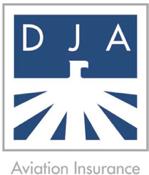
DJA Aviation creates aviation insurance programmes for its clients that are perfectly balanced in the critical areas of cost, coverage, service and security. In addition, DJA Aviation’s long- standing and close relationships with the insurers who underwrite its products – locally, regionally and internationally – ensure that a DJA Aviation client is in the best possible hands when losses occur.
DJA Aviation is an authorised Lloyd’s correspondent and has conducted aviation insurance business at Lloyd’s for more than 40 years, a relationship that is strengthened by regular visits to the Lloyd’s market by DJA Aviation’s key personnel.
DJA Aviation is an Authorised Financial Service Provider (FSP No 15808) and a proud member of the iCapital Group. DJA Aviation’s social responsibility programme includes on-going support for the South African Guide Dogs Association for the Blind.
Contact DJA Aviation on: Tel: 0800FLYING (0800 359-464) Email: mail@dja-aviation.co.za Website: www.dja-aviation.co.za

Dart Aeronautical was established in 2006 and is situated at Rand Airport.
We are committed to providing excellent service with the highest technical standard, not only locally, but to surrounding airfields as well. This division is headed up by Jaco Kelly and Pieter Viljoen. The team of 15 specialises in all aircraft types ranging from homebuilt to DC9 aircraft.
We are market leaders in instrument and instrument panel refurbishments, which include the use of aircraft approved paint, router cutting and laser engraving.
Dart Aeronautical is an agent for all major avionic and instrument suppliers such as:
• Garmin
• Mid Continent
• Bendix-King
• Sigma Tek,
• JP Instruments
• Airtex
• S-Tec etc.
Our ability to purchase directly ensures our completeness and that our customers receive value for money without any reduction in quality and safety.
We carry a wide variety of serviceable units in store that can be used as loaners while working on a customer’s unit or that can be purchased or exchanged.
Contact Pieter Viljoen on: Tel: +27 11-827-8204 Cell: +27 83-652-4421 Email: pieterviljoen@mweb.co.za Website: www.dartaero.co.za
Established in 2008, Dynamic Propellers specialises in the overhauling, repair and maintenance of propellers for commercial and privately owned aircraft.

a staff compliment with a total of around 130 years propeller overhaul experience, Dynamic Propellers overhaul and maintain all Hartzell, McCauley, MT, Hoffmann, Sensenich and Hamilton propellers and is the only enterprise in South Africa that provides comprehensive repair and maintenance services on Dowty and Whirlwind propellers.
of which is done to the highest standards as stipulated by the various propeller manufacturers.
Propellers’ repair services are performed both in-house in a state of the art aviation engineering workshop, or in the field.
Highly skilled engineers will travel domestically or to neighbouring countries and abroad to cater for customers’ propeller requirements.
Dynamic Propellers is an SACAA
Service Centre, AMO 1150, and is the sole McCauley
Service Centre for the African continent.
Details:
+27 11 824
82
“Quality is our Passion”, this is the mantra that we live by at Executive Aircraft Refurbishment. We are an Aircraft Interior and Exterior refurbishment facility, based at Lanseria International Airport, quality workmanship and service excellence, combined with knowledgeable staff has earned us the reputation of No.1 Aircraft Interior and Exterior refurbishment facility.
Complete aircraft exterior paint strip and resprays are done all under one roof, designing paint scheme lines, logo’s to customer specifications. We also offer a mobile touchup service to our customers ensuring their aircraft stays in mint condition.
Our interior shop also specializes in complete interior refurbishments such as the refurbishment of overhead stowage bins and seating, Roof-liners, cockpit glare-shields, cabinets and galleys, wool carpets, textile and non-textile floor covering, refurbishment of seats and foam building in varying modern styles. We manufacture interior window sun- shields and aircraft exterior ground covers, EAR also re-web and re-certify aircraft safety belts.
Executive Aircraft Refurbishment are the right choice for interior and exterior refurbishments of your aircraft from interior refurbishment to exterior spray painting, we do it all.

Entrust your fleet to Executive Aircraft Refurbishment for a new fresh look and we promise to have your aircraft ready and serviceable when you need it.
Tel: +27 (0)10 900 4149 Mobile: +27 (0)82 547 8379
Info@earefurbishment.com
Hangar 24 (interior shop) and 31(paint shop) Lanseria International Airport, South Africa, Gate 5, North Side
F. Gomes Upholsters is a family based upholstery company. Established in 1979, the company specialises in aircraft, as well as motor vehicle, boat and furniture upholstery.
F. Gomes Upholsters will refurbish your aircraft interior to look like new, giving it the class it deserves. They use only the best quality materials, and their craftsmanship is outstanding. Mr Gomes, the founder of F. Gomes Upholsters, has been in the upholstery business for close on 40 years and as such brings many years of experience and professionalism to the company.
F. Gomes Upholsters provides an expert re- upholstery and upholstery service that caters to any upholstery need. No job is ever too small or too large.
F. Gomes Upholsters is based in Johannesburg. For exceptional craftsmanship at the best prices, contact F.Gomes Upholsters on: Tel: (011) 614 2471 Fax: (011) 614 9806 Email: gomesuph@netactive.co.za


Gemair was started in 2007 by Andries Venter, a South African Air Force trained engineer with over twelve years of aviation maintenance experience. Since relocating to Lanseria International’s south side in 2009, the company has continued to grow and now looks after the maintenance needs of a full range of privately owned, training and charter operated aircraft. These range from Non-Type Certified Aircraft through light singles and twins and on to turboprops and light jets.
Gemair is a recognised CAA Approved Maintenance Organisation, AMO number 1003, and has a team of nine full time engineers who together have a combined total of over 50 years of aviation experience. Backed up by the full time administrative staff, Gemair is able to perform all your aviation maintenance requirements. The company has expanded into aircraft interiors through the acquisition of Lanseria Aircraft Interiors and aircraft charter through the acquisition of Out of the Blue Air Safaris.
Contact Andries Venter: Cell: 082 905 5760 Email: Andries@gemair.co.za
Heli Afrique specializes in general helicopter maintenance, upgrades, repairs, interior and exterior refurbishment and modifications, specialising in the Airbus Helicopter SA341, H125 (AS350/355 series), H120 (EC 120), H130 (EC 130), H135 (EC 135 series), BO105 and BK117 helicopters. We provide first and second line maintenance of TURBOMECA, Allison and Lycoming Engines and hold a service centre for Robinson R22 & R44 helicopters.
Heli Afrique can assist with inspections, C of Registration, Airworthiness formalities and have assistance from SACAA Inspectors to issue Certificates of Airworthiness and Certificates of Registration from abroad in foreign countries.
Heli-Afrique facilitates the sale of used helicopters, carry out export/import, customs and shipping formalities. We provide pre-purchase inspections of helicopters worldwide.
Heli-Afrique is based at Rand Airport, owns two state of the art
hangars, one is to supply a hangarage service to clients to keep their helicopters ready to fly at any time. The main hangar is were all the maintenance work is done, we also have all the necessary maintenance tooling as required by manufactures to carry out the various tasks required on the helicopters.
Heli-Afrique holds the following CAA
SACAA # 830, Republic of Zambia, Zimbabwe, Angola and Lesotho.
We are the proven alternate ‘AMO’ to Airbus Helicopters and TURBOMECA in Southern Africa.
Contact: Land line: +27 11 827 8632/33
Cell : +27 83 458 2172 - Tino Cell: +2783 446 0066 - Duty Engineer Email: info@heli-afrique.co.za www.heli-afrique.co.za
KZN Aviation is an established BEE compliant multi-tasked aviation company, based at Virginia Airport in Durban North. We are licensed in terms of the South African Civil Aviation Authority and the Air Service Licence Council.
KZN Aviation own and operate both fixedwing aircraft and helicopters, offering a range of services that include helicopter and fixed-wing VIP charter work, contract work, tourism flights, powerline and pipeline inspections, aerial photography, vehicle searches, traffic surveillance and patrols to name a few applications.
KZN Aviation has a hand-picked team of professional and dedicated staff who are available 24/7 to offer assistance, advice and provide cost effective quotations. We have vast experience in the charter and contract market and have been actively involved in aviation for decades.
KZN Aviation pride themselves on ensuring that high quality services, tailormade to meet customer requirements are provided efficiently and effectively without compromising safety. Our rigorous safety standards are maintained by highly experienced flight crews and are constantly reinforced through the highest levels of professionalism and integrity displayed. Our crew receive recurrent training to ensure performance remains consistently exemplary.
Contact KZN Aviation on: Tel: 031 564 6215 Melanie Simon: 082 655 7811 Email: mel@kznaviation.co.za Website: www.kznaviation.co.za

Mistral Aviation was founded in 2002 with the aim of addressing the high cost of operating aircraft thousands of miles from the original equipment manufacturers. (OEM).
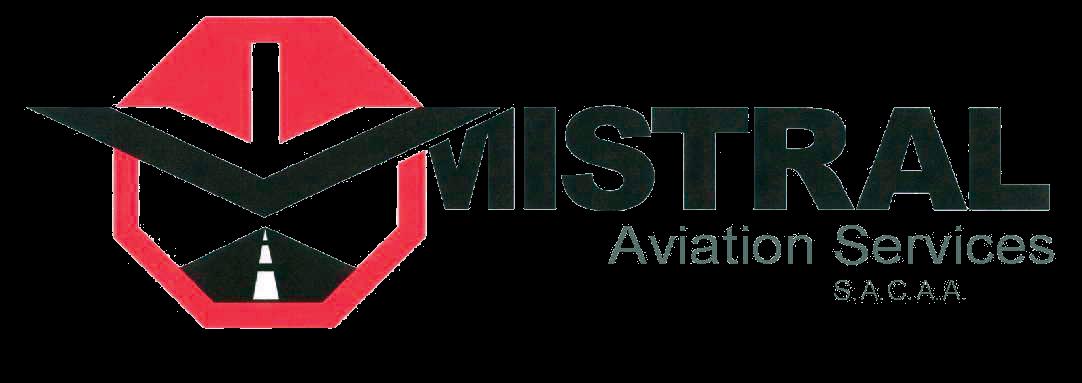
Mistral continues to add to its capability and has just added Machining and NDT.
Our experience has grown and we are about to embark on training of our staff to take up the challenge of new equipment.
Contact Details: Telephone: (27) 81-755-2534
Fax: (27) 11- 395 1291 E-Mail: Peter@mistral.co.za Website: www. mistral.co.za
Address: Safair
Northern Perimeter Road,
Tambo International Bonaero Park Kempton Park Gauteng South Africa

Pambele Aviation has its primary base of operations located at Grand Central Airport (Midrand). Pambele Aviation is a dependable air charter company operating throughout Southern Africa providing light aircraft transport services. We have been operating in the South African air charter market since 2006 and have fourteen years’ experience providing charter flights for the private and business sectors, transporting business leaders, tourists and VIP’s.
The primary aircraft being operated are a Beechcraft King Air B200 and a Cessna Grand Caravan 208B. A number of light piston engine aircraft are available for smaller group sizes, or for those who are budget conscious.
The passenger charter services are ideally suited for customers requiring access to remote, or poorly serviced destinations.
A satellite base of operation is located at Kruger Mpumalanga International Airport serving the Lowveld region of the country.
Pambele Aviation holds license N892D and a Part 135 AOC.
Email: fjoubert@pambele.aero OR lowveld@pambele.aero


Proudly South African company, SkyReach, manufactures the BushCat Light Sport Aircraft, which are popular world-wide. Available in a ready-to-fly option or a kit that you can easily build yourself without any special skills or tools.

This stable and forgiving aircraft makes it a firm favourite in flight schools. The BushCat’s rugged and reliable characteristics, together with the widest cabin and excellent outward visibility, makes operating “low and slow” for intense anti-poaching and survey roles a pleasure. Should the need arise, in-field maintenance is quick and easy.
Operators receive excellent support from the factory in terms of rapid servicing times, as well as availability of spares, which minimises their operational down-time.
Flying and maintaining a BushCat is simple and cost effective, perfect for any enthusiastic aviator!
SkyReach can confidently boast that their BushCat aircraft has been extensively tested and does comply with ASTM standards (American Society for Testing and Materials).

Skysource International South Africa, a Aircraft Maintenance Organisation, situated at Lanseria International Airport, strives to provide its clients with only the best quality service, ensuring a relationship with trust, confidence, integrity and peace of mind in a job well done.
Specialising in turbo prop aircraft we deliver aircraft refurbishments with an excellent lead time and quality maintenance including but not limited to Scheduled, Unscheduled Inspections, and Airframe sheet metal repairs.
With highly skilled and experienced technicians, we strive to only deliver the best quality service beyond our client’s expectations. As we have the knowledge of the time constraints involved in aviation, we work hard to ensure we keep to a reasonable timeframe to have your aircraft ready and serviceable when you need it.ent.
Contact: Telephone: +27 10
info@skysourcesa.com
Sport Plane Builders cc (AMO 1189) based at Wonderboom Airport is run by Pierre van der Walt and his team. We repair, service and manufacture non-type certified aircraft (NTCA) and hold a Part 148 manufacturing organisation license (M712).
Our services include:
• Running a composite workshop for composite repairs and manufacturing of parts, including non-structural and structural repairs on type and non-type certified aircraft.
• Model and construct new composite plugs and moulds.
• Supply of under carriage and composite components for the Bat Hawk.
• Steel and aluminium manufacturing
• Assist owners in building RVs, including servicing and restoration.
• Partners in the new PCAD 700 6 seat single turbine aircraft project.
• Building to order Ravin 500 – full Composite Comanche look alike.
• Building of turbine Compair – a six to eight seat Walter 601D turbine powered tail draggers.
• Maintain and rebuild various Rotax engine powered aircraft.
• Tecnam support in Southern Africa
Contact: Tel: 0872308468/69 Cell: 083 361 3181 Email: info@sportplanebuilders.co.za www.sportplanebuilders.co.za

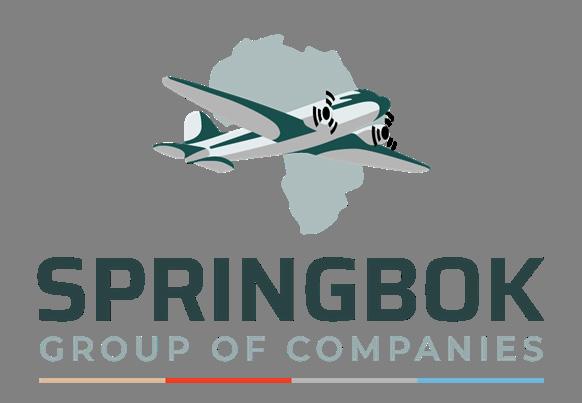
Springbok Group of Companies is a family run business with over 76 years of flying experience in South African Airways. Springbok Classic Air operates a rare fleet of Aircraft that have slowly over time become some of the last of their kind in Africa and around the world, which makes it our duty to ensure we can share these rare and historically significant machines with fellow Aviators who have a fine taste for the romance of vintage air travel. We specialise in custom Flying Safaris on our vintage fleet to destinations across Southern Africa.
Springbok Air Academy provide pilot training from Private Pilots Licenses all the way up to B737 and A320 Type ratings, and Springbok Aviation Services offer the highest standard of aircraft Maintenance.
Preservation, Conservation,
Offshore Helicopter Operator
today
see what it means to be a part of our Springbok Family.
Titan Helicopter Group Tel: 044 878 0453 / 044 050 3900 Email: info@thghelicopters.com www.titanhelicopters.com
PW Botha Boulevard, Tamsui Dustria, George, South Africa.

NBAA-BACE (National Business Aviation Association – Business Aviation Convention and Exhibition) expo organisers reported that teeming crowds and lots of face-to-face interaction made this year’s 75th edition of the expo a great success. What used to be called simply ‘NBAA’ became NBAA-BACE a few years ago, reflecting its dual mission of bringing industry stakeholders together to convene, but also to promote their wares; both B-to-B and in the case of display aircraft, to potential end-user customers. The event combines a wide-ranging slate of meetings, seminars and education sessions with a commercial element.
This year’s event was held in Orlando, Florida. In 2020 NBAA-BACE was completely virtual and returned to its live format last year, when crowds were seen as impressive, ‘under the circumstances.’
There was almost a palpable sense of relief that the show was back to what it used to be. At times and in places, the convention floor was practically impassable.
The opening ceremony was well-attended. The static display at Orlando Executive Airport

appeared similarly populated. A random sample of exhibitors at both venues seemed to feel that attendee traffic was solid.
NBAA goes to great lengths to spotlight the economic advantages of the flexibility and costeffectiveness of non-airline air transport for business purposes. NBAA-BACE is also the place to announce or show off new products and that is one area where the past two years’ doldrums and global uncertainty continue to slow the return to normalcy. While major airframers such as Bombardier, Gulfstream, Dassault and Textron reported progress with their up-and-coming models, there was not much in the way of ‘new and shiny’ to see.
Supply chain issues were blamed for some of the sluggishness, but concerns over the state of the economy, financial issues and labour shortages also contributed.
The same holds true for those in the plethora of service industries associated with business aviation, marketing, avionics, maintenance, finance, FBOs and insurance.
The 2022 version of the industry standard NBAA-BACE expo was a confirmation that the business jet industry has almost returned to its pre-covid levels.






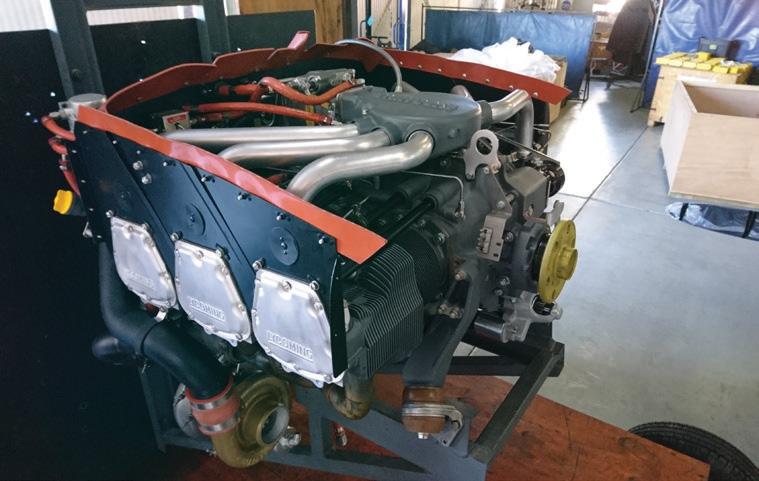
Seconds count when lives are on the line. It’s why every feature of the Airbus H135 has been designed for safe, effective, and fast operations. With easy patient loading, state-of-the-art avionics to reduce pilot workload and a safer working area on the ground, the H135 ensures people get the medical care they need as fast as possible. All of this has made the H135 the emergency medical services market leader around the globe – helping people every single day and making sure the world remains a beautiful place.
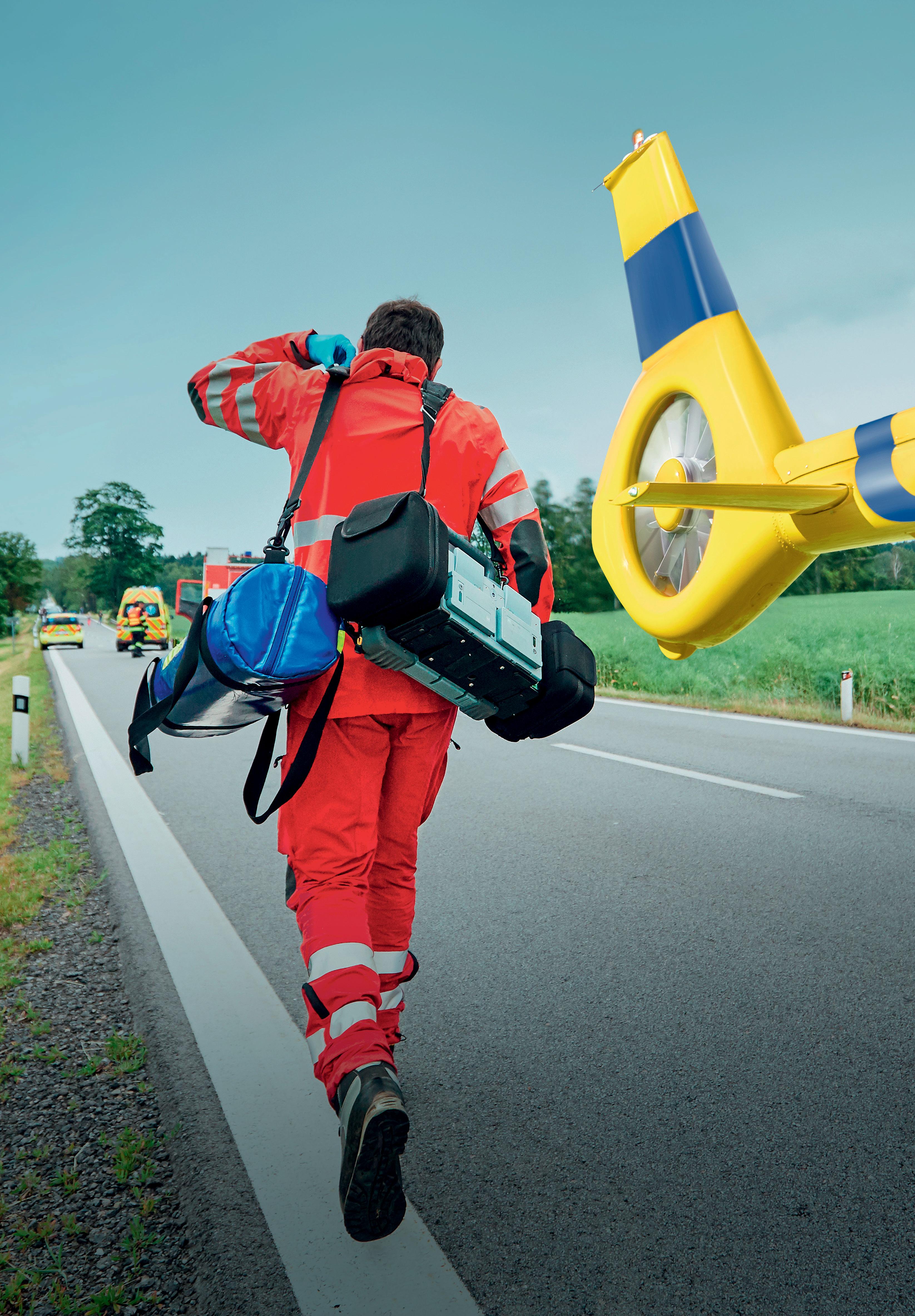
Publisher Flyer and Aviation Publications
Managing Editor Guy Leitch guy@flightcommag.com

Advertising
Wayne Wilson wayne@saflyermag.co.za
Layout &
Patrick Tillman: Imagenuity cc

+27 (0)83 607 2335
ADMIN: TRAFFIC:
+27 (0)81 039 0595
ACCOUNTS:
+27 (0)15 793 0708
THE RECOVERY of the southern African airline industry has been marked by striking successes and equally striking failures. The mix of winners and losers made it difficult to gauge the overall mood of the industry at the African Airlines Association (AASA) Annual General Assembly outside Cape Town.
Making up for the two-year hiatus caused by Covid, this year’s AASA annual assembly was very well attended. Over 260 delegates pitched up for the annual catch-up.
With the loss of over 50% of South Africa’s low-cost carrier seat supply, there has been a windfall in loads and thus yields for the surviving carriers. Their presumed profitability has attracted the attention of South Africa’s Competition Commission.
However, the strong demand experienced by some carriers was offset by acknowledgement of the difficulties other AASA member airlines are having with the postCovid recovery.
the reliable supply of fuel, which is the most immediate pressing issue.”
The strong recovery by FlySafair, Airlink and Cemair has given them the opportunity to rapidly enlarge their pre-pandemic fleet. This has been made possible by the depressed prices of many jets, especially the narrowbodies, and the excess of seat demand over supply.
Regional airline CEOs reported a mixed view of recovery prospects. Joao Carlos Po Jorge, the DirectorGeneral of Linhas Aéreas de Moçambique (LAM) was cautiously optimistic about his small airline’s chances of being able to grow its niche in the competitive southern African market.
Despite the fast bounce back by some airlines, the consensus was that confidence for the year ahead is clouded by economic ‘challenges’ such as inflation, rising interest rates and energy costs, as well as currency devaluation against the very strong dollar.
As a whole, the African airline industry has been slow to recover from the pandemic and is still operating at around 80% of pre Covid levels. This is evidenced by figures that show Africa’s share of the world airline market has fallen from around 2.2% of global traffic to just 1.8%.
FlySafair, Airlink and Cemair are fast growing into the space left by the collapse of Comair’s kulula and BA brands and the earlier closure of low cost carrier Mango and SAX. FlySafair CEO Elmar Conradie said, “Our industry emerges from the Covid-19 pandemic in a very different shape to what it was. It is leaner, fitter and stronger, but faces considerable economic and regulatory headwinds and external threats, including
A common sentiment was that while these are all concerns, traffic is strong and fares are high, so the airlines are bouncing back strongly. The resilient airlines will adapt to changing circumstances.
AASA CEO Aaron Munetsi said, “Key issues addressed included the need for urgent action by governments in the region to review policies and regulations to enable a more efficient, comprehensive and competitive air transport industry to serve and support all of the economies of the SADC region.” So there you have it.
IAM NOT ONE OF THOSE lucky guys like Sky Masterson or Rick Drury, who were born with wings and tail feathers and had to wait until they could walk before they were allowed to use them. I didn’t learn to fly until I was 27 years old. In fact I nearly missed out on flying altogether.
I was not around for the Battle of Britain, but I was born before the end of the Second World War. My father was killed during the invasion of Normandy. So, when I was brought up, pilots were still considered to have saved Great Britain, and possibly the World, from the Nazi jackboot and Japanese domination. They were held in awe. A race of such legendary, heroic and chivalrous stature that they were not really considered to be ordinary human beings like you or I.
like me waking up one morning and deciding, “Okay. It’s going to be Winston Churchill. That’s what I’m going to do with my life. I’ll be a Winston Churchill.”
the highest scoring mountains, in terms of aircraft wrecks.
No, I was forced into flying by the cousins with whom I was farming on the romantic slopes of Kilimanjaro, in Tanzania. My job was to build a dairy. One morning, after breakfast, Sue (now Lady Susan Wood, wife of the late Sir Michael Wood, Plastic Surgeon and protégée of Sir Archibald McIndoe who saved many horrendously burned pilots during the Second World War), the mother of the house, approached me and asked, “Hugh, are you intending to stay on with us here?”
I was alarmed by these words, because they sounded like a prelude to a suggestion that I should look for a future elsewhere.
So, quite naturally, I never even thought about Hugh Pryor as a member of that elite. It never once occurred to me. For me to take up flying would have been rather
“Yes, Sue. I would love to stay if that fits in with your plans.”

Some of my friends say that I am a slow reader and a late developer. Maybe they are right, but I find that when I read something, I tend to remember it better than some of the high-speed readers of my acquaintance do, and when, a bit later in life than some of my contemporaries, I spot some new enthusiasm I tend to fall for it, big time.

“Right, Hugh. Well we think that, in order to be a really useful member of the farm team, you should get an aeroplane and learn to fly.”
And that was how it all started. I didn’t even get into an aeroplane until I was eighteen years old. Even at that age, I felt a bit like a dinosaur among my ‘airline’s-the-only-way-to-travel’ friends. That was in a place called Madang in New Guinea, where I was doing Voluntary Service Overseas, because the British Government had ended compulsory Military Service recently before.
Up to that point I had been convinced, based on a terrifying ‘falling’ dream that I’d had when I was a baby, that I would be killed, the first time I left the ground in an aeroplane. I blame this phobia on my brother Stephen. When we were small he took it upon himself to fill my brain with copious pieces of duff information. “Carnations,” he told me, “came from Australia and that is why you must always plant them upsidedown.” He was so plausible that to this day I have a suspicion that there must be some truth in that palpable untruth, in spite of my marked lack of success in growing carnations, over the years. “Plant roots go right to the centre of the Earth,” was another piece of horticultural misinformation which he handed out, but I never questioned how grass grew on bridges. I just assumed that the roots went right down to the far end of the bridge and then plunged towards the Earth’s core. “People with razor-sharp partings in their hair are good mathematicians,” he sagely advised me one day, when I had just earned myself another ‘Blue’, for bad performance in Maths at junior school. I am a hopeless mathematician and even now, fifty years on, I catch myself taking extra care over my parting in the mornings, in an instinctive, if fruitless, effort to improve my mathematics.
not exactly through a fear of flying, but more because ‘Going by Air’ was still the preserve of the very rich. People still dressed up to go on an aeroplane, in the early sixties.
The year of my first experience in an aeroplane was 1963. It was early one morning at Madang Airport, the home of Madang Airlines, which belonged to the legendary Reg Ansett. I was crammed into the back seat of a Cessna 185, belonging to another pillar of New Guinea Aviation, Dennis Buchanan. This aircraft, if I had but known, was the progenitor of Territory Air Lines. Territory Air lines was to become the backbone of airborne communications throughout New Guinea in later years.
Sharing the back seat with me was the petite little Papuan wife of Simeon Kibikibi, the Medic at Simbai which was our destination. Simbai was an Australian Colonial Administration post 6500 feet above sea level, in the bottom of a valley, with mountains going on up over ten thousand feet all around. The Simbai valley was one of four which flowed into the Ramu River like the fingers of a hand. The little finger was the Kinimbong, the ring finger was the Simbai, the middle finger was the Assai, and the index finger was the Aiome. There was no thumb really, unless you called the main Ramu River a thumb.
People didn’t fly much after about midday in the highlands of New Guinea because the weather clamped in on the mountains and earned them the reputation of being the highest scoring mountains in the world, in terms of aircraft wrecks.
“People who have ‘Falling Dreams’ when they are babies, will die, the first time they fly in an aeroplane.” This was the piece of advice that assured me of my limited future. I even worked my passage out to New Guinea, as the Junior Apprentice on a Tramp steamer,
The problem with the finger valleys was that they are narrow, so once you got into one of them, you were committed to a landing. If there was an airstrip at the other end of the valley you would survive. If there wasn’t, you wouldn’t. It had been proved monotonously. Each gory accident had been described to me in lurid detail, by Con Hatters, the Anglican priest, whose guest house had been put at my disposal in Madang, during my week of ‘acclimatisation’. (“Hugh, you’ve got to wear long boots up there in Simbai. 90% of
snake bites occur below the knee, young man, so don’t let me see you in those silly little desert shoes again. OK?” HSE advice from Con Hatters.) So I knew, pretty well exactly, how I was going to die.

Sitting, hunched up, in the back of the 185, I couldn’t see the pilot, because the cabin was piled high with boxes of supplies. I was aware of the strong clean smell of washing soap emanating from Mrs. Kibikibi. I wondered if she could catch the whiff of fear emanating from me.
Soon we felt the cabin bounce as the pilot climbed in the front. There was a tinny bang as he slammed the door and locked it. We heard the broad Australian twang in his voice, as he called the controller for start clearance and we heard his reply when he received it. My short span on Earth was drawing to a close and I was resigned to my fate. There was a pause while
he set the various controls up for the start and then there was a ‘click’, followed by silence. Then there was another ‘click’ and another and another, followed by a well-known, but unprintable, Australian expletive.
The pilot’s door opened. “Sorry, Folks,” said the Aussie twang, “She won’t play. Starter’s on the blink. Everybody out. We’ll try again tomorrow.” My life had just been extended by one day. Another sleepless night ahead. I knew precisely how the condemned man feels on death row. More lurid stories from Con Hatters, over the beers that evening. Apparently there had been a dramatic landslide in the Simbai valley. Dozens killed. Dozens missing. So, even if we made it to Simbai airstrip, we stood a fair chance of being wiped out by a landslide. Fate appeared to be closing all the loopholes.
With the South African Air Force’s Gripen fleet steadily returning to operational status after a year-long grounding as a result of budget cuts and delays in negotiating a new support contract, there were once again claims by politicians, journalists, civil society, and members of the public that the country has no need for fighter aircraft at all.
THIS IS AN ARGUMENT that has been made since the earliest days of the 1999 Strategic Defence Procurement Package (aka ‘Arms Deal’) in which the country acquired 26 Gripens from Saab in Sweden.
This column will provide some of the reasoning and justification for a fighter capability and background on how the decision was made in our context.
To begin, it’s necessary to understand how national defence strategy is developed in South Africa, and from it, defence policies, the force structure, and resultant acquisitions.
In essence, it’s a mixture of constitutional directives, acts of Parliament, white papers and defence reviews, overall national strategies, and Cabinet decisions. The Constitution of course has primacy, and in Section 200(2) states that; “The primary object of the defence force is to defend and protect the Republic, its territorial integrity and its people in accordance with the Constitution and the principles of international law regulating the use of force.”
Section 227 of the 1993 Interim Constitution also remains in force as a result of a transitional arrangement, and specifies some of the specific tasks and duties of the defence force, charging it with service in the defence of the
South Africa would be foolish to trust peace would last forever
Republic, for the protection of its sovereignty and territorial integrity; service in compliance with the international obligations of the Republic with regard to international bodies and other states; service in the preservation of life, health or property; service in the provision or maintenance of essential services; service in the upholding of law and order in the Republic in co-operation with the South African Police Service under circumstances set out in a law where the said Police Service is unable to maintain law and order on its own; and service in support of any department of state for the purpose of socio-economic upliftment.

does matter. It’s not uncommon to hear arguments, even from influential activists and commentators, about South Africa not needing a defence force at all, and somehow following Costa Rica in having none, as though this was merely a question of policy. It’s not, it’s a settled question. However, the ongoing question of policy is the question of how well we can balance spending, capabilities, and competing priorities to best fulfil this goal.
This establishes the fundamental obligation for South Africa’s military to have the size, strength, and capability to protect the country and its territorial integrity while performing those additional roles. This may seem a trivial or obvious thing, but it really
The way governments decide on that policy is through White Papers and Defence Reviews, with South Africa’s most consequential ones being the 1996 White Paper on Defence and the 1998 Defence Review.
These were remarkable in that, for the first time in the country’s history, they were opened up for participation from the public and civil society organisations.
Extensive use was also made of war gaming and scenario building, modelling what threats the country might face in the next 25 to 30 years, what mixture of forces would be most cost-effective, and what scenarios were most likely.
What emerged was a consensus that emphasised the need to focus on the country’s socio-economic and human security issues first and foremost, keeping military spending relatively low, while still recognising that the Southern African region would in time face pressures and challenges that meant inter-state conventional conflict could not be ruled out.
allies, or a key economic interest like the Cahora Bassa hydroelectric power station, might be threatened in a way that required a military response.
So even as it was decided to severely downscale South Africa’s purely conventional defence capabilities to keep costs reasonable and take advantage of the post-1990 peace dividend, it was necessary to preserve a ‘core force’ of capabilities able to handle unforeseen flare ups and form a foundation from which a more substantial force could be grown if new threats arose in the region.

In essence, South Africa would be foolish to trust that its neighbours, or neighbours of neighbours, would remain peaceful and never attempt to use military force to achieve their aims. Or that one of the country’s
That’s where the war gaming and scenario building came in, to determine what the absolute bare minimum in conventional capabilities might look like to meet the country’s day-to-day needs in terms of security, control
of its territory, and support for limited operations abroad, while remaining affordable. In all, hundreds of scenarios were simulated in war games, ranging from responding to a surprise air attack to providing protection to peacekeeping forces attacked while deployed in another country.
It soon became clear that having modern combat fighter aircraft was a necessary element of any future force, as they had substantial utility in nearly every scenario and were a required element for success in a large number of situations.

For instance, defence of the country’s airspace requires fighter aircraft. There is no alternative. While ground-based air defence systems can provide some level of protection, South Africa’s territory is so vast that an impossibly large number of theatre-scale air defence systems, essentially in the same class as the Patriot, SAMP/T, or S-300/S-400, would be needed all over the country. And given that those systems cost about US$400 million per battery and US$2-6 million per missile, they’re substantially costlier than one or two squadrons of fighters.
It was also clear that a fighter aircraft capability could not be abandoned and then established only when absolutely needed, because it takes years and years and immense expense to build one from scratch. With an average lead time of three to five years to deliver fighter aircraft from the date they’re ordered and it taking on average seven years to train up new fighter pilots to just a basic level of competence, re-establishing this capability once lost would realistically take no less than ten years and probably around fifteen for full proficiency.
That’s far too slow to respond to any looming threat. Preserving the capability on an ongoing basis is also not that costly in relative terms, and certainly cheaper than the potential damage that could be caused by needing the capability and not having it.
THE FOLLOWING MORNING after a decent breakfast, we made our way to Bangui airport, hoping to find an aircraft engineer who could check the faulty nose wheel.
We were guided to the local aero club, which was a table under a huge wild fig tree in front of a small hangar. We were introduced to François, a small, wizened man in filthy dungarees, with a shock of white hair and bushy eyebrows which appeared to have a life of their own.
He did not speak English and of course, neither Ashraf nor I spoke any French.
Fortunately, he possessed the ability to communicate through means of sign language. Whenever he got excited, his eyebrows would wiggle up and down furiously and he’d shout “Oui, oui…. oui, oui”
We led him to N2486T and by means of hand gestures
and diagrams, he seemed to understand our problem.
Ashraf and François crawled under the nose wheel. Neither could see anything visibly wrong, so François suggested that he remove the nose wheel completely to inspect it thoroughly.
We taxied the aircraft to the little hangar in which languished the dusty remains of a C172. Every square inch of the hangar floor was littered with tools and a disparate collection of spare parts.
Following yesterday’s rain, it was humid and the sun was beating down relentlessly. We gratefully accepted cold beers and squatted in the shade of the giant tree.
François set to work clearing space and setting up the jacks. It was discovered that the nose gear trunnion was slightly bent. We figured that this must have happened
Laura McDermid continues her stories of Iris McCallum’s flying exploits.
We had survived our slow flight from Lagos to Bangui due to the nosewheel malfunction and the huge line of thunderstorms we had to get through.
I was not Ashraf’s concubine.
when the Nigerian military towed the Navion to their zone after it had landed in Lagos without the necessary paperwork. They must’ve pulled it by the nose wheel instead of by its towing lugs.
François managed to communicate with us that he’d have to go to downtown Bangui to find a replacement for the damaged trunnion.
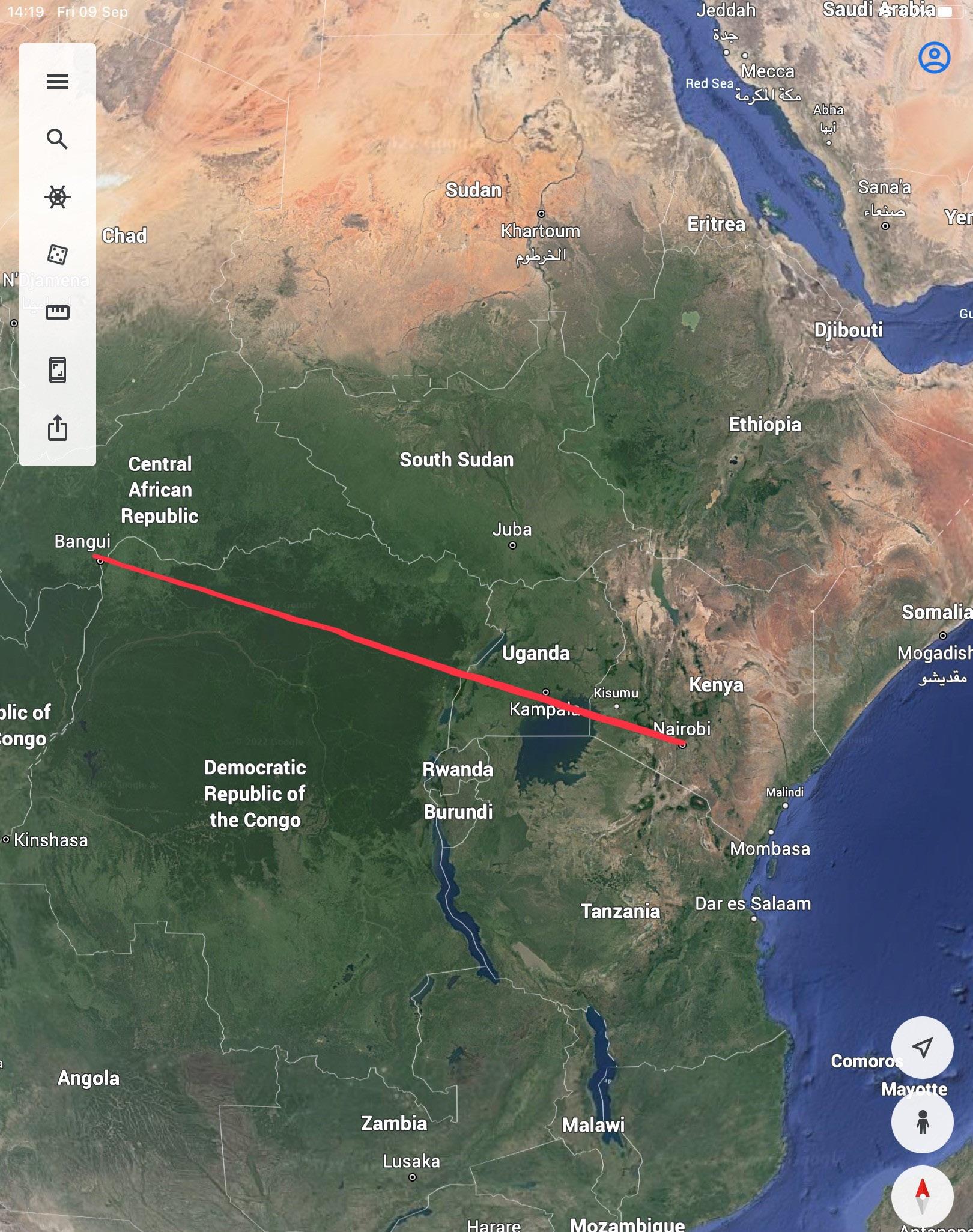

We decided that the little Aero Club was peaceful and more to our taste than the busy hotel, so we settled down with another round of Mocafs.
The previous evening at the communal dining table at the hotel, we had been involved in a few interesting conversations about how much freedom women should be allowed and how many wives a real man should have. Some Somali hotel guests had developed an unhealthy fascination that an Indian man and a white woman were travelling together, and I really did not feel up to explaining that I was not Ashraf’s slave or concubine.
François returned in time for a sundowner, proudly holding up his purchase. “Hey François, did you find a trunnion?” I asked.
He smiled mischievously, shrugging his shoulders to indicate ‘maybe’, his eyebrows wriggling in delight.
François had found a very good replacement in the form of a VW shock absorber with a housing to protect it.
It was too late in the day to begin work, so we celebrated with another round of beers.
By now the Bangui M’Poko Aero Club had become our second home and we were back early the following day. François and Ashraf had successfully managed to attach the VW part and housing. The aircraft was still on jacks and by midday everything was working without a hitch. The nosewheel performed perfectly every time the gear was selected ‘up’.
We decided that we would leave for Nairobi the following morning. We spent the remainder of the day paying landing and parking fees, refuelling, and filing a flight plan from Bangui M’Poko to Wilson Airport in Nairobi.
We settled our debt with François, confirming our success and unending friendship with a few more Mocafs.
We took off from Bangui on 4 May at 0500Z, again

allowing for a longer takeoff roll than usual. It was my turn to be PIC and I’m relieved to see no red light!
Our flight plan out of Bangui was IFR, routing overhead Buta Zega Airport in the DRC, direct to Entebbe in Uganda, and straight on to Nairobi.
We are finally cruising at our nominated speed of 150 ktas, unhampered by mechanical issues or bad weather.
Soon we leave the Central African Republic behind
Approach for runway 34 Bengui International Airport. Ashraf Khan.
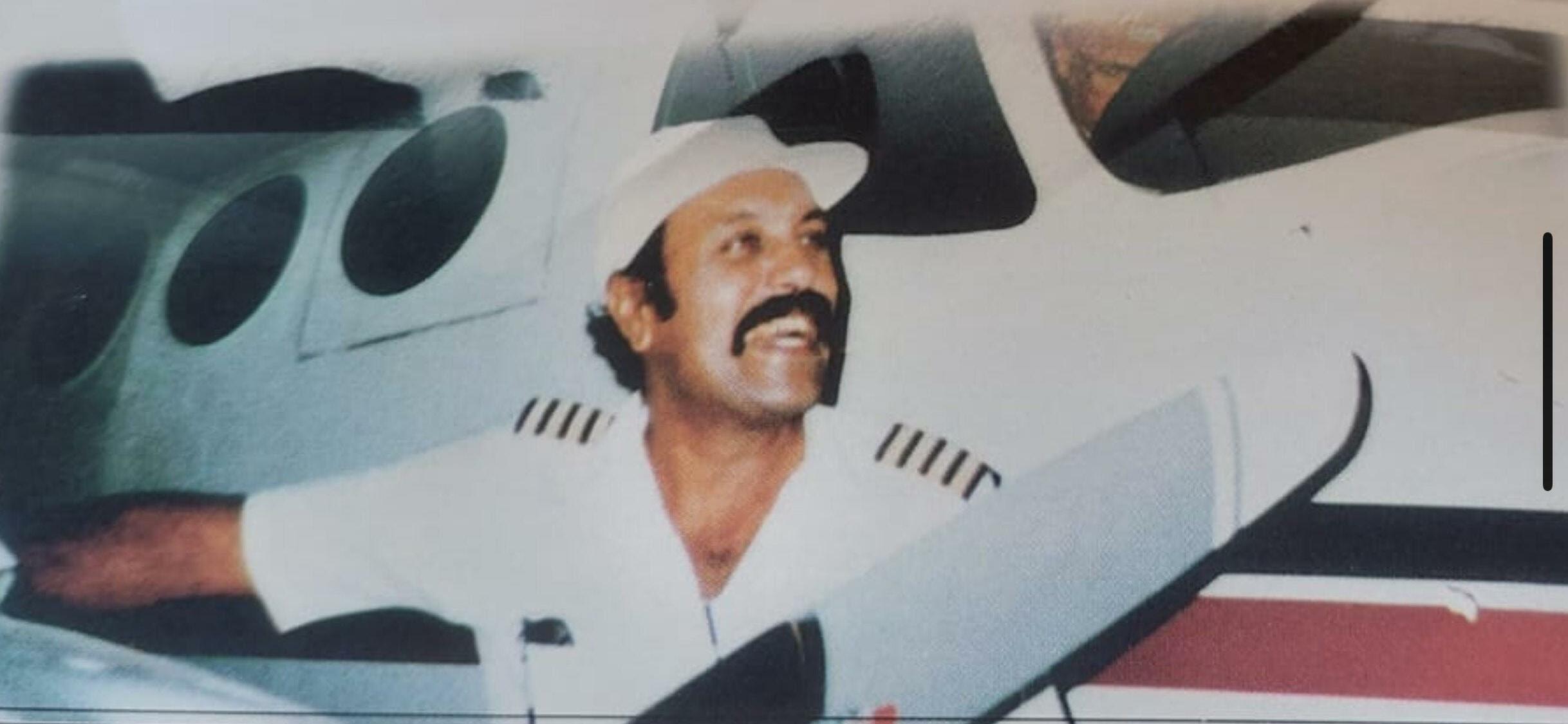
and reach the DRC, which would take most of the day to cross. We are flying over pristine forests, untouched by man’s avarice. These rain forests are the lungs of the world and I can’t help being moved by the magnificence of this tropical basin that extends for 3 million square kilometres.
The dense forest canopies are home to a myriad of exotic species such as the peculiar okapi with its stripy legs and prehensile lip. I picture neon butterflies flitting through the branches of giant mahogany trees whilst gorillas forage amongst lush ferns.
However, the further southeast we fly, the more the forest slowly diminishes, replaced with rural plots and farms. I am struck by how much of the forest has already been depleted and am saddened by what our so-called ‘superior’ species has done to this magnificent continent.
We were heading into familiar territory now, Rwanda, Burundi, and the Ruwenzori mountains – ‘The Mountains of the Moon’ as they were christened in 1889. These mystical mountains were thought by early travellers to be the source of the Nile.
Then we are overhead Entebbe. We are on the home run and both looking forward to getting home. Finally, we were handed over to Nairobi on 118.50.
We landed on home ground at 15h00Z, glad to be home. We had survived an amazing trip and experienced so much.
We left the Navion in the care of CMC aviation, for John Hall to collect. A few days later I wrote a comprehensive report of our trip and advised him to source the correct part for the nose wheel trunnion, emphasising that ours was a temporary fix.
The magnitude of the devastation cannot be appreciated until viewed from the air. Bald red patches encroach on areas that were once home to majestic trees which have been cut down to make room for palm trees, rubber trees and sugar cane.
Several weeks later, I heard that when John Hall was taking off from their ranch in Nanyuki, as the plane was building speed the entire nose wheel sheared off and was flung 30 metres into the bush. The Navion was found with its propellor buried in the ground and its tail sticking up in the air like a proverbial ostrich with its head in the sand.

The Hall’s arranged for a pilot and an engineer to bring a new propeller from Nairobi, and after fitting it, the pilot flew the aircraft to Wilson Airport to repair the rest.

They were fortunate that the damage was not as bad as they had originally anticipated, but they either ignored my advice or had never read the report that I had sent. The poor guy seemed to have bad luck when it came to aeroplanes.
I returned Johnathan’s King Radio and Trimble Trimpack. Without these the outcome may have been very different. There would have been no communication in the thunderstorm and no VOR or ILS guidance whilst attempting to land in pitch darkness in Bangui.
As good as we are at our jobs, I wouldn’t be telling this story without the incredible generosity of the people who made it all happen.





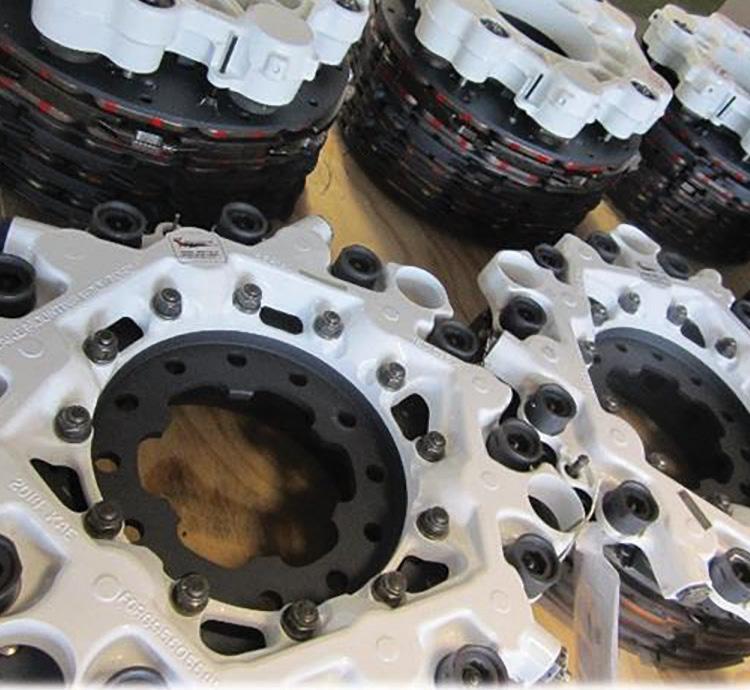
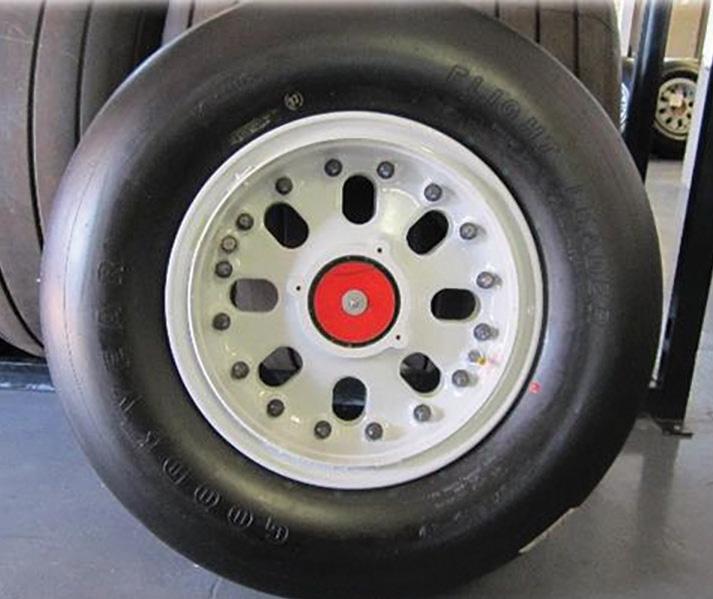
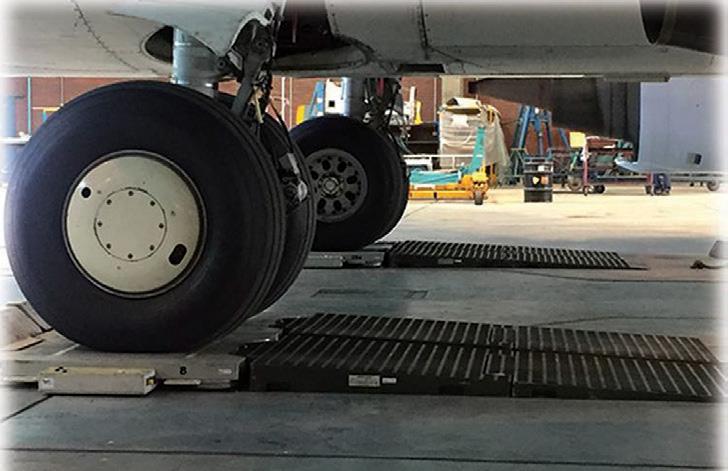

TOBACCO SALES WERE PROHIBITED
between 25 March and 17 August 2020 as part of the government’s response to the Covid-19 pandemic. In its entirety, the Beitbridge border stretches for 350-kilometres along a section of the Limpopo River that separates South Africa from Zimbabwe. Cross border informal businesses well established in Southern Africa are estimated to constitute 30 to 40 per cent of intra-regional trade.
Authorities estimate that around 30 percent of cigarettes sold in South Africa are smuggled from Zimbabwe. These include the Remington Gold, Pacific, Mega, Dullahs, Branson and Servilles brands. Mobile surveys reckon that during the ban between U$300 million U$500 million were lost in excise taxes on tobacco products while three hundred thousand jobs were lost.
Private security guards were deployed in an attempt to apprehend smugglers during Covid, that was until the mutilated body of a guard was thrown from a moving vehicle along a servitude road. Shortly after this the SA Government declared it to be illegal to have private security patrolling during curfew, stating that this job was the responsibility of the State security forces and police.
Several spots along the Limpopo river function as courier crossing points, while the ‘hyena’ men and the armed bandits are taking advantage of undocumented travellers, and State security (or border) officials help partially to secure their precarious enterprises, often for a ‘toll’ fee. Today, the hyena takes on a slightly evolved character, yet retaining a central role in assisted border crossings.
Smuggling of cigarettes, contraband, vehicles, humans and equipment to and from Zimbabwe into South Africa through illegal crossing points along the Limpopo River has become a normal daily business, but increased dramatically from the beginning of April 2020 when South African lockdown regulations banned cigarette sales.
HYENAS OF THE LIMPOPO
COVID ADVENTURE CONTINUES –
The highlight for me of course, was the freedom to pass unobstructed over forbidden Provincial Covid borders, crossing South Africa from its opposite points: from Cape Town to Pafuri.
The joy of landing and touching different lives, seeing different landscapes, birds and trees like they were all old friends, that at times during the lockdown I had wondered if I would ever see again. The privilege to witness an unmoving and silent landscape, as if I were the last remaining human on the Planet.

That was until reaching the Limpopo, where under cover of darkness, a thriving underworld comes to life.
During the entire flight from one end of the country to the other, there was not a single radio call from any other aircraft; a surreal experience passing Gauteng.
The contrast between the attitude and freedom of people’s lives trapped in the cities and towns to those living in game reserves was worlds apart. Everyone I met, from all walks of life had a common sentiment, that our government was using Covid to enrich themselves and force unreasonable control, combined with a hidden fear of the unknown consequences and truth with this virus.
To make this 2,500km trip possible, I have my own fuel in sealed 200lt drums safely positioned around South Africa. This luxury allowed me to bypass delays at airports where there would be little hope of refuelling, as well as to avoid all airports with CTRs.
Townships around big cities were unmoving, and as my helicopter’s shadow danced effortlessly over and between millions of tin shacks, my thoughts were heavy with despair for those trapped below. Minibus taxis lined empty streets and filled open spaces in a ramshackle manner and piles of garbage lay in heaps, plastic bags blown by the wind hung from trees and fences as a vile reminder of what

we humans have become. It was a stark contrast to the forests and lawns of Newlands and Rondebosch.
As terrible as that lockdown was, part of me rejoiced for the natural world to have a chance to recover from the human onslaught and I dreaded the return of the chaotic pre-Covid world.
Ferrying a helicopter is a slow and uncomfortable business. You are alone with your thoughts, with a sense of peace, and time feels like it stands still. The pain in your lower back and bum from the utter discomfort of a Bell 206 seat remains one of life’s mysteries. How was it possible to design such an amazing machine and completely bypass any concept of how a human is supposed to sit in it without needing a wheelchair after two and a half hours of flight? But the positive is that the pain is what keeps the pilot awake to enjoy the world below as it opens up like a book, revealing its hidden places.
Flying away from the safe haven of my little house after being so set into a routine of near confinement seemed a bit scary. What lay north of the mountains, far away? What obstacles would complicate the journey?
The curiosity and excitement of escape put me on a Red Bull high. I did wonder though, if for some reason I became stuck in the middle of nowhere with a mechanical snag, how would I get help? My AMO assured me that they would ‘make a plan’ but that did not inspire confidence.
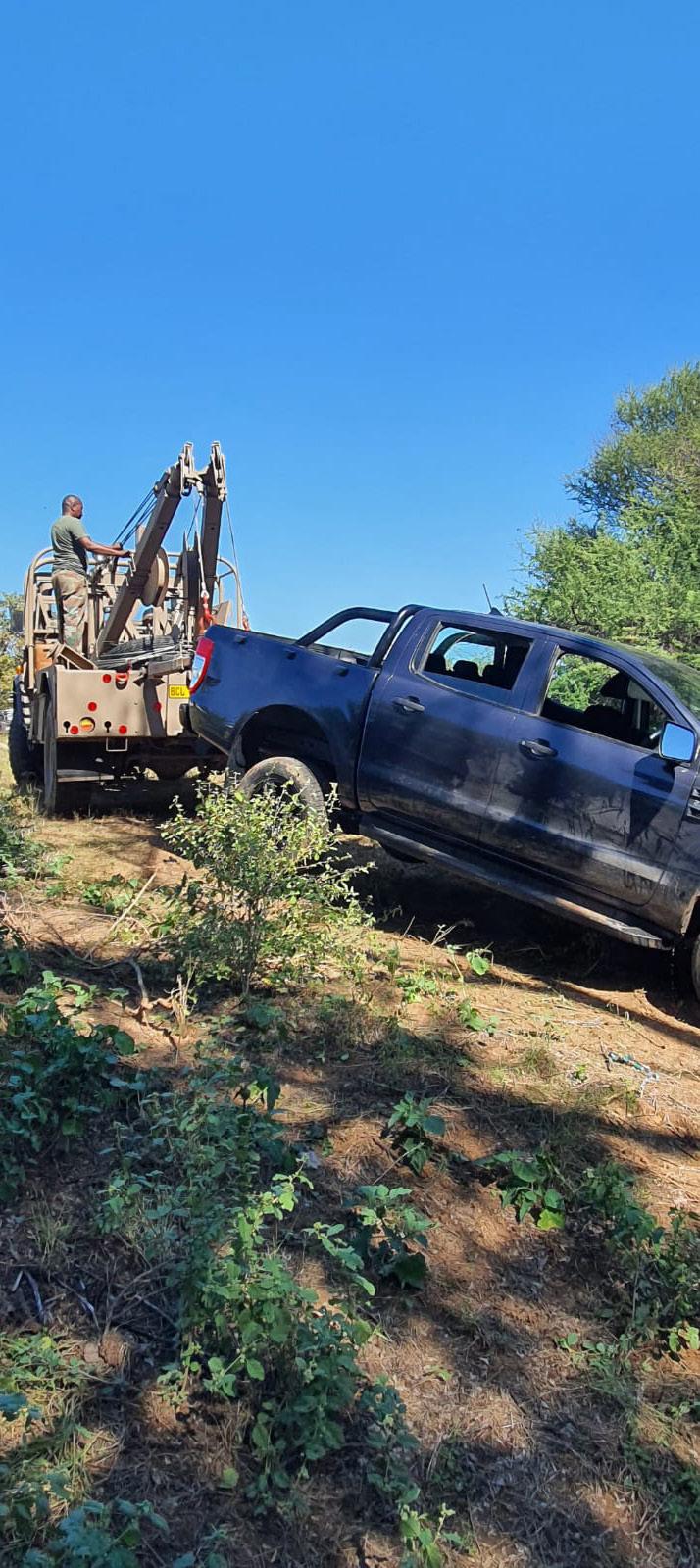
GL: Has Covid and finance defaults made it harder for sub-Saharan African airlines to finance aircraft?
JG: The Covid pandemic and associated fear has certainly damaged the industry on a global scale and we have seen many airlines failing, especially in jurisdictions where no support from government was received by the industry. The demise of so many airlines in a short period has negatively impacted on the risk rating of airlines in general which results in the reduced credit worthiness of airlines. But this is not unique to the African continent.
The accepted norm has been 50% for a number of years and it works well. In the current markets it might be attractive to lease more aircraft as there are very attractive lease opportunities available due to many aircraft having been returned to lessors as a result of the difficult market conditions caused by Covid. It might be worthwhile to lease more than 50% of your fleet in the short term, however airlines should be careful not to lose the benefits of owning some aircraft and having a substantive balance sheet.
GL: Do lenders prefer state-owned airlines to private ones?
GL: Does African aircraft finance have its own unique challenges – if so, what are they?
JG: No, African aircraft finance does not have unique challenges. Challenges which we see on the African continent are the same the world over: Sovereign risk, low capitalisation, continuity in management and shareholder support.
JG: There is no preference; lenders prefer certainty, continuity and shareholder support, all backed by a healthy balance sheet.
GL: Would you like to see a higher ratification/ operationalisation of the Cape Town Convention (CTC)?
GL: What percentage of an airline’s fleet do you think should be leased?
JG: Full ratification of the CTC would certainly be beneficial to the country and citizens as it will allow a reduced premium when Export Credit Agency (ECA) backed funding is raised on new aircraft, and
furthermore provides certainly to lenders as to the legal process, especially in the event where an aircraft need to be repossessed.
GL: Does the CTC unfairly favour the original equipment manufacturers (OEM) and lessors at the expense of other creditors?
JG: No, it does not favour the OEM. In fact the OEMs do not benefit at all from the CTC. Once an aircraft is sold, it is sold. The CTC benefits airlines and passengers as it provides certainty on how the aircraft as secured assets under secured loans will be dealt with from a legal perspective in the event of a default and therefore more funding is available to airlines.

GL: Is the 6% expected African GDP growth ever going to happen?
JG: I am not an economist, but I am an optimist and I do believe if we all work hard and do more than what is expected of us, we might just make it happen.
GL: If the Single African Air Transport Market (SAATM) liberalisation made sub Saharan airlines even less viable/sustainable, that would be bad for the lenders – so you are opposed to open skies?
JG: No, I am not opposed to open skies. I don’t think that liberalisation makes airlines less viable, it has the opposite effect as it forces airlines to be more efficient in a more competitive environment providing passengers with more route options at more competitive pricing.
an air bridge. These entities are able to step in as Junior Lenders making it more attractive to Senior Lenders to provide aircraft finance.
GL: Has SAA emerged from business rescue as a lendable institution? Is it still creditworthy?
JG: Difficult question and definitely dependent on the outcome of the privatisation deal currently being implemented. The usual parameters such as capitalisation, revenue generation, operating efficiencies and affordable debt obligations will determine the credit worthiness.
GL: Are there new opportunities post Covid?
JG: Yes. We have seen a lot of start-up airlines emerge since traveling opened up again. This is due to many airlines restructuring their fleets in terms of the impact of the pandemic and therefore there are many attractive lease opportunities as well as buy opportunities available in the market.
The important points to remember in order to raise commercial funding are: A track record of several years; a steady cashflow stream; a solid sustainable business plan and a strong well capitalised balance sheet are all required.
GL: What are the current and future roles of the ECA banks likely to be?
JG: ECA funding remains a powerful funding instrument on the African continent as it can be used to credit enhance the weaker credits. With regards to the wider role of development banks such as Afrexim Bank and AFDB, aviation is clearly part of the infrastructure required on the African continent as it can be considered the same as building a bridge – just
A start-up cannot offer this and needs venture capital which is raised on the back of a sustainable business plan backed by strong management with the relevant track record which the investors can believe in and therefore invest. This is clearly more risky than commercial funding and therefore also requires a higher return. Costs and efficiencies are the most important factors to manage at all times as it will be difficult to find the required funds from investors.
THE FAA ORDERED BOEING to study the impact of pilot performance on a broader range of potential failures than had been agreed to previously. The FAA also repeated warnings from last month that Boeing had additional work to perform on safety analyses it submitted to the agency. “We request Boeing to review all of the catastrophic hazards” to ensure that potential actions by pilots had been taken into account, the FAA said.
The FAA notification is the latest indication that the process of approving the last two 737 Max models is behind schedule and that there are tensions between Boeing and its regulator. Earlier versions of the Max are in service, while others are awaiting certification.

Once the original model in a family of airliners is approved, it has traditionally been relatively easy for later versions featuring nearly identical engines
and other systems to receive certification. But legal changes ordered by Congress after two fatal Max crashes in 2018 and 2019, combined with caution by FAA officials, have dramatically complicated work on the remaining Max approvals.
Last month, the FAA sent a letter to Boeing saying for the first time that the Max 7 was in danger of not being certified by the end of the year. Earlier this month, the regulator sent a letter saying it didn’t expect to conclude certification of the larger Max 10 until next summer.
Congress in a 2020 law passed in response to the Max crashes that said all new airliners must have modern alerting systems for emergencies, but gave Boeing two years to complete the process of certifying the remaining two Max jets.
asking more questions about
aircraft, increasing the likelihood that the company will be unable to complete the certification process by late December and have to undertake a costly redesign.
FLYSAFAIR HAS ANNOUNCED that, on the back of International Air Service Licencing Council Approvals, it will be operating flights from Cape Town and Johannesburg to Gaborone, Livingstone, Luanda, Lusaka, Maputo, and Victoria Falls. In addition, the airline has been approved for frequencies from Johannesburg to Bulawayo, Nairobi, and Seychelles, as well as between Cape Town and Windhoek. They are also hoping the pending application to fly to Zanzibar will be approved soon.
FlySafair says it has received approval to operate flights to 11 new destinations within the Southern African region, following a meeting of the Air Services Licensing Council of South Africa (ASLC).

Various bilateral agreements exist between South Africa and neighbouring countries which govern the
number of weekly flights that can be operated by different airlines in these markets. In South Africa these frequencies are awarded to airlines by the ASLC which is part of the Department of Transport, the group said.
Its application for routes between Johannesburg and Harare, Windhoek and Zanzibar and additional frequencies to Mauritius are still pending, says Kirby Gordon, chief marketing officer at FlySafair. “While this is a big milestone, there is still a fair amount of work ahead of us from an operational perspective,” he added.
The airline is growing strongly and like its competitors, Airlink and Cemair, is stepping into the gap in the regional airline market created by the collapse of SA Express and Comair.

TRANSACTIONS CLOSED by IADA dealers
during the 2022 third quarter remained strong at 331 sales transactions, compared to 340 in the third quarter of 2021. Year-to-date IADA dealers have completed 929 deals, up even from the frantic pace set in 2021 with 869 transactions over the equivalent period. With over 60 percent of transactions in cash, global buyers and sellers seem somewhat immune to rising interest rates.
“Obviously, from the international perspective, stability in Europe and Asia are wildcards for the future, however used aircraft sales were strong in the third
quarter and the fourth quarter outlook is encouraging,” said newly installed IADA Chair Zipporah Marmor. Marmor is Vice President of Aircraft Transactions at ACASS, headquartered in Montreal, with offices in the U.S., Europe, Asia, India, and the Mideast/Africa.
Third quarter survey responses from IADA membership show a slight increase in supply while demand remains stable for the next six months in the markets for turboprops and light, mid-size, and ultralong-range jets. Pricing across all aircraft categories is also projected to be steady.
International Aircraft Dealers Association’s 2022 Third Quarter Market Report documents a flourishing resale market for business aircraft with a balanced outlook for the next six months.





A1A Flight Examiner (Loutzavia)
Jannie Loutzis 012 567 6775 / 082 416 4069 jannie@loutzavia.co.za www.loutzavia.co.za
Adventure Air Lande Milne 012 543 3196 / Cell: 066 4727 848 l.milne@venture-sa.co.za www.ventureglobal.biz
AES (Cape Town) Erwin Erasmus 082 494 3722 erwin@aeroelectrical.co.za www.aeroelectrical.co.za
AES (Johannesburg) Danie van Wyk 011 701 3200 office@aeroelectrical.co.za www.aeroelectrical.co.za
Aerocore Jacques Podde 082 565 2330 jacques@aerocore.co.za www.aerocore.co.za
Aero Engineering & PowerPlant Andre Labuschagne012 543 0948 aeroeng@iafrica.com
Aero Services (Pty) LtdChris Scott 011 395 3587 chris@aeroservices.co.za www.aeroservices.co.za
Aeronav AcademyDonald O’Connor 011 701 3862 info@aeronav.co.za www.aeronav.co.za
Aeronautical Aviation Clinton Carroll 011 659 1033 / 083 459 6279 clinton@aeronautical.co.za www.aeronautical.co.za
Aerotric (Pty) LtdRichard Small 083 488 4535 aerotric@aol.com
Aircraft Assembly and Upholstery Centre Tony/Siggi Bailes 082 552 6467 anthony@rvaircraft.co.za www.rvaircraft.co.za
Aircraft Finance Corporation & Leasing Jaco Pietersen +27 [0]82 672 2262
jaco@airfincorp.co.za Jason Seymour+27 [0]82 326 0147 jason@airfincorp.co.za www.airfincorp.co.za
Aircraft General Spares Eric or Hayley084 587 6414 or 067 154 2147 eric@acgs.co.za or hayley@acgs.co.za www.acgs.co.za
Aircraft Maintenance @ Work Opelo / Frik012 567 3443
frik@aviationatwork.co.za_ opelonke@aviationatwork.co.za
Aircraft Maintenance International Pine Pienaar 083 305 0605
gm@aminternational.co.za
Aircraft Maintenance International Wonderboom Thomas Nel 082 444 7996 admin@aminternational.co.za
Air Line Pilots’ Association Sonia Ferreira 011 394 5310 alpagm@iafrica.com www.alpa.co.za
Airshift Aircraft Sales Eugene du Plessis082 800 3094 eugene@airshift.co.za www.airshift.co.za
Airvan Africa Patrick Hanly082 565 8864 airvan@border.co.za www.airvan.co.za
Algoa Flying Club Sharon Mugridge041 581 3274 info@algoafc.co.za www.algoafc.co.za
Alpha One Aviation Opelo 082 301 9977 on@alphaoneaviation.co.za www.alphaoneaviation.co.za
Alpi Aviation SADale De Klerk 082 556 3592 dale@alpiaviation.co.za www.alpiaviation.co.za
Apco (Ptyd) Ltd Tony/Henk + 27 12 543 0775 apcosupport@mweb.co.za www.apcosa.co.za
Aref Avionics Hannes Roodt 082 462 2724 arefavionics@border.co.za
Atlas Aviation Lubricants Steve Cloete 011 917 4220 Fax: 011 917 2100 sales.aviation@atlasoil.co.za www.atlasaviation.co.za
ATNS Percy Morokane011 607 1234 percymo@atns.co.za www.atns.com
Aviation Direct Andrea Antel 011 465 2669 info@aviationdirect.co.za www.aviationdirect.co.za
BAC Aviation AMO 115 Micky Joss 035 797 3610 monicad@bacmaintenance.co.za
Blackhawk Africa Cisca de Lange083 514 8532 cisca@blackhawk.aero www.blackhawk.aero
Blue Chip Flight School Henk Kraaij012 543 3050 bluechip@bluechip-avia.co.za www.bluechipflightschool.co.za
Border Aviation Club & Flight School Liz Gous 043 736 6181 admin@borderaviation.co.za www.borderaviation.co.za
Breytech Aviation cc 012 567 3139 Willie Breytenbach admin@breytech.co.za
Bundu Aviation Phillip Cronje083 485 2427 info@bunduaviation.co.za www.bunduaviation.co.za
Celeste Sani Pak & Inflight Products Steve Harris 011 452 2456 admin@chemline.co.za www.chemline.co.za
Cape Aircraft InteriorsSarel Schutte 021 934 9499 michael@wcaeromarine.co.za www.zscai.co.za
Cape Town Flying Club Beverley Combrink021 934 0257 / 082 821 9013 info@capetownflyingclub.co.za www.@capetownflyingclub.co.za
Century Avionics cc Carin van Zyl011 701 3244 sales@centuryavionics.co.za www.centuryavionics.co.za
Chemetall Wayne Claassens011 914 2500 wayne.claassens@basf.com www.chemetall.com
Chem-Line Aviation & Celeste Products
Steve Harris 011 452 2456 sales@chemline.co.za www.chemline.co.za
Comporob Composite Repair & ManufactureFelix Robertson 072 940 4447 083 265 3602 comporob@lantic.net www.comporob.co.za
Corporate-Aviators/Affordable Jet SalesMike Helm 082 442 6239 corporate-aviators@iafrica.com www.corporate-aviators.com
C. W. Price & Co Kelvin L. Price 011 805 4720 cwp@cwprice.co.za www.cwprice.co.za
Dart Aeronautical Jaco Kelly011 827 8204 dartaero@mweb.co.za
Dart Aircraft Electrical Mathew Joubert 011 827 0371
Dartaircraftelectrical@gmail.com www.dartaero.co.za
DJA Aviation Insurance 011 463 5550 0800Flying mail@dja-aviation.co.za www.dja-aviation.co.za
Dynamic PropellersAndries Visser 011 824 5057 082 445 4496 andries@dynamicpropeller.co.za www.dynamicpropellers.co.za
Eagle Aviation Helicopter Division Tamryn van Staden082 657 6414 tamryn@eaglehelicopter.co.za www.eaglehelicopter.co.za
Eagle Flight AcademyMr D. J. Lubbe 082 557 6429 training@eagleflight.co.za www.eagleflight.co.za
Elite Aviation Academy Jacques Podde 082 565 2330 info@eliteaa.co.za www.eliteaa.co.za
Enstrom/MD HelicoptersAndrew Widdall 011 397 6260 aerosa@safomar.co.za www.safomar.co.za
Era Flug Flight TrainingPierre Le Riche 021 934 7431 info@era-flug.com www.era-flug.com
Execujet Africa 011 516 2300 enquiries@execujet.co.za www.execujet.com
Federal Air Rachel Muir 011 395 9000 shuttle@fedair.com www.fedair.com
Ferry Flights int.inc.Michael (Mick) Schittenhelm 082 442 6239 ferryflights@ferry-flights.com www.ferry-flights.com
Fireblade Aviation 010 595 3920 info@firebladeaviation.com www.firebladeaviation.com
Flight Training CollegeCornell Morton 044 876 9055 ftc@flighttrainning.co.za www.flighttraining.co.za
Flight Training ServicesAmanda Pearce 011 805 9015/6 amanda@fts.co.za www.fts.co.za
Fly Jetstream Aviation Henk Kraaij 083 279 7853 charter@flyjetstream.co.za www.flyjetstream.co.za
Flying Frontiers Craig Lang082 459 0760 CraigL@fairfield.co.za www.flyingfrontiers.com
Flying Unlimited Flight School (Pty) Ltd Riaan Struwig082 653 7504 / 086 770 8376 riaan@ppg.co.za www.ppg.co.za
Foster Aero International Dudley Foster 011 659 2533 info@fosteraero.co.za www.fosteraero.co.za
Gemair Andries Venter 011 701 2653 / 082 905 5760 andries@gemair.co.za
GIB Aviation Insurance Brokers Richard Turner 011 483 1212 aviation@gib.co.za www.gib.co.za
Guardian Air 011 701 3011 082 521 2394 ops@guardianair.co.za www.guardianair.co.za
Heli-Afrique cc Tino Conceicao 083 458 2172 tino.conceicao@heli-afrique.co.za
Henley Air Andre Coetzee 011 827 5503 andre@henleyair.co.za www.henleyair.co.za
Hover Dynamics Phillip Cope074 231 2964 info@hover.co.za www.hover.co.za
Indigo Helicopters Gerhard Kleynhans082 927 4031 / 086 528 4234 veroeschka@indigohelicopters.co.za www.indigohelicopters.co.za
IndigoSat South Africa - Aircraft TrackingGareth Willers 08600 22 121 sales@indigosat.co.za www.indigosat.co.za
Integrated Avionic SolutionsGert van Niekerk 082 831 5032 gert@iasafrica.co.za www.iasafrica.co.za
International Flight Clearances Steve Wright076 983 1089 (24 Hrs) flightops@flyifc.co.za www.flyifc.co.za
Investment Aircraft Quinton Warne 082 806 5193 aviation@lantic.net www.investmentaircraft.com
Jabiru Aircraft Len Alford 044 876 9991 / 044 876 9993 info@jabiru.co.za www.jabiru.co.za
Jim Davis Books Jim Davis 072 188 6484 jim@border.co.za www.jimdavis.co.za
Joc Air T/A The Propeller ShopAiden O’Mahony011 701 3114 jocprop@iafrica.com
Kishugu Aviation+27 13 741 6400 comms@kishugu.com www.kishugu.com/kishugu-aviation
Kit Planes for Africa Stefan Coetzee 013 793 7013 info@saplanes.co.za www.saplanes.co.za
Kzn Aviation (Pty) LtdMelanie Jordaan 031 564 6215 mel@kznaviation.co.za www.kznaviation.co.za
Lanseria Aircraft Interiors Francois Denton 011 659 1962 / 076 810 9751 francois@aircraftcompletions.co.za
Lanseria International Airport Mike Christoph 011 367 0300 mikec@lanseria.co.za www.lanseria.co.za
Legend Sky083 860 5225 / 086 600 7285 info@legendssky.co.za www.legendsky.co.za
Litson & Associates (Pty) Ltd OGP, BARS, Resources Auditing & Aviation Training karen.litson@litson.co.za Phone: 27 (0) 21 8517187 www.litson.co.za
Litson & Associates Risk Management Services (Pty) Ltd. eSMS-S/eTENDER/ eREPORT/Advisory Serviceskaren.litson@litson.co.za Phone: 27 (0) 8517187 www.litson.co.za
Loutzavia Aircraft Sales Henry Miles 082 966 0911 henry@loutzavia.co.za www.loutzavia.co.za
Loutzavia Flight TrainingGerhardt Botha 012 567 6775 ops@loutzavia.co.za www.loutzavia.co.za
Loutzavia-Pilots and Planes Maria Loutzis 012 567 6775 maria@loutzavia.co.za www.pilotsnplanes.co.za
Loutzavia Rand Frans Pretorius 011 824 3804 rand@loutzavia.co.za www@loutzavia.co.za
Lowveld Aero Club Pugs Steyn013 741 3636 Flynow@lac.co.za
Marshall EagleLes Lebenon 011 958 1567 les@marshalleagle.co.za www.marshalleagle.co.za
Maverick Air Charters Chad Clark 083 292 2270 Charters@maverickair.co.za www.maverickair.co.za
MCC Aviation Pty Ltd Claude Oberholzer 011 701 2332 info@flymcc.co.za www.flymcc.co.za
MH Aviation Services (Pty) Ltd Marc Pienaar 011 609 0123 / 082 940 5437 customerrelations@mhaviation.co.za www.mhaviation.co.za
M and N Acoustic Services cc Martin de Beer 012 689 2007/8 calservice@mweb.co.za
Metropolitan Aviation (Pty) Ltd Gert Mouton 082 458 3736 herenbus@gmail.com
Money Aviation Angus Money083 263 2934 angus@moneyaviation.co.za www.moneyaviation.co.za
MS Aviation Gary Templeton 082 563 9639 gary.templeton@msaviation.co.za www.msaviation.co.za
North East Avionics Keith Robertson +27 13 741 2986 keith@northeastavionics.co.za deborah@northeastavionics.co.za www.northeastavionics.co.za
Orsmond Aviation 058 303 5261 info@orsmondaviation.co.za www.orsmondaviation.co.za
Owenair (Pty) LtdClive Skinner 082 923 9580 clive.skinner@owenair.co.za www.owenwair.co.za
Pacair Wayne Bond 033 386 6027 pacair@telkomsa.net
PFERD-South Africa (Pty) Ltd Hannes Nortman 011 230 4000 hannes.nortman@pferd.co.za www.pferd.com
Pipistrel Kobus Nel 083 231 4296 kobus@pipistrelsa.co.za www.pipistrelsa.co.za
Plane Maintenance Facility Johan 083 300 3619 pmf@myconnection.co.za
Precision Aviation Services Marnix Hulleman 012 543 0371 marnix@pasaviation.co.za www.pasaviation.co.za
PSG Aviation Reon Wiese 0861 284 284 reon.wiese@psg.co.za www.psg aviation.co.za
Rainbow SkyReach (Pty) LtdMike Gill 011 817 2298 Mike@fly-skyreach.com www.fly-skyreach.com
Rand Airport Stuart Coetzee 011 827 8884 stuart@randairport.co.za www.randairport.co.za
Robin Coss Aviation Robin Coss 021 934 7498 info@cossaviation.com www.cossaviation.co.za
SAA Technical (SOC) Ltd SAAT Marketing 011 978 9993 satmarketing@flysaa.com www.flysaa.com/technical
SABRE Aircraft Richard Stubbs 083 655 0355 richardstubbs@mweb.co.za www.aircraftafrica.co.za
SA Mooney Patrick Hanly082 565 8864 samooney@border.co.za www.samooney.co.za
Savannah Helicopters De 082Jager 444 1138 / 044 873 3288 dejager@savannahhelicopters.co.za www.savannahhelicopters.co.za
Scenic Air Christa van Wyk+264 612 492 68 windhoek@scenic-air.com www.scenic-air.com
Sheltam Aviation Durban Susan Ryan083 505 4882 susanryan@sheltam.com www.sheltamaviation.com
Sheltam Aviation PE Brendan Booker 082 497 6565 brendanb@sheltam.com www.sheltamaviation.com
Sky-Tech Heinz Van Staden 082 720 5210 sky-tech@telkomsa.net www.sky-tech.za.com
Sling AircraftKim Bell-Cross 011 948 9898 sales@airplanefactory.co.za www.airplanefactory.co.za
Solenta Aviation (Pty Ltd)Paul Hurst 011 707 4000 info@solenta.com www.solenta.com
Southern Energy Company (Pty) LtdElke Bertram +264 8114 29958 johnnym@sec.com.na www.sec.com.na
Southern Rotorcraft cc Mr Reg DenysschenTel no: 0219350980 sasales@rotors-r-us.com www.rotors-r-us.com
Starlite Aero Sales Klara Fouché +27 83 324 8530 / +27 31 571 6600 klaraf@starliteaviation.com www.starliteaviation.com
Starlite Aviation OperationsTrisha Andhee +27 82 660 3018/ +27 31 571 6600 trishaa@starliteaviation.com www.starliteaviation.com
Starlite Aviation Training AcademyDurban: +27 31 571 6600 Mossel Bay: +27 44 692 0006 train@starliteaviation.com www.starliteaviation.com
Status Aviation (Pty) LtdRichard Donian 074 587 5978 / 086 673 5266 info@statusaviation.co.za www.statusaviation.co.za
Superior Pilot Services Liana Jansen van 0118050605/2247Rensburg info@superiorair.co.za www.superiorair.co.za
The Copter ShopBill Olmsted 082 454 8555 execheli@iafrica.com www.execheli.wixsite.com/the-coptershop-sa
Titan Helicopter Group 044 878 0453 info@titanhelicopters.com www.titanhelicopters.com
TPSC
Dennis Byrne 011 701 3210 turboprop@wol.co.za
Trio Helicopters & Aviation cc CR Botha or FJ Grobbelaar 011 659 1022 stoffel@trioavi.co.za/frans@trioavi.co.za www.trioavi.co.za
Tshukudu Trailers Pieter Visser 083 512 2342 deb@tshukudutrailers.co.za www.tshukudutrailers.co.za
U Fly Training AcademyNikola Puhaca 011 824 0680 ufly@telkomsa.net www.uflyacademy.co.za
United Charter cc Jonathan Wolpe 083 270 8886 jonathan.wolpe@unitedcharter.co.za www.unitedcharter.co.za
United Flight SupportClinton Moodley/Jonathan Wolpe076 813 7754 / 011 788 0813 ops@unitedflightsupported.com www.unitedflightsupport.com
Unique Air Charter Nico Pienaar 082 444 7994 nico@uniqueair.co.za www.uniqueair.co.za
Unique Flight Academy Nico Pienaar 082 444 7994 nico@uniqueair.co.za www.uniqueair.co.za
Van Zyl Aviation Services Colette van Zyl012 997 6714 admin@vanzylaviationco.za www.vanzylaviation.co.za
Vector AerospaceJeff Poirier +902 888 1808 jeff.poirier@vectoraerospace.com www.vectoraerospace.com
Velocity Aviation Collin Pearson 011 659 2306 / 011 659 2334 collin@velocityaviation.co.za www.velocityaviation.co.za
Villa San Giovanni Luca Maiorana 012 111 8888 info@vsg.co.za www.vsg.co.za
Vortx Aviation Bredell Roux 072 480 0359 info@vortx.co.za www.vortxaviation.com
Wanafly Adrian Barry082 493 9101 adrian@wanafly.net www.wanafly.co.za
Windhoek Flight Training Centre Thinus Dreyer0026 40 811284 180 pilots@flywftc.com www.flywftc.com
Wings n Things Wendy Thatcher 011 701 3209 wendy@wingsnthings.co.za www.wingsnthings.co.za
Witbank Flight SchoolAndre De Villiers 083 604 1718 andredv@lantic.net www.waaflyingclub.co.za
Wonderboom Airport Peet van Rensburg012 567 1188/9 peet@wonderboomairport.co.za www.wonderboomairport.co.za
Zandspruit Bush & Aero Estate Martin Den Dunnen 082 449 8895 martin@zandspruit.co.za www.zandspruit.co.za
Zebula Golf Estate & SPA Reservations 014 734 7700 reception@zebula.co.za www.zebula.co.za